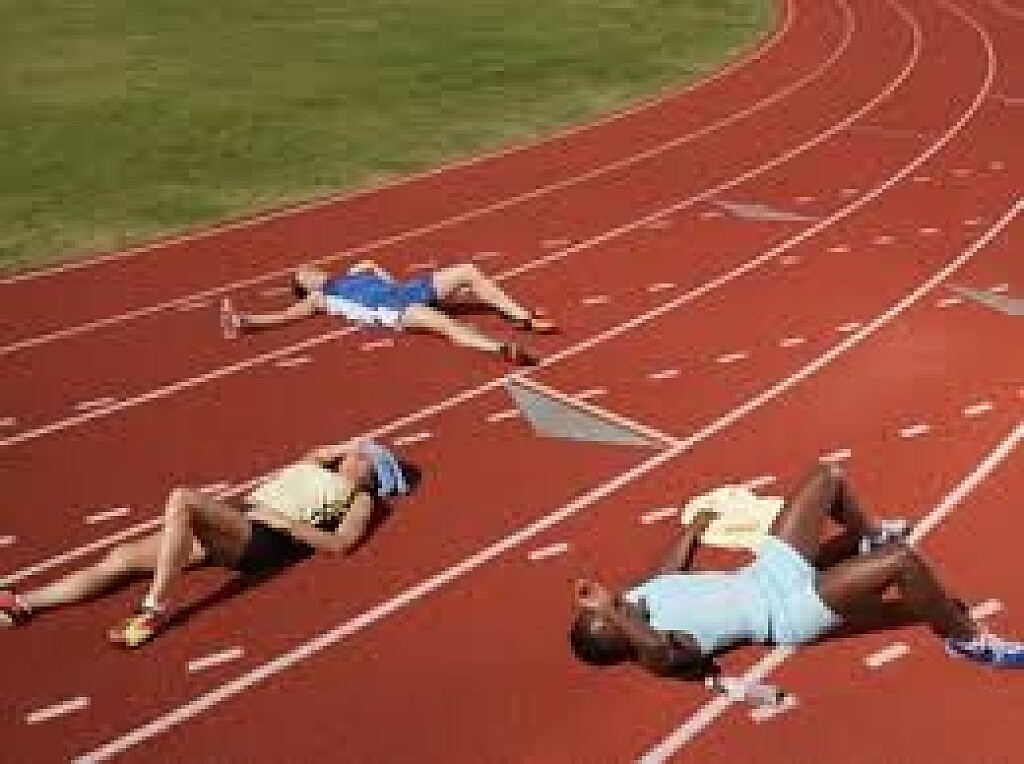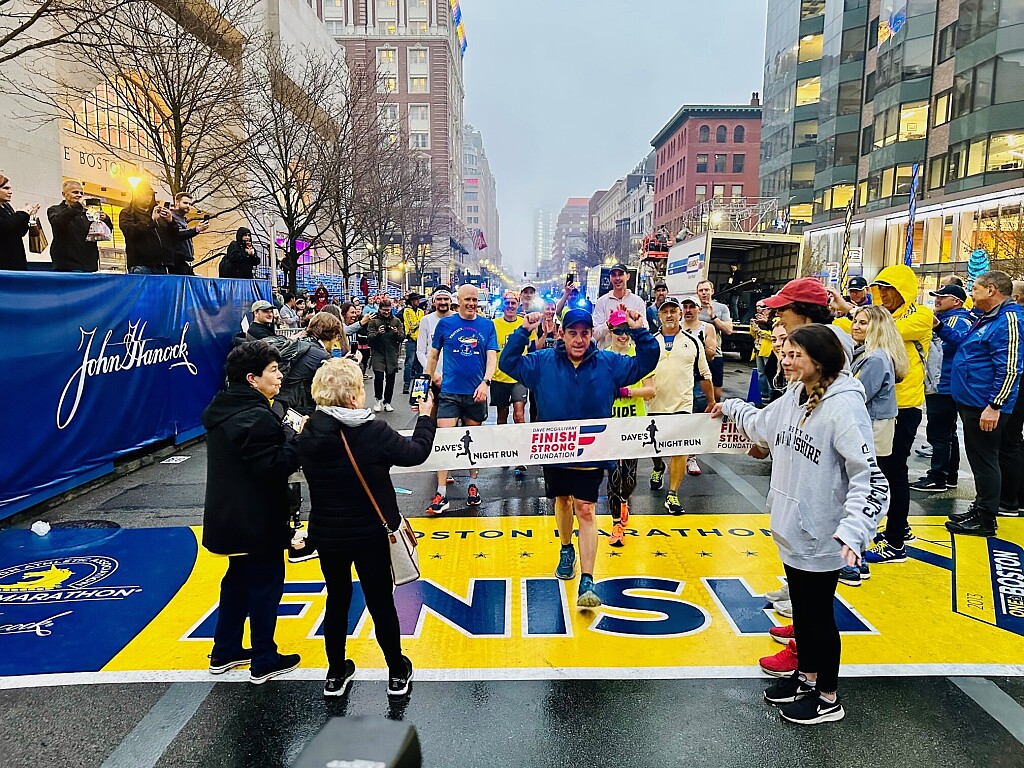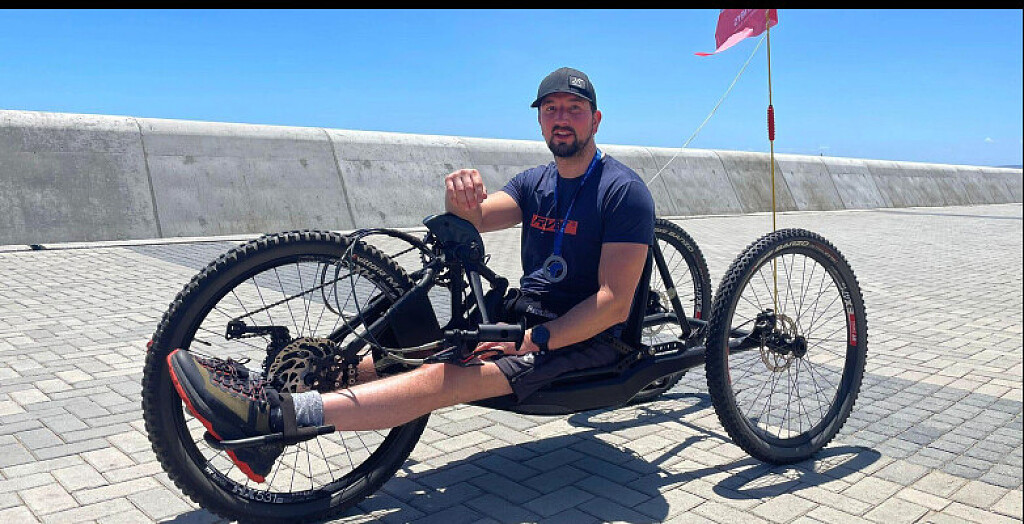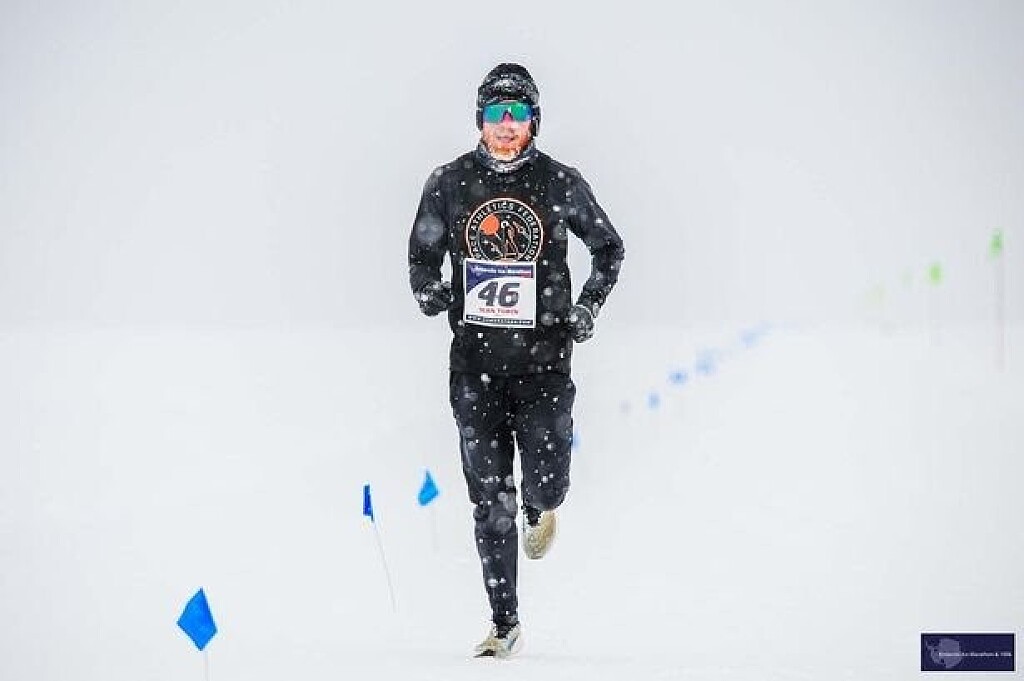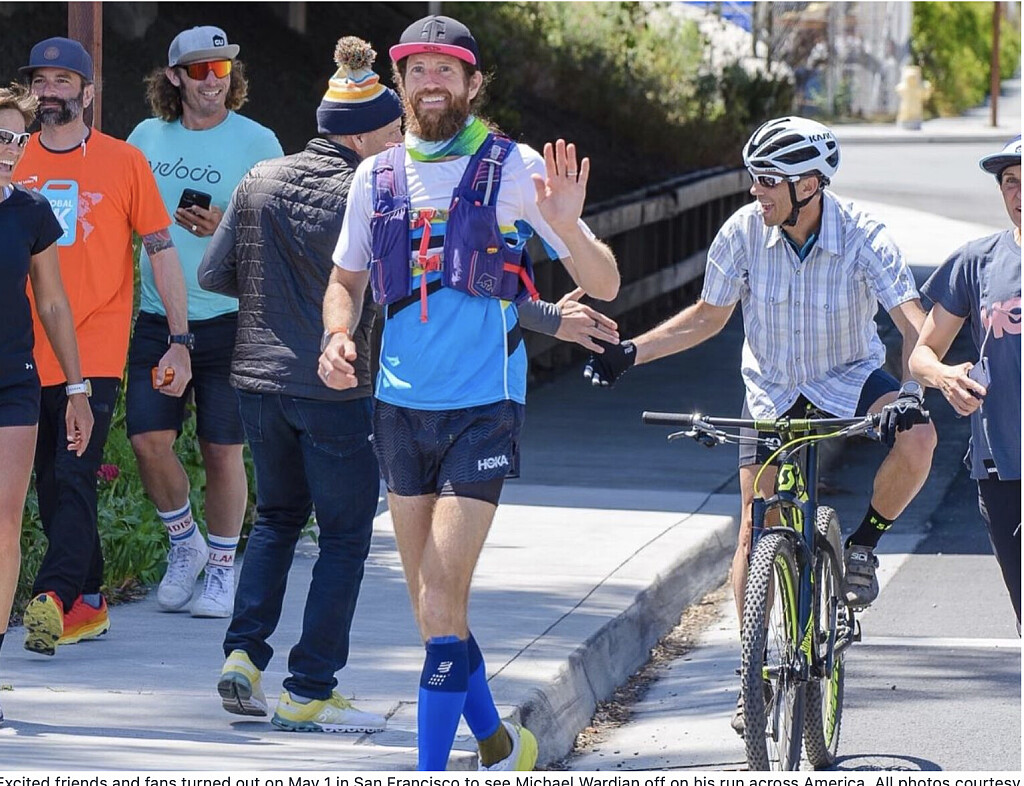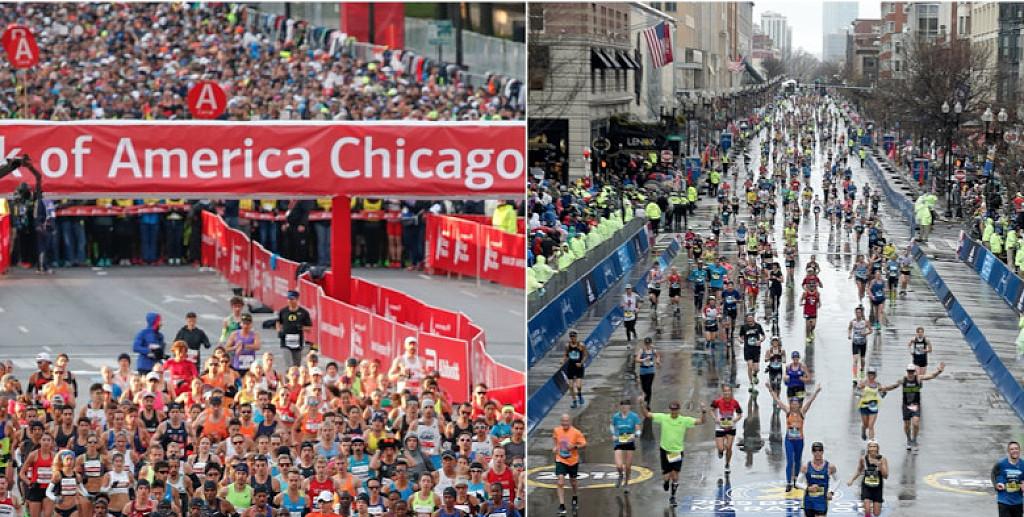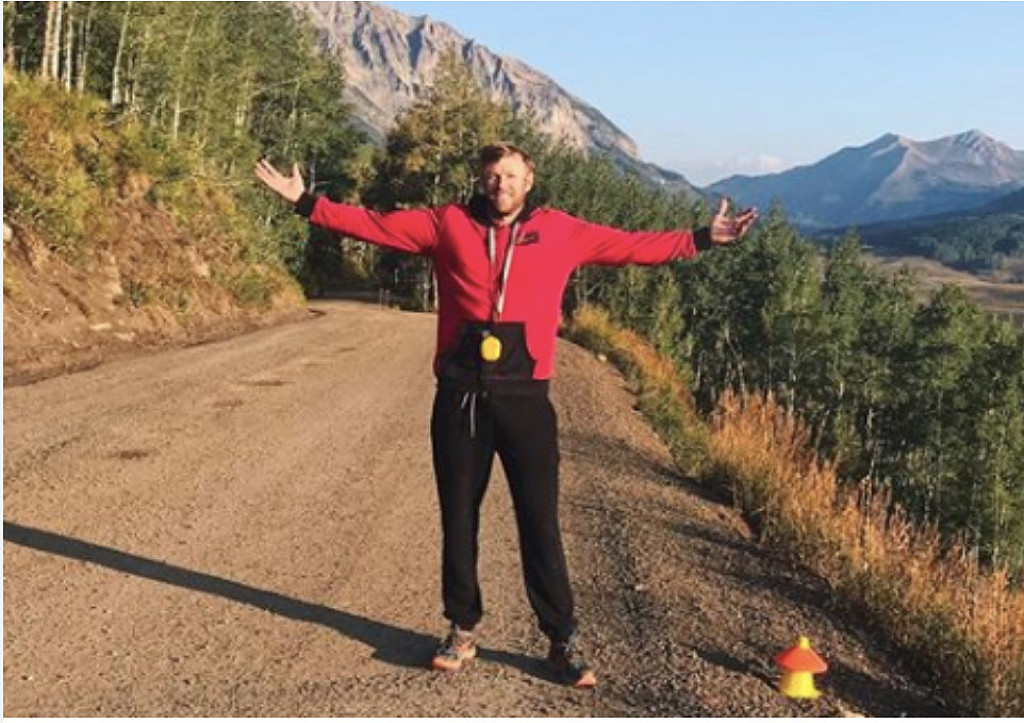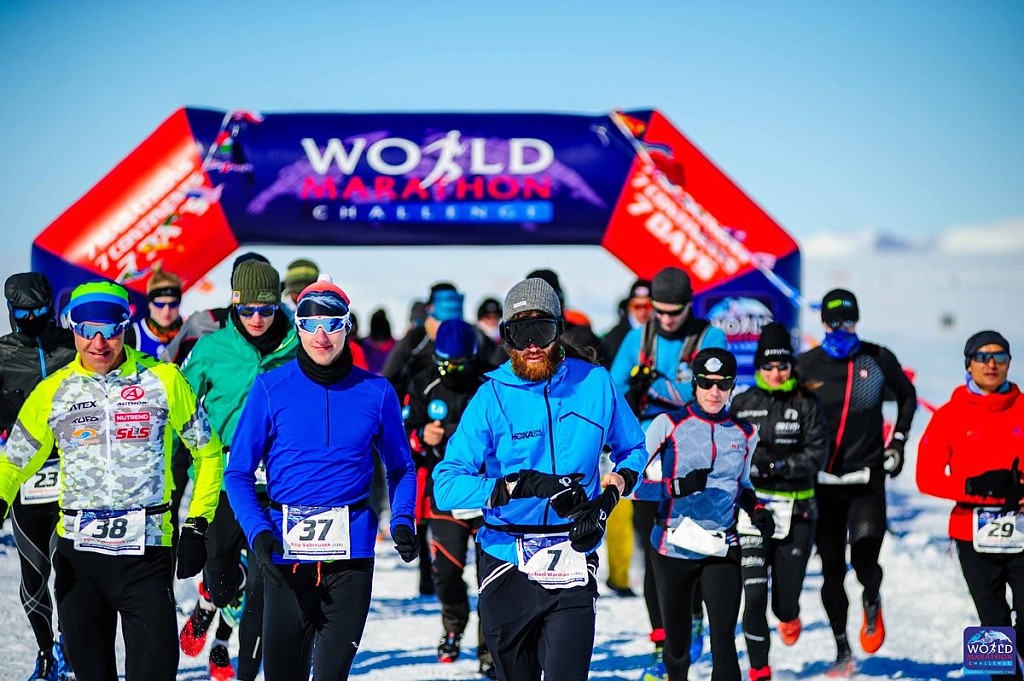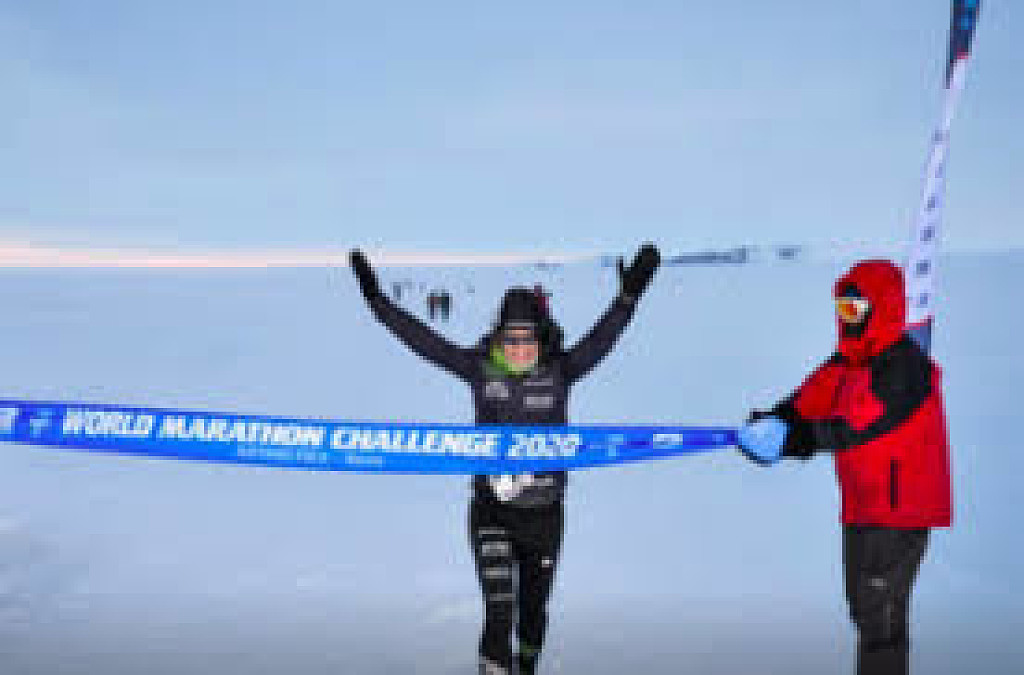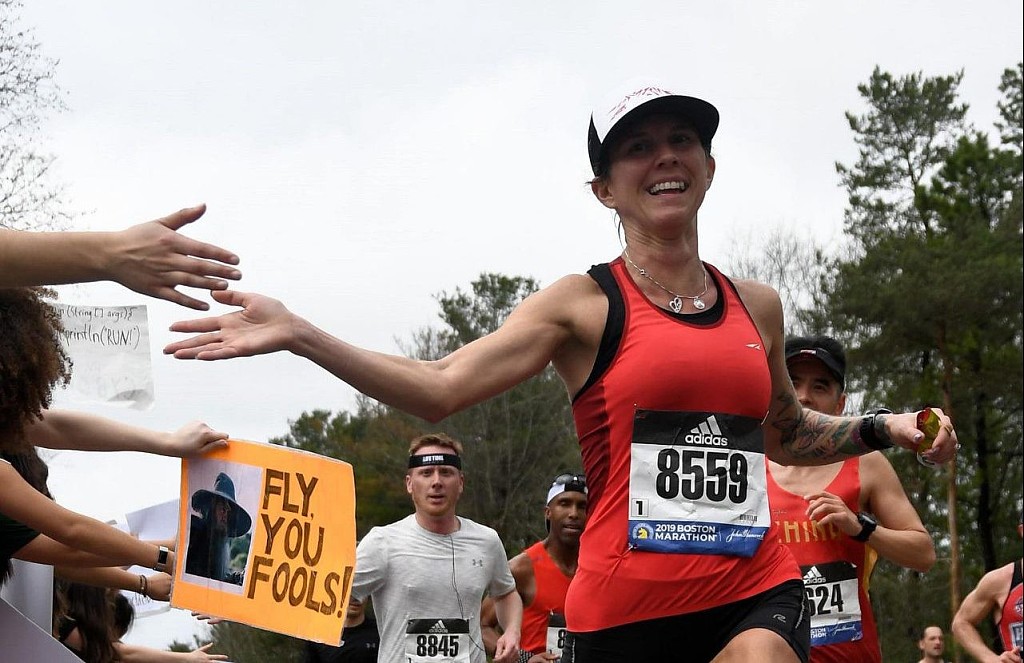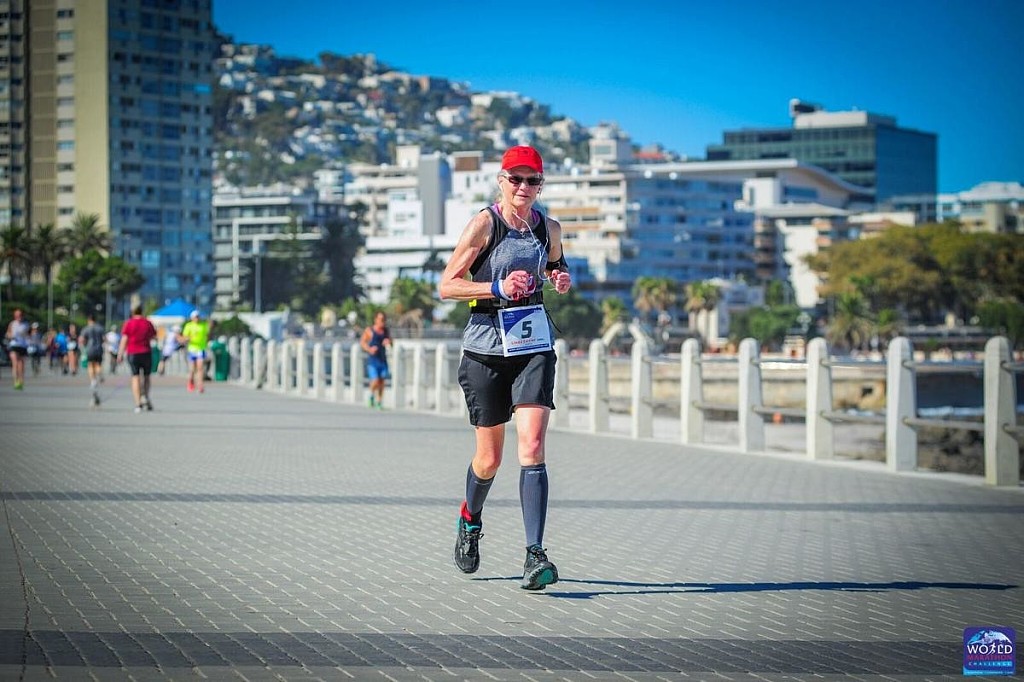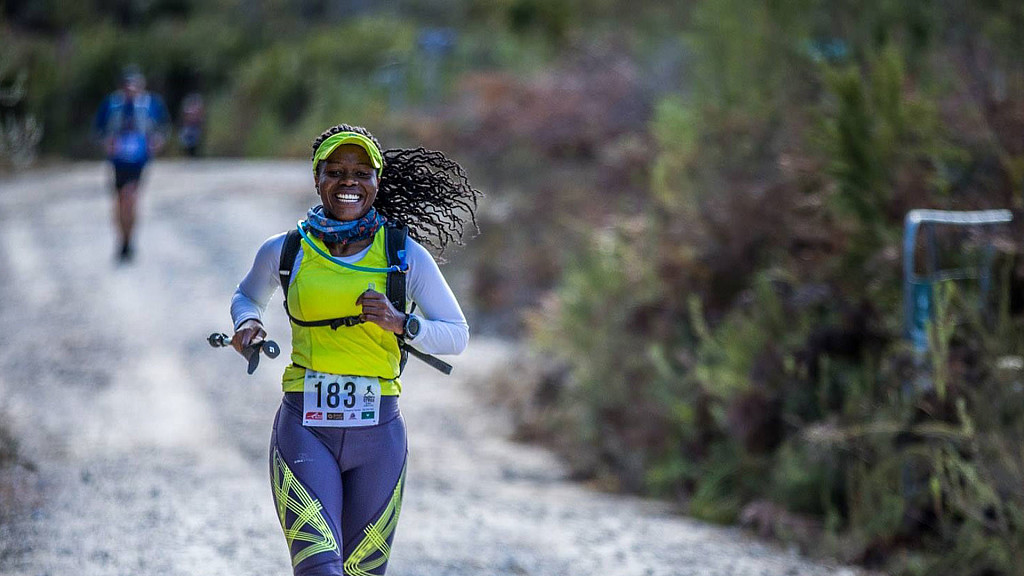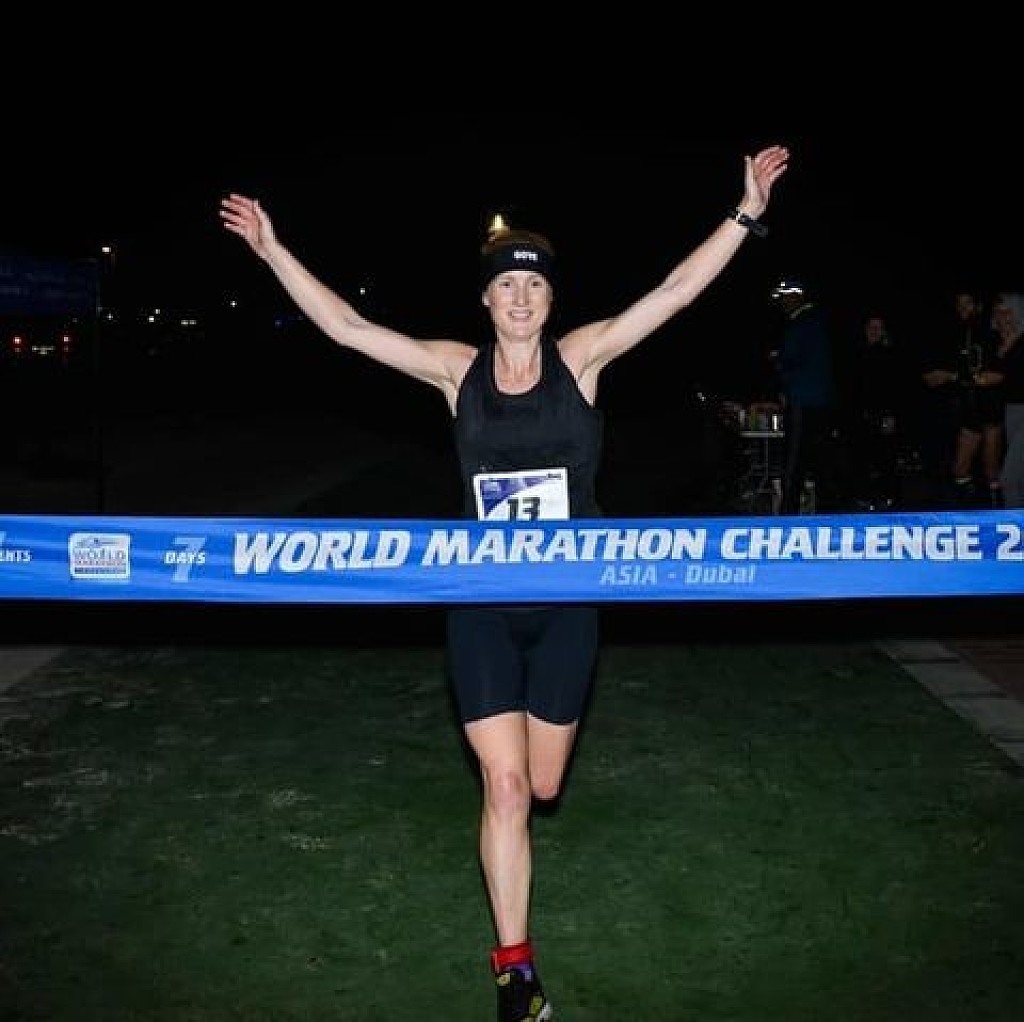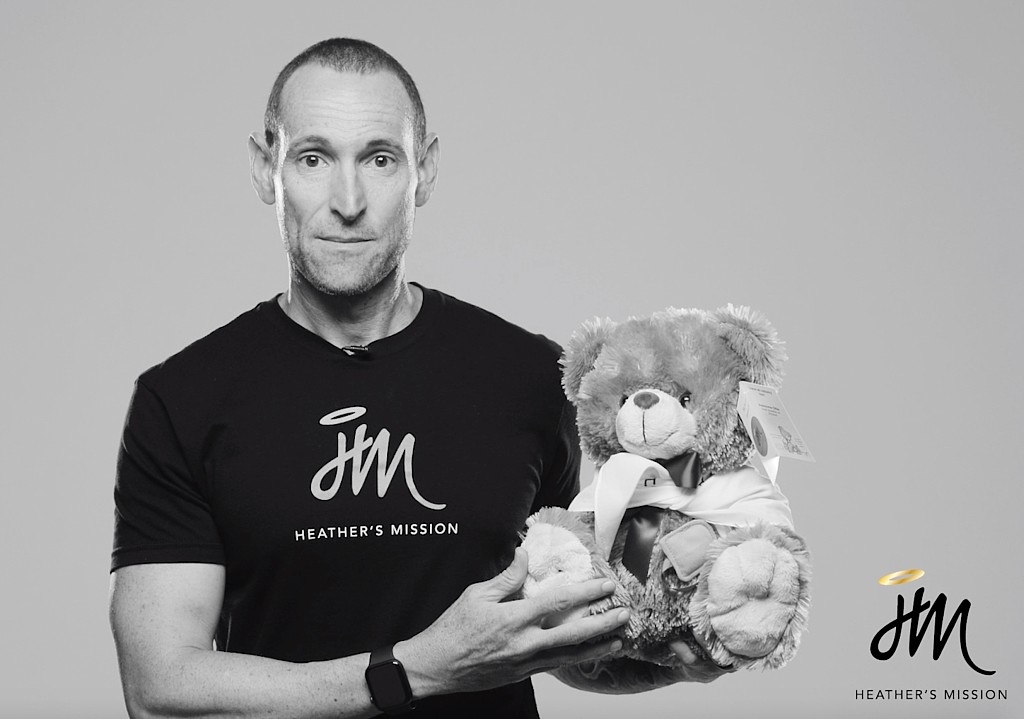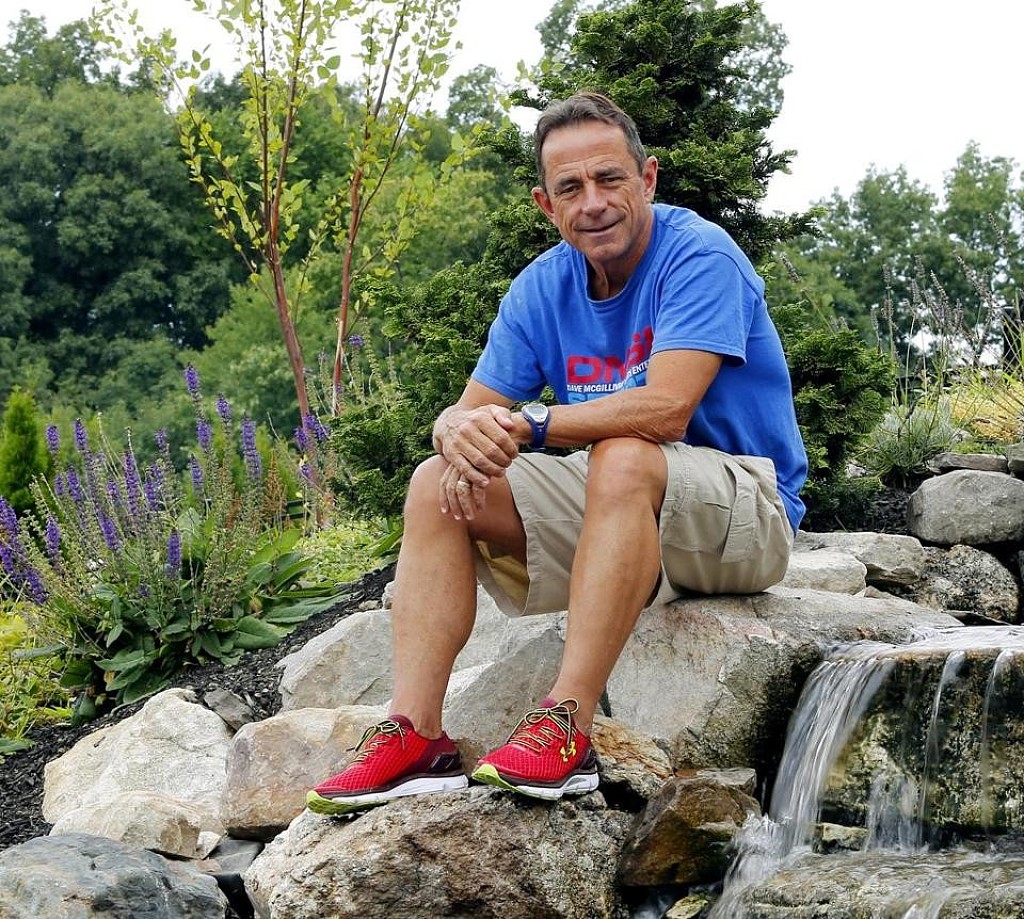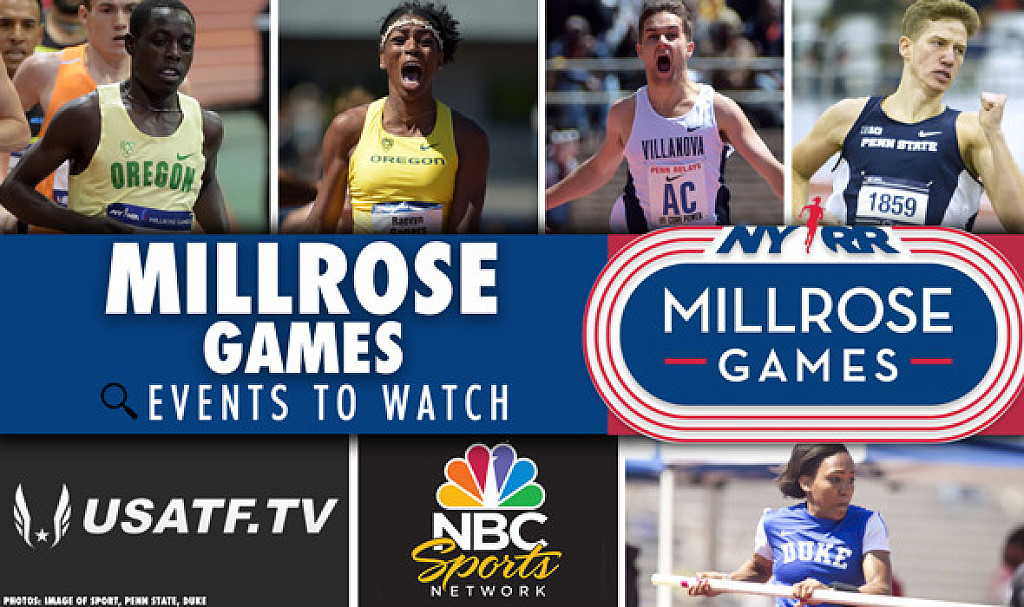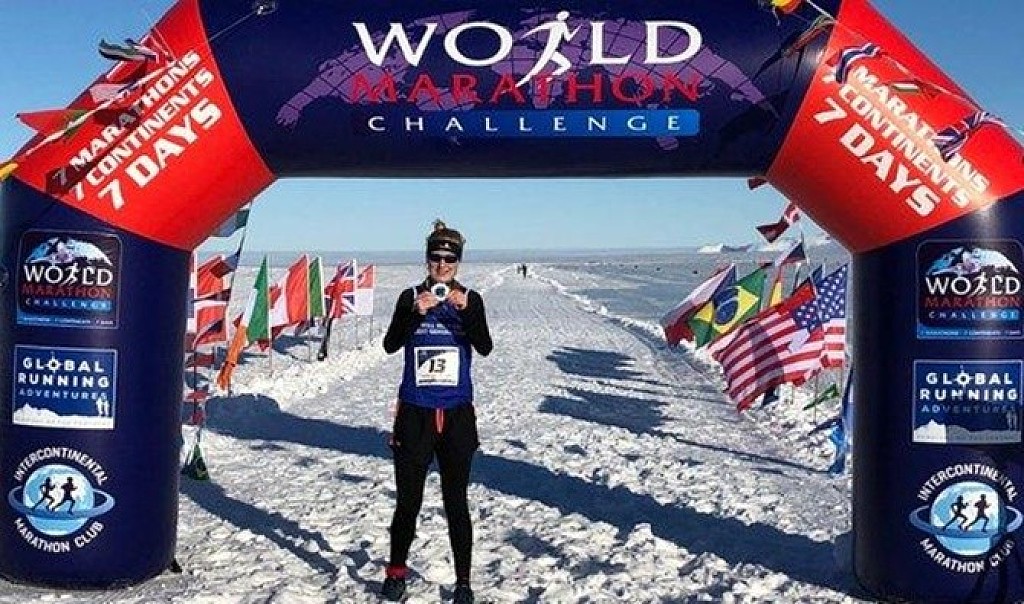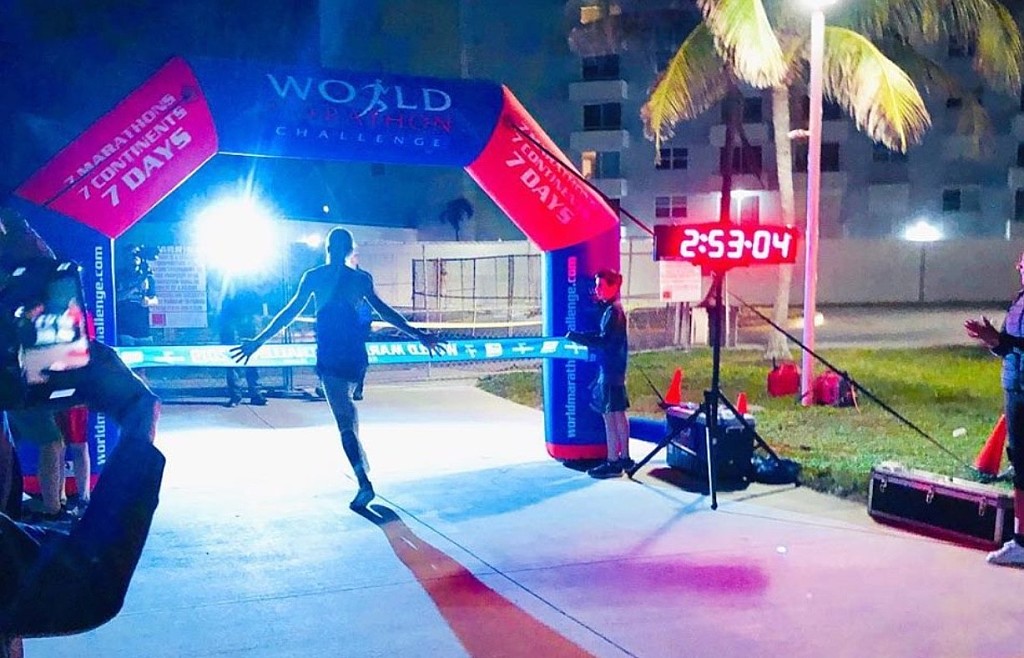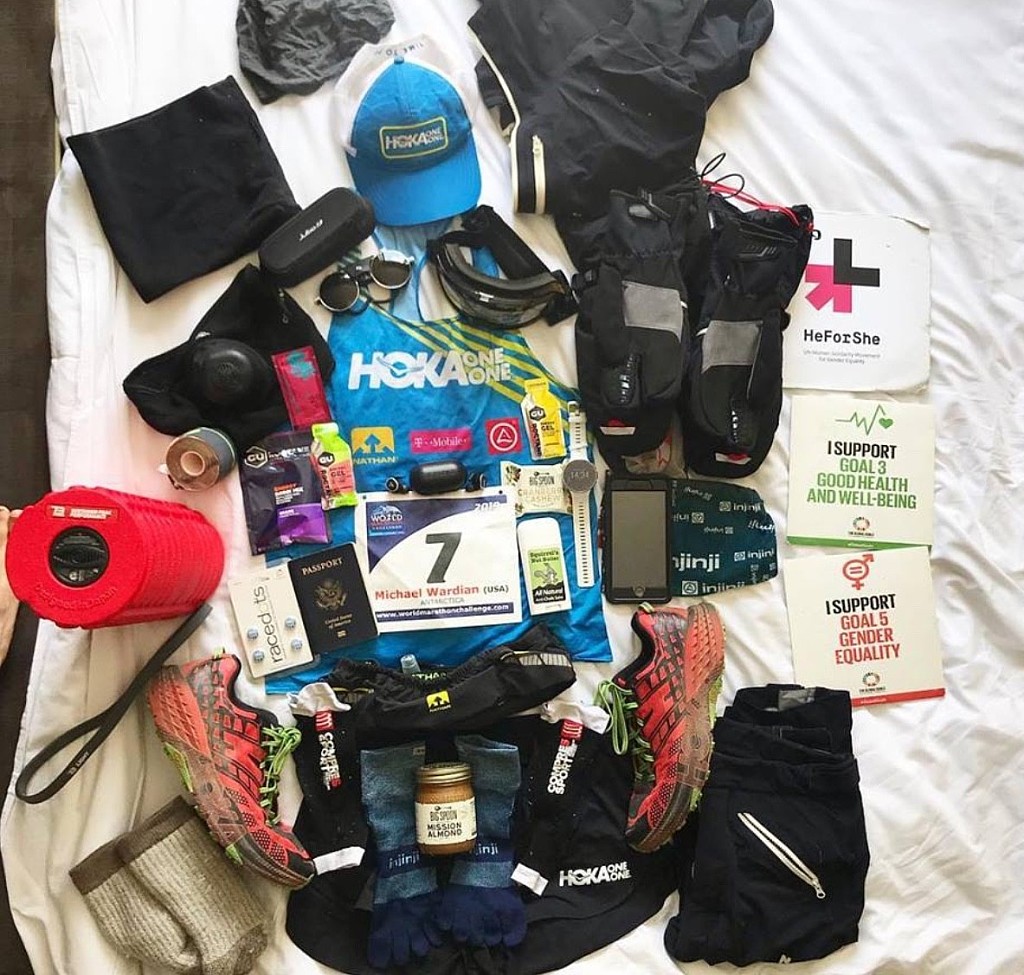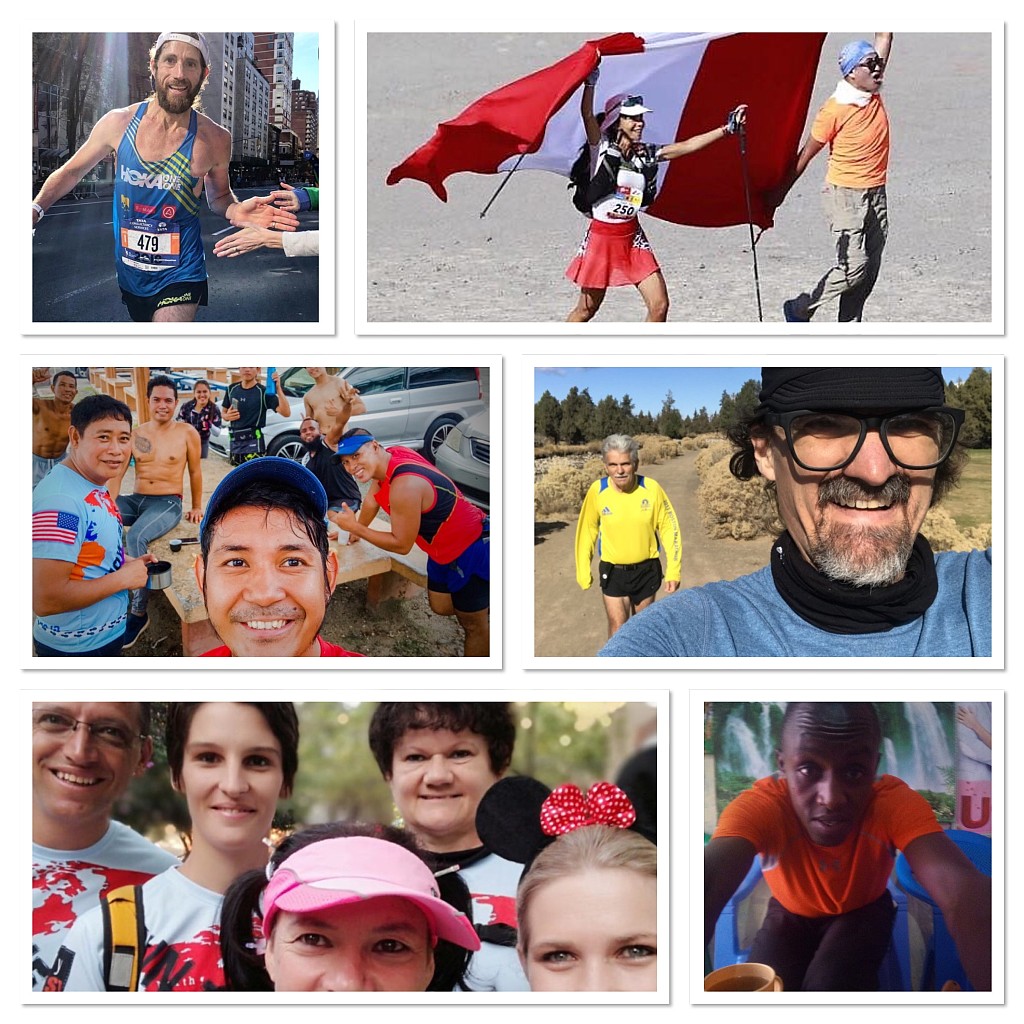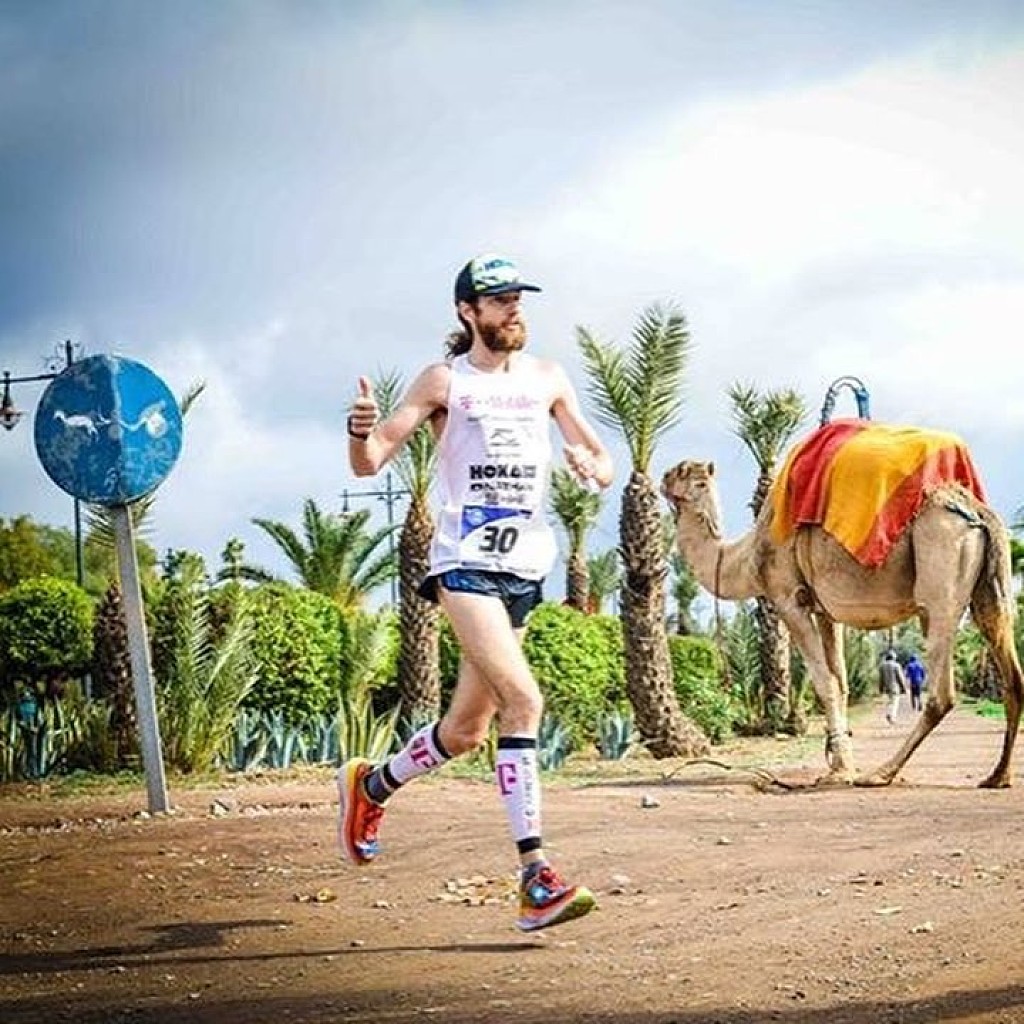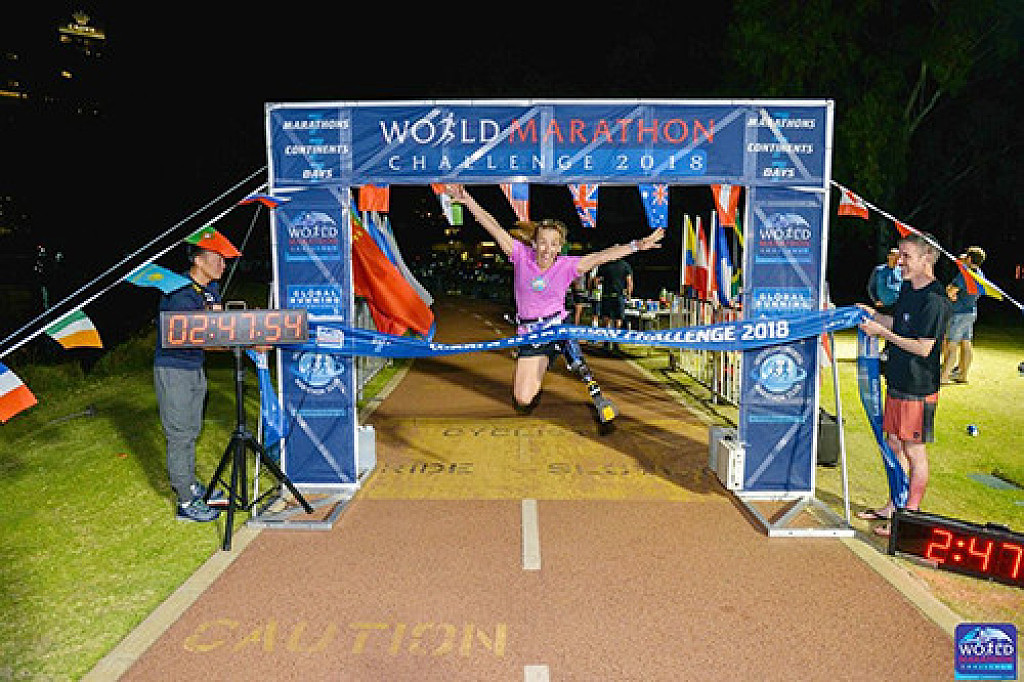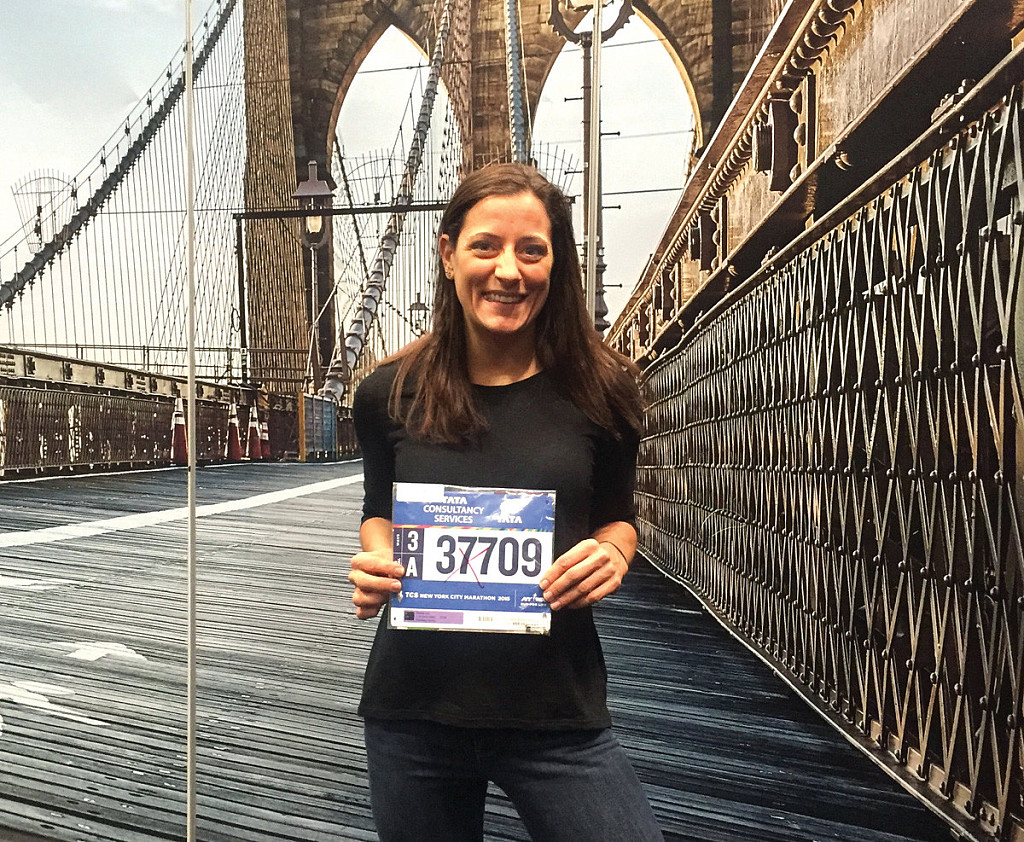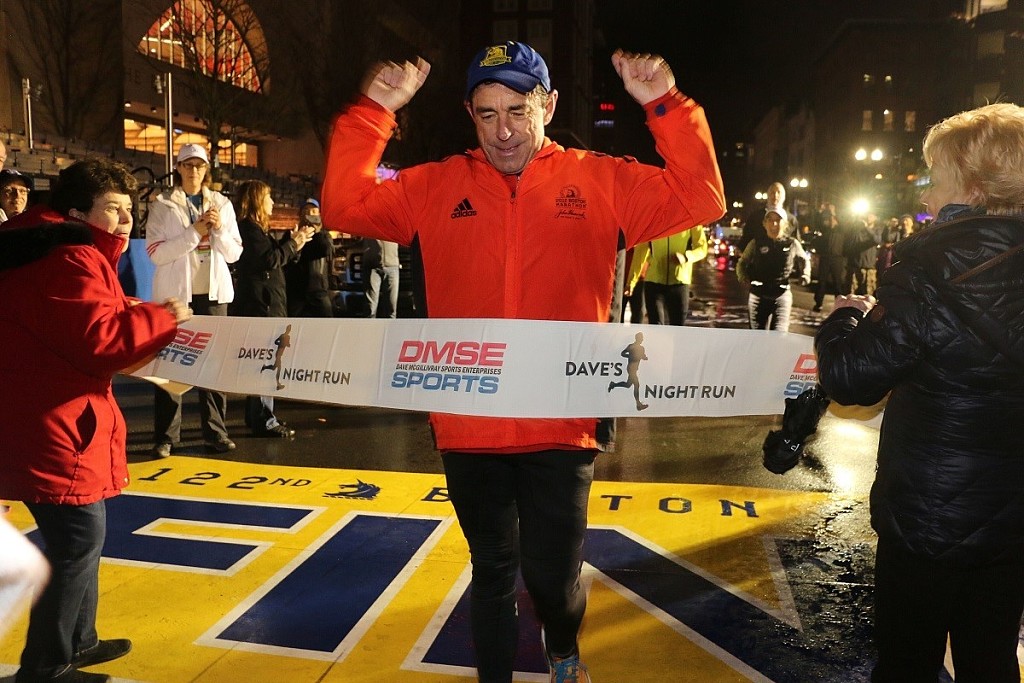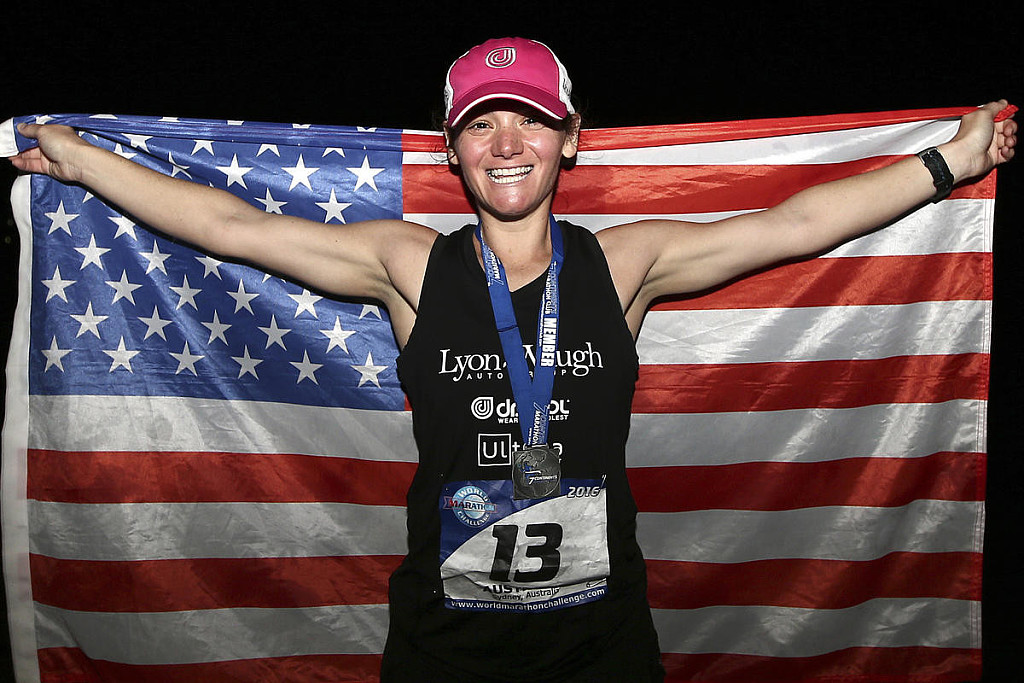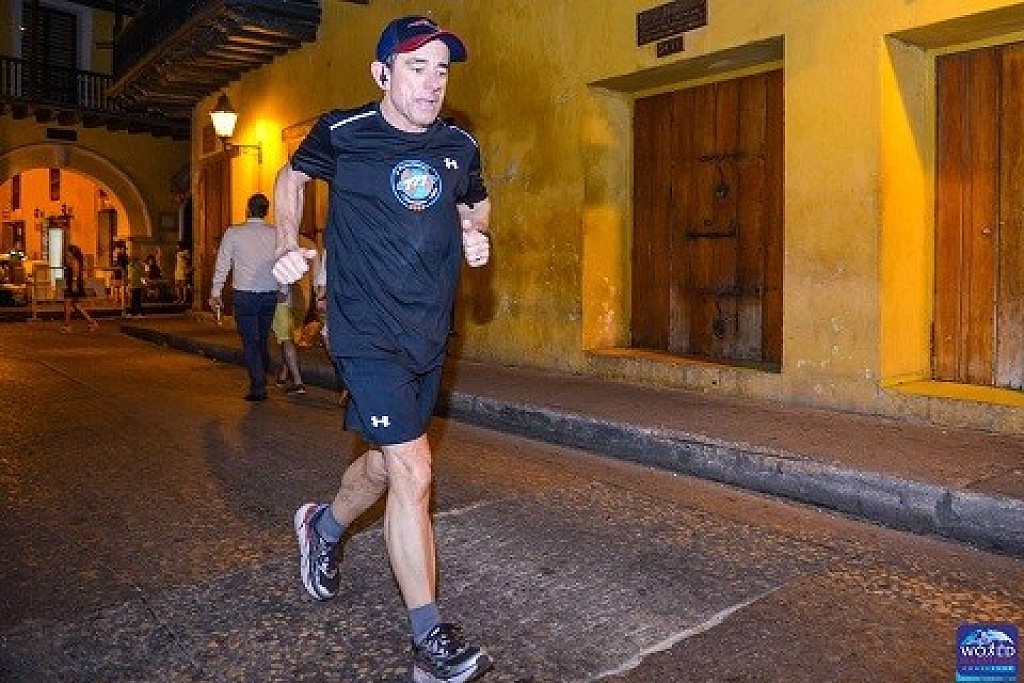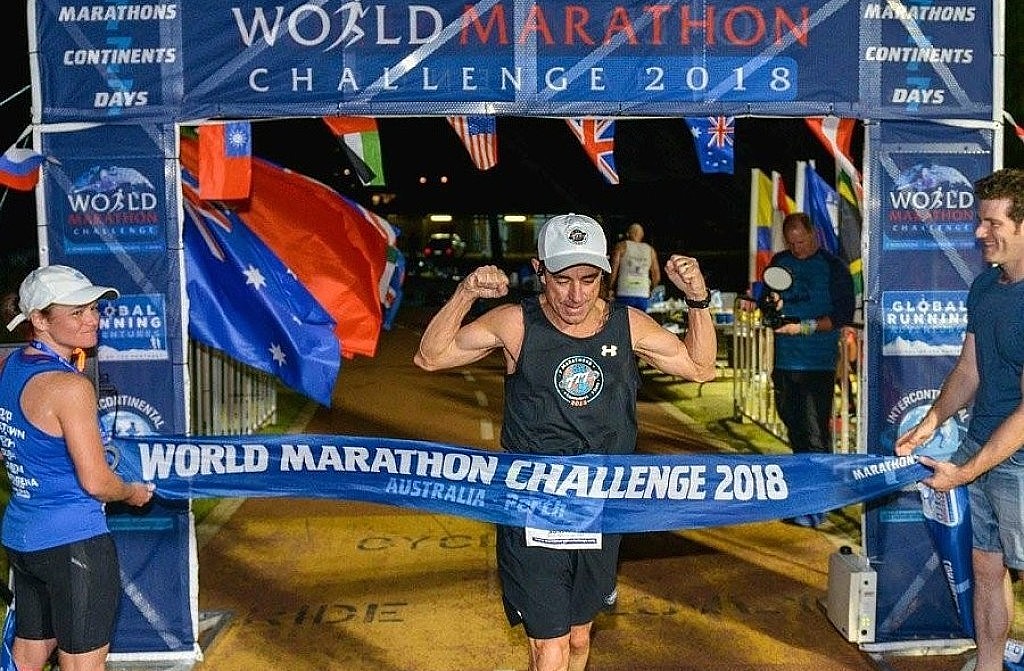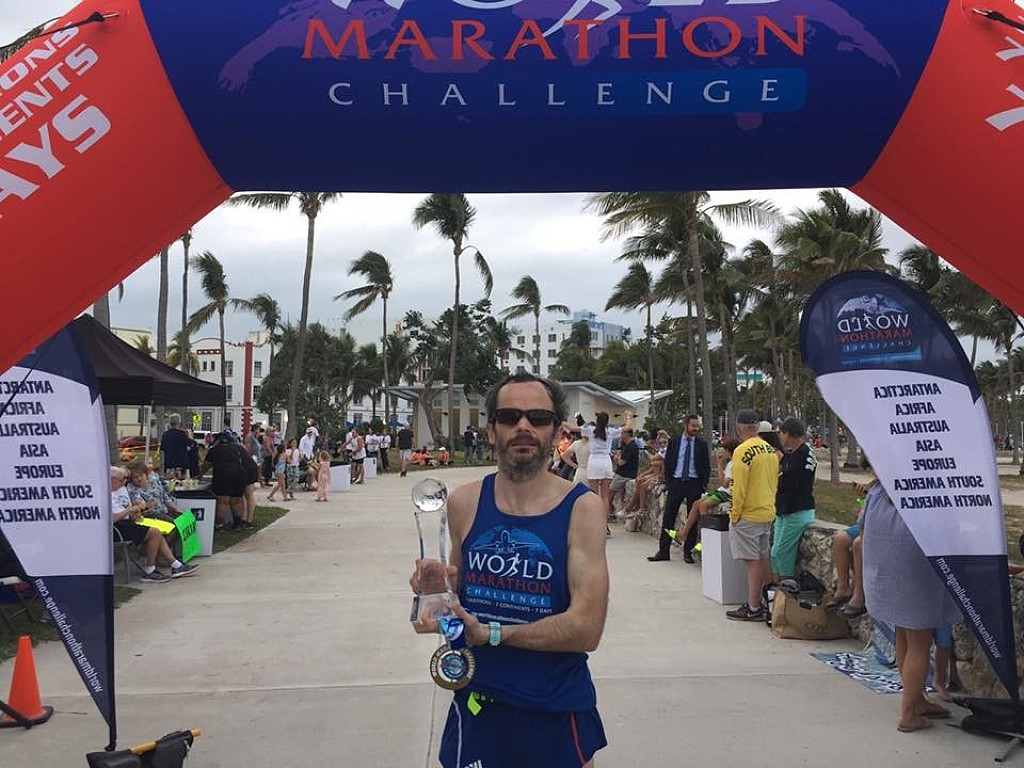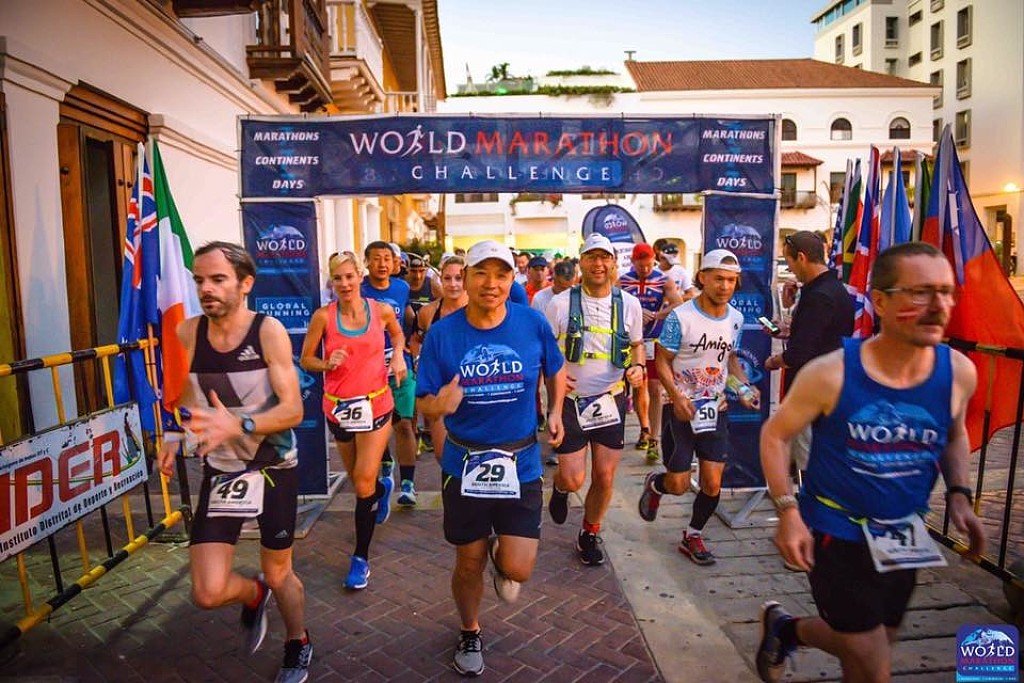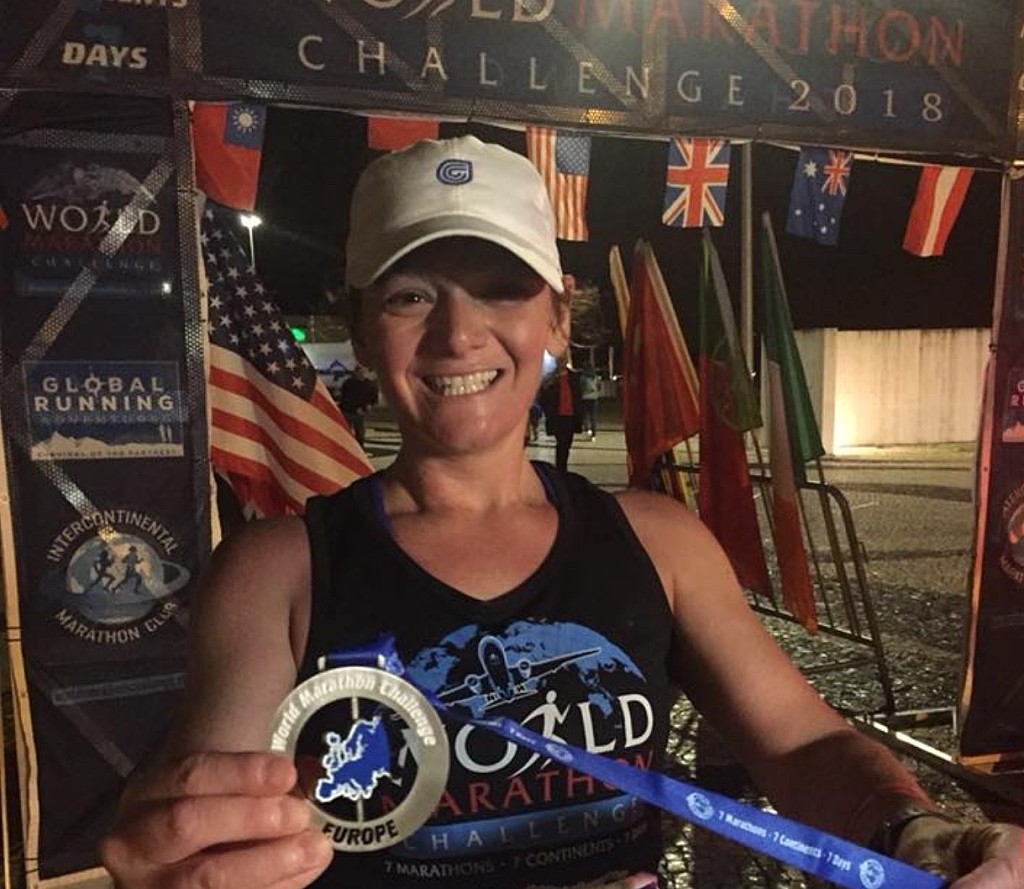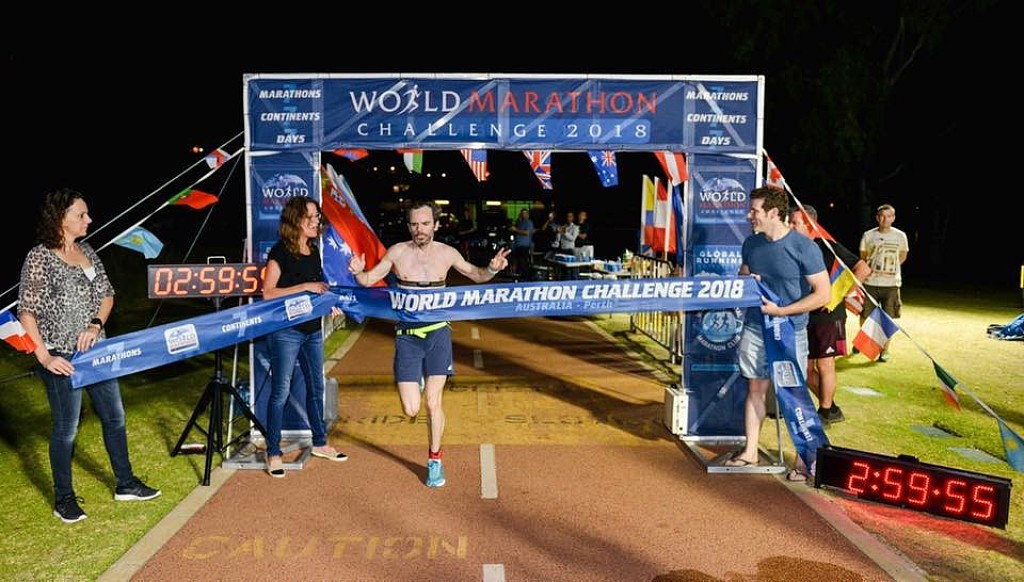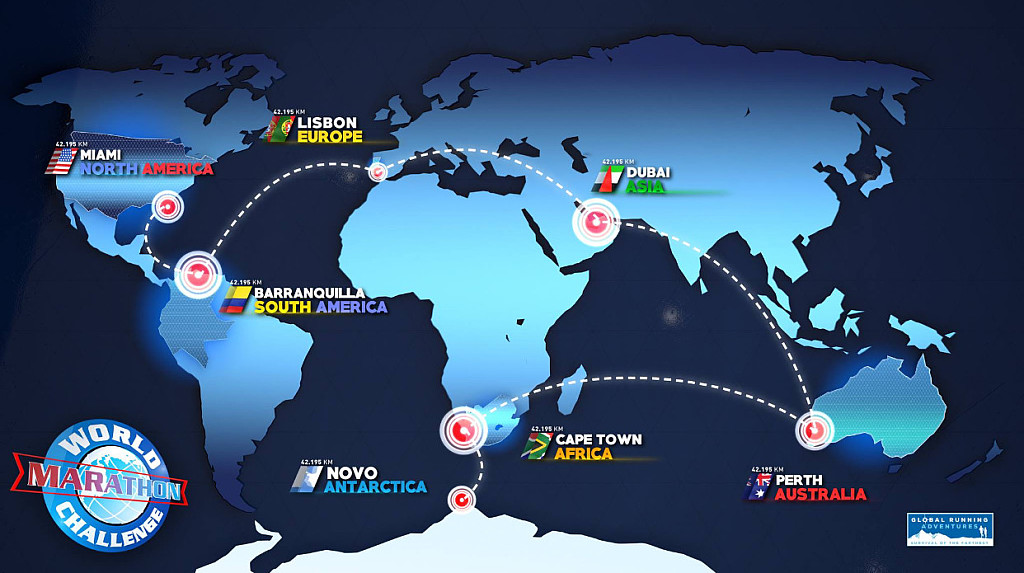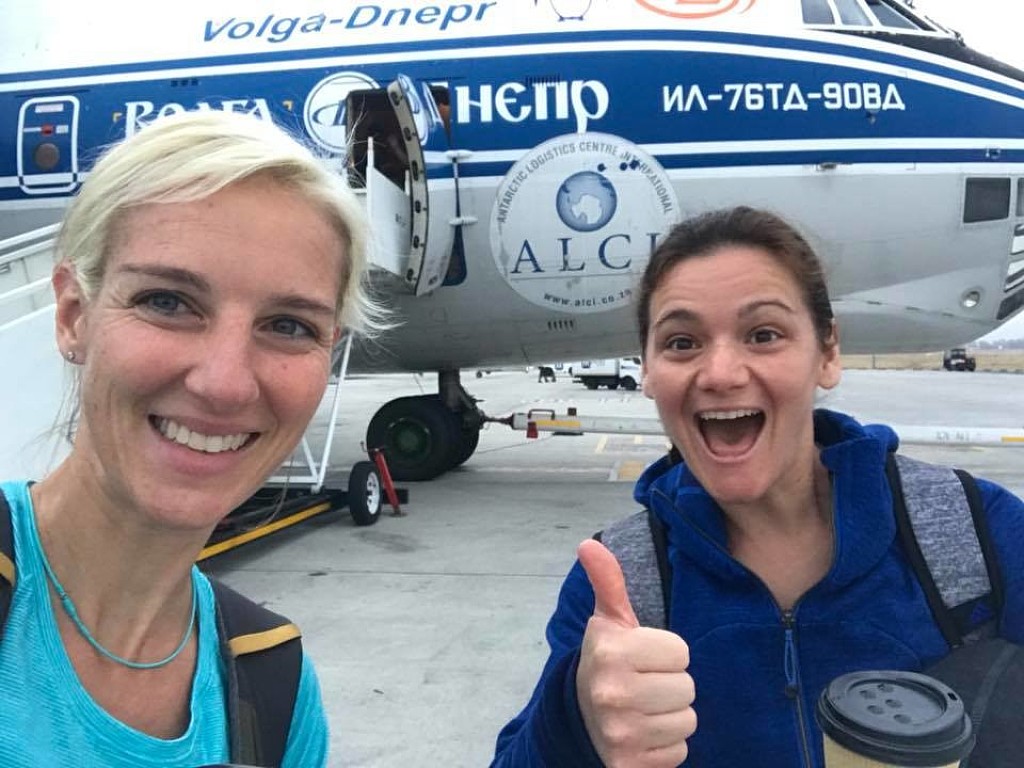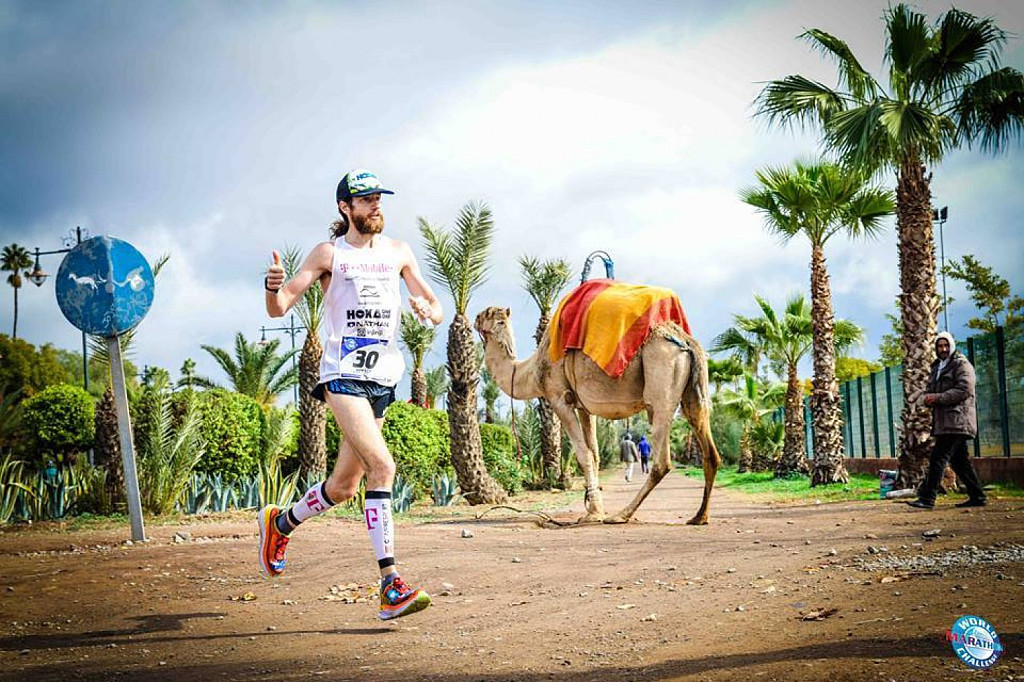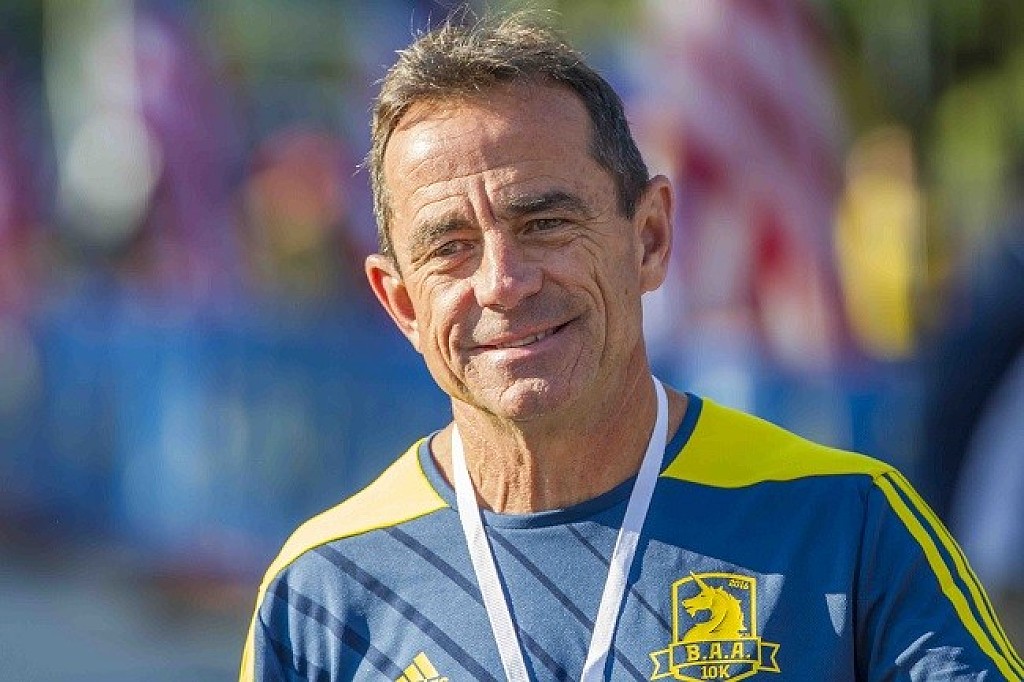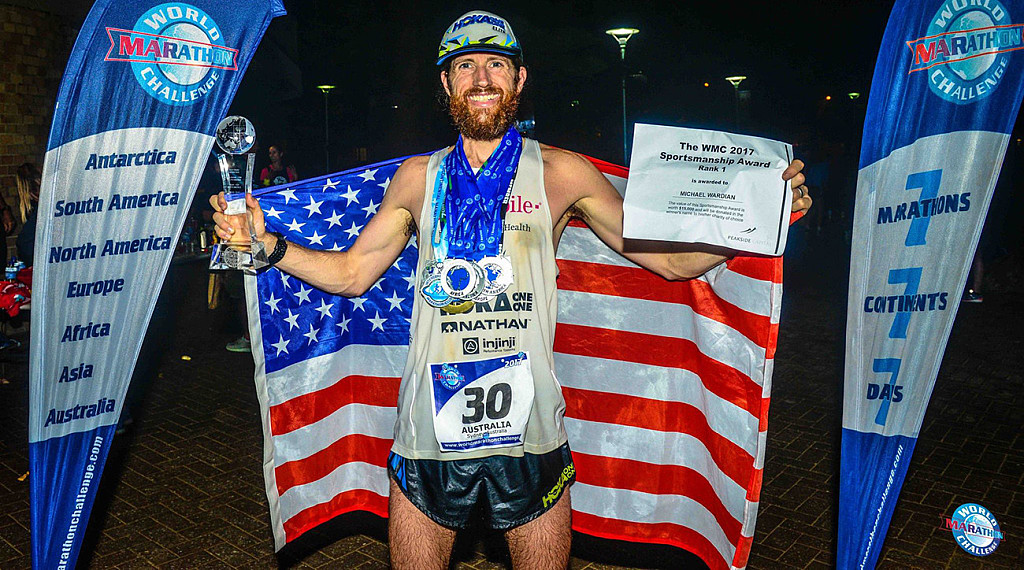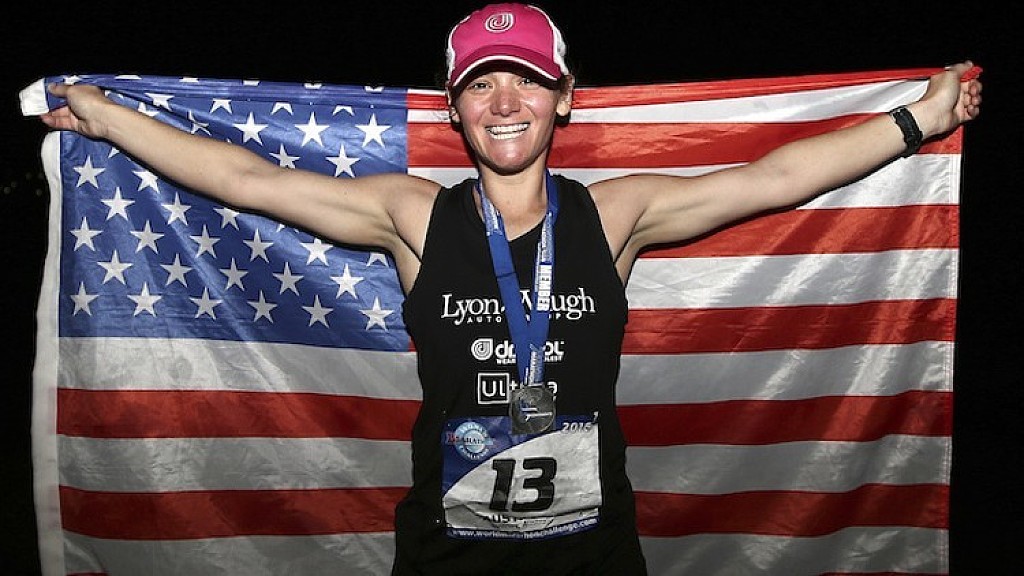Running News Daily
Running News Daily is edited by Bob Anderson. Send your news items to bob@mybestruns.com Advertising opportunities available. Train the Kenyan Way at KATA Kenya and Portugal owned and operated by Bob Anderson. Be sure to catch our movie A Long Run the movie KATA Running Camps and KATA Potato Farms - 31 now open in Kenya! https://kata.ke/
Index to Daily Posts · Sign Up For Updates · Run The World Feed
Articles tagged #World Marathon Challenge
Today's Running News
Estefanía Unzu Sets New Spanish 100km Record in Canberra
Just under three weeks after completing the World Marathon Challenge—running seven marathons on seven continents in seven days—Spain’s Estefanía Unzu has shattered the national women’s 100km record at the Australian 100km Championship in Canberra.
On February 22, Unzu, a 39-year-old mother of eight, finished the race in 7 hours, 47 minutes, and 46 seconds. She was the first female finisher and placed second overall, just behind men’s champion Dominic Bosher, who completed the course in 7 hours, 45 minutes, and 30 seconds.
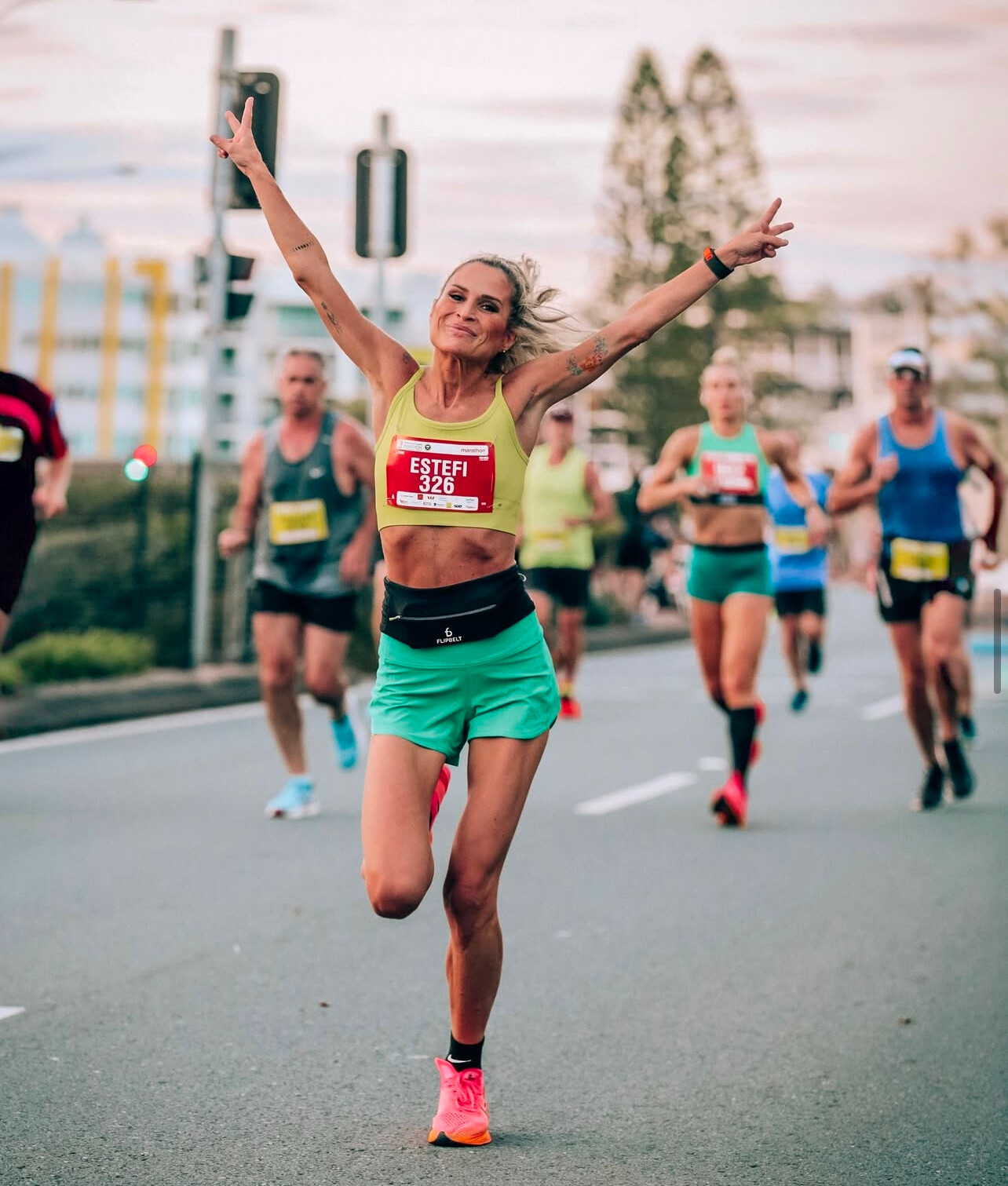
This performance broke the previous Spanish women’s 100km record of 7 hours, 52 minutes, and 21 seconds, set by Mireia Sosa in 2023. Overwhelmed with emotion, Unzu shared on social media, “I want to cry. My name will forever be a part of Spanish athletics history.”

Unzu’s achievement is particularly remarkable given her recent participation in the World Marathon Challenge, where she ran seven marathons across seven continents in one week. While many athletes require extended recovery periods after such endeavors, Unzu demonstrated exceptional resilience by promptly setting her sights on the 100km ultramarathon.
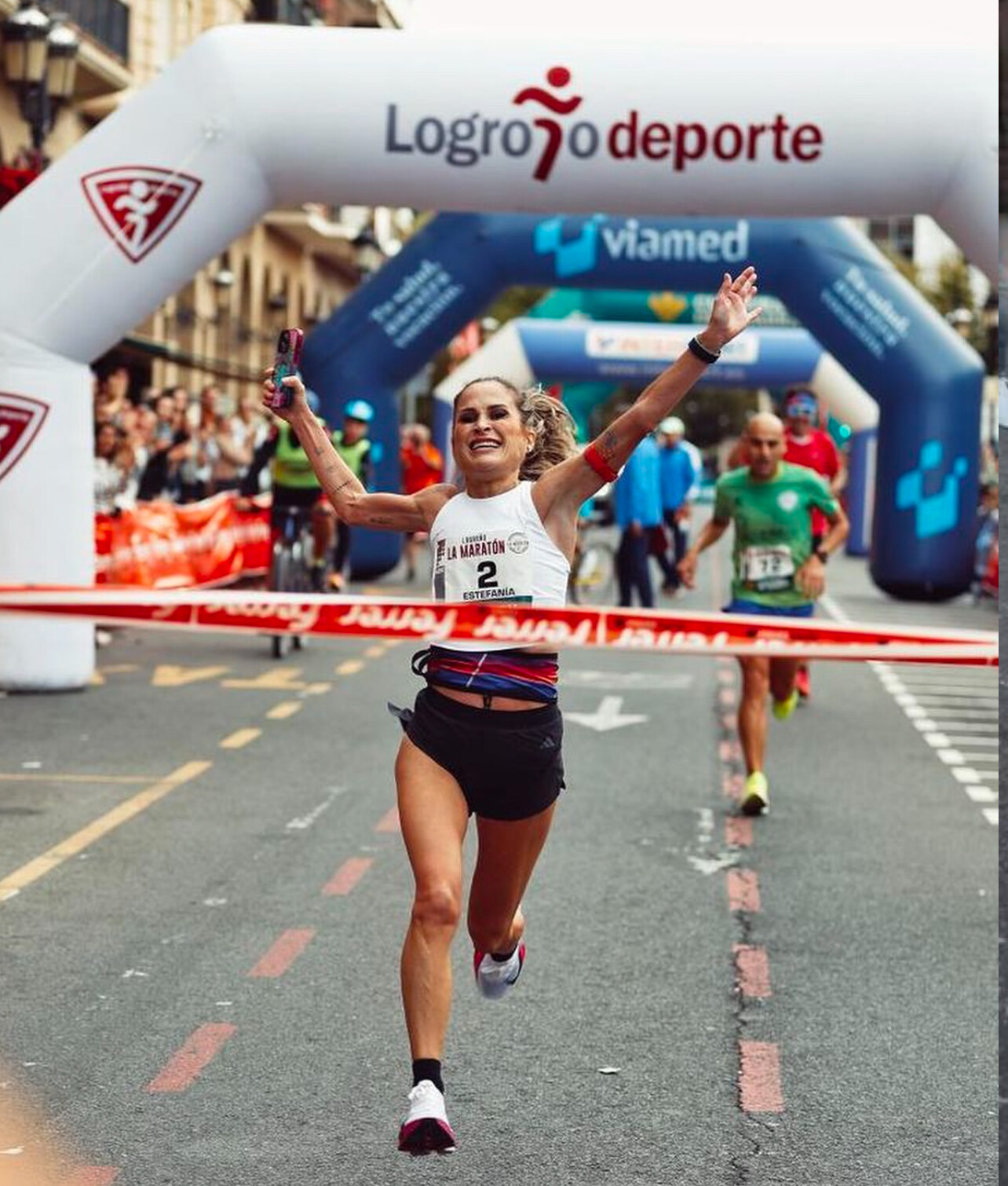
Known as “Verdeliss” on social media, Unzu has a substantial following, with nearly 1.5 million Instagram followers and over 2 million YouTube subscribers. Beyond her athletic pursuits, she is the founder and CEO of the cosmetics brand Green Cornerss and gained public attention after appearing on the sixth season of the Bulgarian reality show VIP Brother in 2014.

In May 2024, Unzu won the 100km distance at the Spanish National Ultra Marathon Championship with a time of 7 hours, 59 minutes, and 30 seconds. Her recent accomplishments have solidified her status as one of Spain’s premier endurance athletes, inspiring many with her ability to balance elite athletic performance and family life.

As Spain celebrates its new national record holder, the ultrarunning community eagerly anticipates Unzu’s future endeavors, confident that her determination and drive will lead to more groundbreaking achievements.
Login to leave a comment
7 Marathons in 7 Days on 7 Continents: Is There Such a Thing as Racing Too Much?
Don’t let your bucket list lead to burnout.
Setting running goals is typically a good thing. Goals keep you engaged and on track. They shape your training with purpose, structure, and accountability. However, sometimes an endless list of goals can backfire. More races. More consecutive events. More miles. It leaves us wondering: How much racing is too much racing?

It’s healthy to test your limits and perceived boundaries, but running half marathons and marathons takes a toll—physically, mentally, emotionally, socially, and financially. Finding the sweet spot between your comfort zone and the danger zone is tricky.
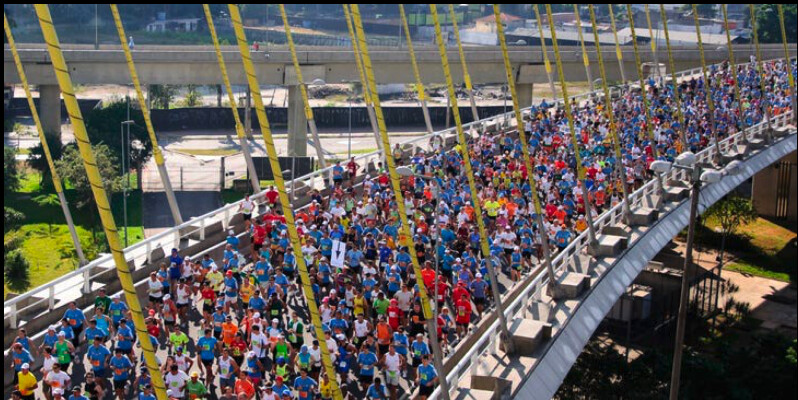
So, we chatted with a few experts on setting values-driven goals, being ambitious but realistic, and using social media for support (beyond that quick hit of dopamine). Before you tackle your racing bucket list, read on.
How much racing is too much racing?
According to the experts, there’s no definitive answer to the “too much racing” question. “It depends on the person and what your short and long-term goals are and your current fitness conditions,” Raj Hathiramani, certified running coach at Mile High Run Club in New York City, tells Runner’s World. Even a series like the World Marathon Challenge, in which participants jet between all seven continents, completing a different marathon every day for one week straight, is doable if you’re prepared.
That said, training for an aggressive racing schedule requires time (for both running and recovery) and resources, like coaching, gym access, and funding to cover travel, race fees, childcare, and other family and household-related support.
“This is where I think a lot of people get it wrong,” Todd Buckingham, Ph.D., exercise physiologist at PTSportsPRO in Grand Rapids, Michigan tells Runner’s World. “They want to do a marathon or an Ironman, but they only have, say, three hours a week to train. That’s not going to be feasible.”
Buckingham points out that your training and race schedule needs to fit into the reality of your life and not the other way around. Otherwise, you risk overextending yourself and heading into events undertrained, which can lead to disappointment and injury.
How do you determine how much to race?
1. Start with your why
Before you start registering for races and scheduling training runs, ask yourself this question: “Why am I doing this?” There’s no right or wrong answer, but if you’re drawing a blank, or the big pay-off is external validation (are you already mentally editing your highlight reel?), you may need to re-evaluate your goals.
That’s because healthy, worthwhile goals should align with your personal values, according to Mike Gross, Psy.D., head of sport psychology services at Princeton University in Princeton, New Jersey. “Let’s get a sense of your ‘why’ and be really clear on that,” he tells Runner’s World. “Why in your heart do you want to do this?” he asks, noting that your why can serve as a compass that guides your actions and keeps you focused and on course in the face of obstacles.
If you don’t understand your reasons for doing something, you’re more likely to give up or follow through just for the sake of getting it done. “That’s when you’re just kind of white-knuckling it through the process. You’re starting to notice there’s no enjoyment in it, and that’s when some of the burnout symptoms start to arise,” Gross says.
For Hathiramani, the motivation to achieve his own “big” goal of running 50 marathons in 50 states was multi-pronged. Before formalizing the goal, he’d organically completed races in 10 states just by registering for events that appealed to him. He realized that participating in a race in each state would allow him to further connect with members of his running community, many of whom shared the same ambition.
Running in different states also gave Hathiramani an opportunity to access and explore parts of the country through the sport that he loves. “I thought it would be a really neat way to see the U.S., run some smaller races, some bigger races, and visit parts of the U.S. I’d never thought I’d be able to, whether it was the Shiprock Indian Reservation in New Mexico or a Christian camp in South Dakota,” he explains.
Keep in mind that not every challenging goal is defined by mileage. One of Hathiramani’s most meaningful goals was committing to strength training for at least 10 minutes twice a week. “That really helped my running, especially as I was getting older and running faster, longer distances. I felt that I needed more muscular endurance,” he says.
Buckingham encourages long-distance-oriented runners seeking a challenge to consider shorter, faster races. “A marathon, from a cardiovascular standpoint, is easy compared to a 5K or 10K,” he says.
2. Don’t race every race
Depending on the number of races you want to do and other personal variables, such as your racing experience and fitness level, you could aim to PR some events and simply finish others, as racing is more demanding and necessitates more recovery.
To that end, Buckingham recommends pursuing no more than two “goal races” a year—one in the fall and one in the spring—particularly if they’re longer, like a half or full marathon. “You want to give yourself several months in between to recover from the last marathon and get ready for the next,” he says, noting that attempting to “carry over” fitness in back-to-back events can backfire with injuries and other symptoms of overtraining.
For runners doing races in quicker succession, it’s key to incorporate recovery strategies in the days (or hours) between.“You can race hard for seven days in a row as long as you are adequately trained for that and adequately recover from it,” Hathiramani says. For example, he has done back-to-back marathons several times, but puts a specific focus on recovery between those finish and starting lines. This includes intentional practices like foam rolling, proper fueling, and quality sleep.
3. Take your time
The experts caution that imposing strict time constraints on your goals can increase your risk of injury, add unnecessary pressure, and take away from your overall enjoyment and satisfaction.
For example, Hathiramani embarked on his 50-marathon goal in 2010 when he was in his mid-20s, knowing that he wanted to finish by the time he was 40 years old. He finished “on time” in early 2024. This realistic timeframe allowed him to relish the experience and navigate unexpected obstacles, like COVID-related race cancellations.
“It was never about trying to achieve that type of goal in a certain amount of time. It was more about enjoying the process of falling in love with running,” Hathiramani says.
4. Be mindful with social media
It’s nearly impossible to escape the influence of the digital platforms that are now integrated into our everyday lives, but thinking about what you might do if you couldn’t share your goals with a wider audience is a useful thought exercise. That’s because it’s not exactly smart to set goals just so you can post about them.
However, social media is part of most runners’ lives, and there are positive aspects to online engagement. “If you put your goals out there by telling your family or friends or working with a coach, you get someone else that can help keep you accountable,” Hathiramini says, noting that the support of his community was instrumental in keeping him motivated to achieve a goal that spanned more than a decade. They not only celebrated his wins but also offered support when he needed it most. “They’re also there to help pick you up from any setbacks, too.”
Finally, with all of this in mind, don’t shy away from a big goal. “I think the mind and the body—the mind, more so—is pretty incredible in that it can expand its limits to what you desire to achieve,” says Hathiramani.
by Runner’s World
Login to leave a comment
Dave McGillivray Completes 51st Consecutive Boston Marathon
After all other participants had long finished their Boston Marathon journeys, Dave McGillivray crossed the finish line at 7:28 p.m. yesterday evening. McGillivray oversaw the course throughout the race earlier in the day, taking runners across the starting line and helping to ensure their safe arrival on Boylston Street. This is McGillivray’s 51st consecutive completion of the Boston Marathon and the 36th of which he has completed at night after seeing to his race day duties.
“It doesn’t feel so long ago that I was 18 years old, sitting on the curb at mile 21, wondering if I would ever get a chance to finish the Boston Marathon. If I could go back and tell my younger self that he goes on to finish that day and 50 more editions, I can’t imagine his reaction,” said McGillivray. “I’m grateful for the more than a dozen friends and colleagues who joined me on the journey to the finish line today. I had to dream big to get to this moment, and I couldn’t do it without my community and my family that support me every step of the way.”

The weekend featured two other special moments for McGillivray. On Saturday, Team With A Vision inducted McGillivray into their hall of fame during a dinner at the Westin Copley Place. Team With A Vision pairs blind and sighted runners together to complete endurance races across the country. Their efforts support the Massachusetts Association for the Blind and Visually Impaired, which delivers professional, peer, and volunteer support to over 1,200 individuals each year, giving them the support they need to live with dignity and independence. All funds raised support MABVI’s statewide vision rehabilitation services, including 34 low-vision support groups, Assistive Technology and Training Centers, and 400 volunteers matched 1:1 with blind individuals.
In addition, McGillivray was a featured speaker during the Boston Marathon Expo, where World Marathon Challenge champion Becca Pizzi interviewed him about his long history with the race. He shared photos, videos and stories with the crowd, and signed copies of his books for attendees at the Dave McGillivray Finish Strong Foundation booth following the presentation.
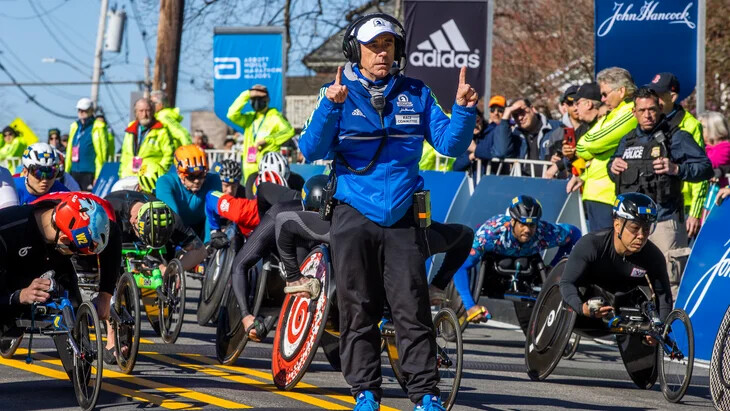
McGillivray is one of just a handful of runners who have marked half a century or more of completing the world’s most famous marathon. Alongside his rich connection to this race, his running resume includes completing the World Marathon Challenge (seven marathons in seven days on seven continents,) nine Ironman Triathlon World Championships, a 1,250-mile run along the U.S. East Coast in 1980 to again benefit the Jimmy Fund, a 24-hour run (120 miles,) a 24-hour bike (385 miles,) and a 24-hour swim (27 miles.) He triathloned around the six New England states by swimming one mile, biking 80 miles and running 20 miles every day for 32 consecutive days. Over the span of his life, he estimates he’s run more than 150,000 miles.
For more information on Dave McGillivray, visit www.davemcgillivray.com and follow him on Facebook, Instagram, LinkedIn and Twitter.
ABOUT DAVE MCGILLIVRAY
Running legend Dave McGillivray has increased the self-esteem of millions of people through his work as an entrepreneur, philanthropist, motivational speaker, author, and athlete. Dave is best known for his athletic feats including his 80-day trek across the United States, running the 3,452 miles from Medford, Ore., to Medford, Mass. in the summer of 1978 to benefit the Jimmy Fund. In addition, he’s received great acclaim for directing or consulting on more than 1,400 events throughout the world including the Boston Marathon, the Olympic Marathon trials, and the Olympic Games. For more information on Dave McGillivray, visit www.davemcgillivray.com and follow him on Facebook, Instagram, LinkedIn and Twitter.
by Running USA
Login to leave a comment
Boston Marathon
Among the nation’s oldest athletic clubs, the B.A.A. was established in 1887, and, in 1896, more than half of the U.S. Olympic Team at the first modern games was composed of B.A.A. club members. The Olympic Games provided the inspiration for the first Boston Marathon, which culminated the B.A.A. Games on April 19, 1897. John J. McDermott emerged from a...
more...British Athlete Becomes First Handcyclist to Complete World Marathon Challenge
Darren Edwards completed 7 marathons in 7 days. He challenges others to “risk failure” and “dream big.”
On February 7, Darren Edwards completed the seventh marathon in the World Marathon Challenge, becoming the first hand-cyclist to do so, according to the Canadian Running.
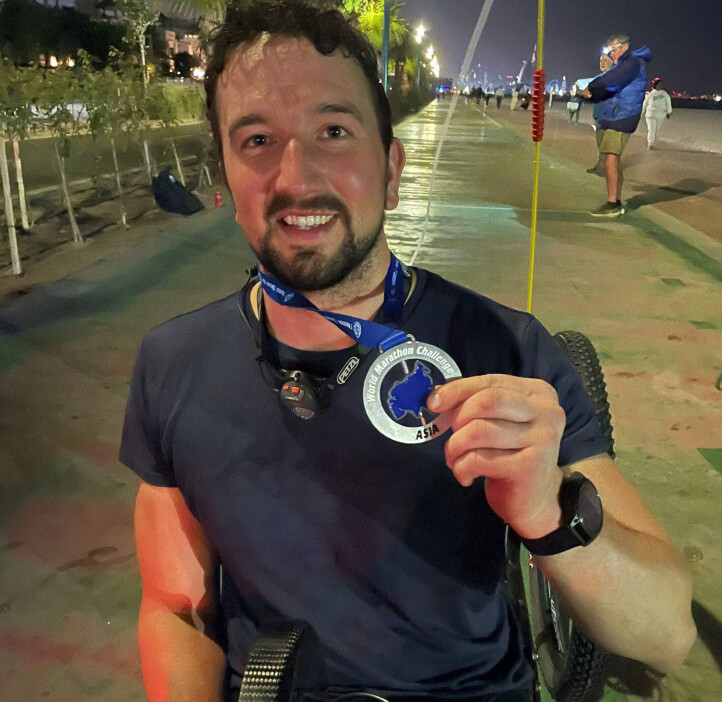
The British athlete and veteran raised nearly $60,000 to support the Armed Forces Para-Snowsport Team, a British organization that helps the recovery of wounded, injured, and sick military personnel and veterans, according to its website.
Edwards was injured in a near-fatal climbing accident in August 2016, which left him paralyzed from the chest down, he wrote on his fundraising page.
“I was incredibly fortunate to survive, but life would never be the same again,” he wrote. “I have been on a journey of rediscovery and have refused to let disability stop me from dreaming big and taking on tough challenges.”
There is, perhaps, no tougher challenge than the World Marathon Challenge.
In order to complete it participants must finish one marathon on every continent in seven days.
The first race took place on January 31 in the Antarctic Circle. From there, racers traveled to Cape Town (Africa), Perth (Australia), Dubai (Asia), Madrid (Europe), Fortaleza (South America), and Miami (North America). According to Canadian Running a “speed bump” caused a delay in athletes leaving South Africa, giving racers an extra day of recovery.
Edwards completed the Antarctica race in 5:48:37 before slashing his time in South Africa, with 2:52:04. In Australia, he finished in 2:36:30, in the heat. Next, he finished in 2:23 in Asia. The travel and racing began to take a toll. Edwards completed his European leg in 3:23:05. Then, he finished the South American race in 2:36:59.
Despite further travel issues, according to Canadian Running, athletes managed to get from South America to Miami mostly on schedule where Edwards became the first handcycle athlete to finish the challenge, completing the race in 2:31:40.
Edwards reflected on his whirlwind of a week on Instagram: “This week has tested me and my disability to the limit. I went into this challenge knowing that there was a potential for failure, that there were elements out of my control, which could dictate the success or failure of this endeavor. But, unless we are prepared to roll the dice and bet on ourselves, we are even less likely to achieve our true potential. Bet on yourself. Risk failure. Dare to dream big. You are capable of so much more than you know.”
by Runner’s World
Login to leave a comment
Sean Tobin sets record at Antarctic Ice Marathon
Ireland's Sean Tobin (a 2018 Ole Miss grad) runs a 2:53:33 marathon (6:37/mile pace) over snow in 6-degree temperatures at the Antarctic Ice Marathon. It's the fastest marathon ever run in Antarctica, breaking Mike Wardian's record of 2:54:54.
Tipperary native Seán Tobin has won the Antarctic Ice Marathon and has set a new world record in the process.
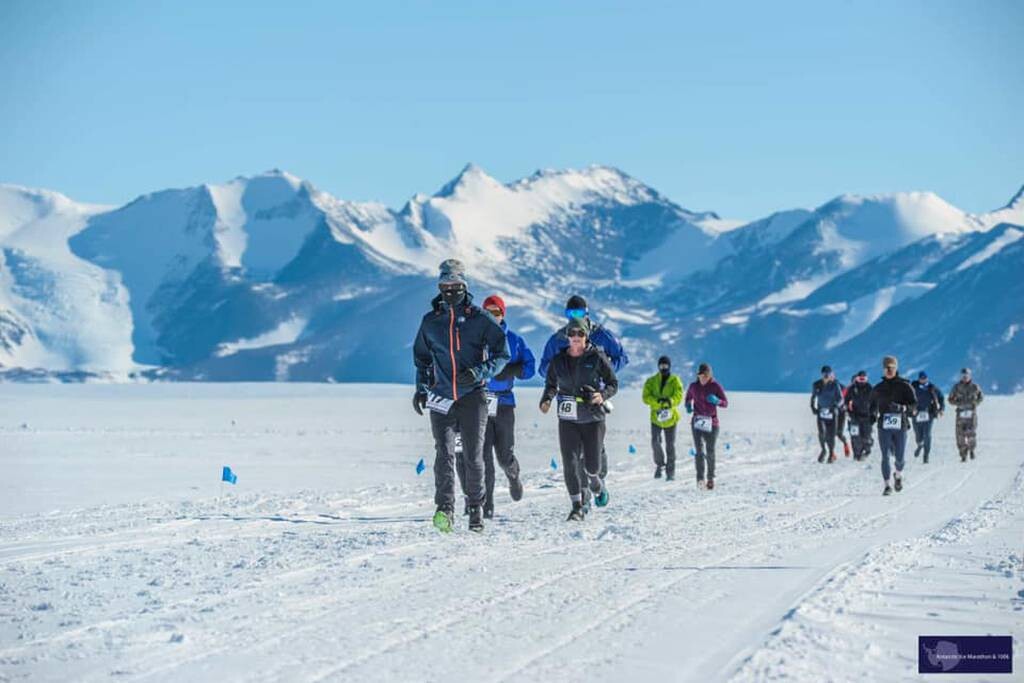
The Irish star finished in a time of 2:53:33 to take home victory in the 17th edition of the event.
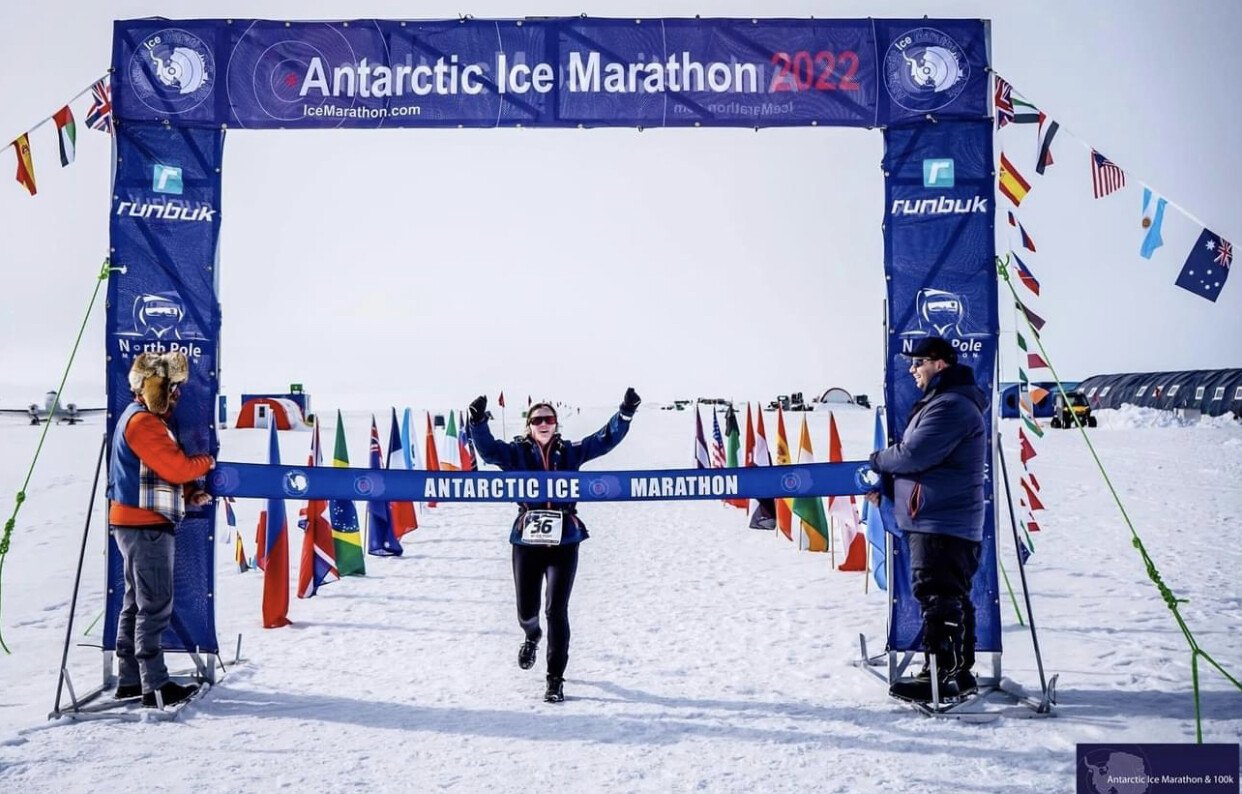
In doing so, Tobin smashed the previous record of 2:54:54 set by USA’s Mike Wardian five years ago during the 2017 World Marathon Challenge.
The 28-year-old, who is known as the Irish hammer, was a track star in his youth and won National titles in 1,500m and 10,000m events. He has also broken the four-minute mile barrier in the past.
It might be cold back home, but it is nothing compared to the -14C conditions Tobin battled through for nearly three hours.
But the Clonmel man kept his cool, handled the pressure and created a little slice of history on the icy continent.
Login to leave a comment
Four different ultrarunners are running across North America
Many runners have felt the silent pull of the long run, but running all day, every day, for months, takes the meaning of “long run” a step further. The passion for these gigantic physical and mental journeys seems only to be growing within the ultrarunning community, and we are aware of at least four ultrarunners (two Americans, one Canadian and one Irish) who are currently (or soon will be) crossing North America on foot–each for different reasons and causes.
Pete Kostelnick of Phoenix, Ariz. is known for breaking the trans-American record in 2016 by crossing the U.S. on foot in a record 42 days, six hours and 30 minutes. He followed that up in 2018 by completing a self-supported 8,614 km run from Kenai, Alaska, to Key West, Fla., including portions of western Canada, in 98 days. In July, he’ll begin an attempt to not only run 50 miles per day in 50 states over 50 days straight, solo, but he will then to head to Australia to become the first human to run the 3,935 km from Perth to Sydney, averaging roughly 128 kilometres per day for 31 days.
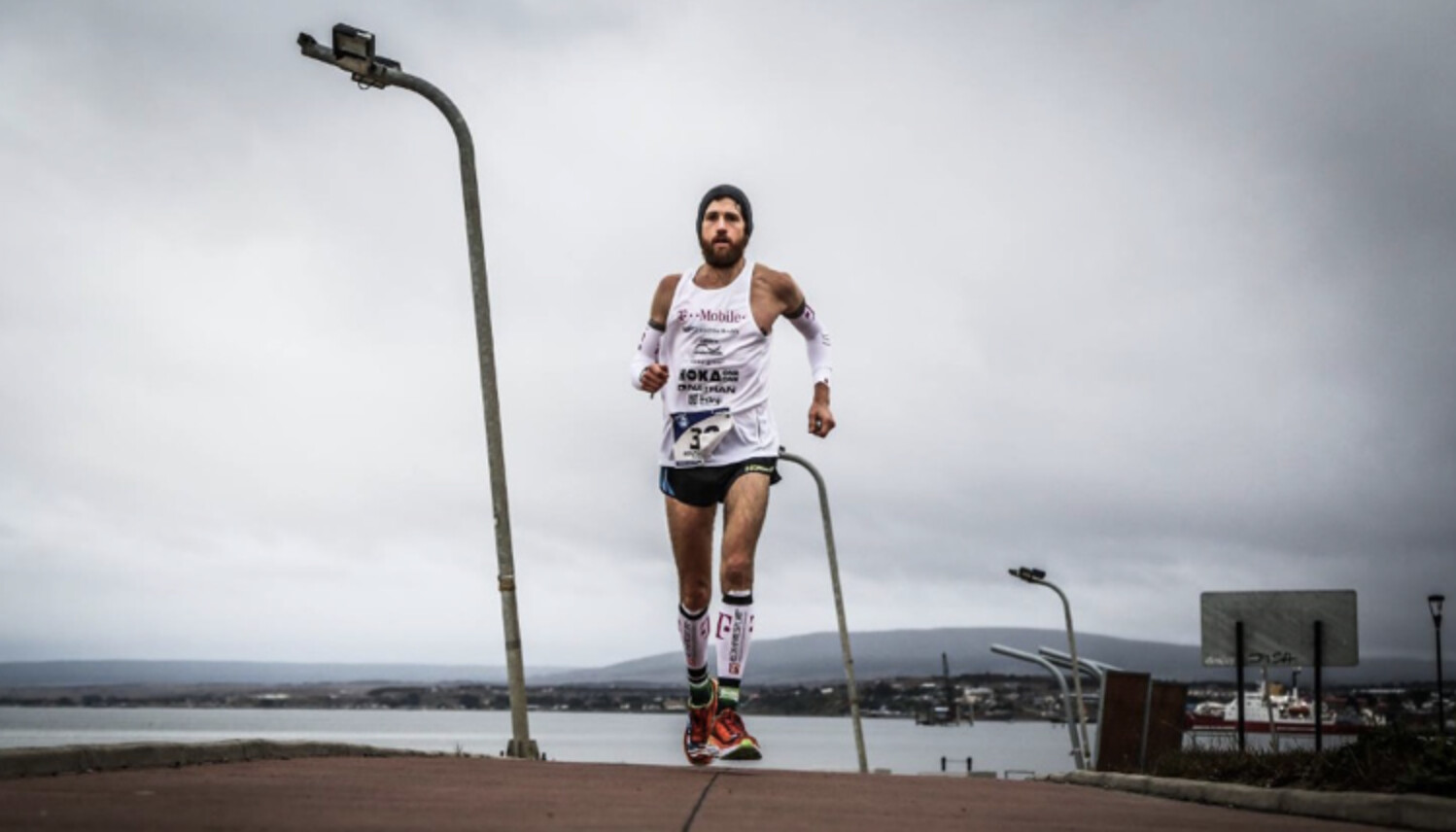
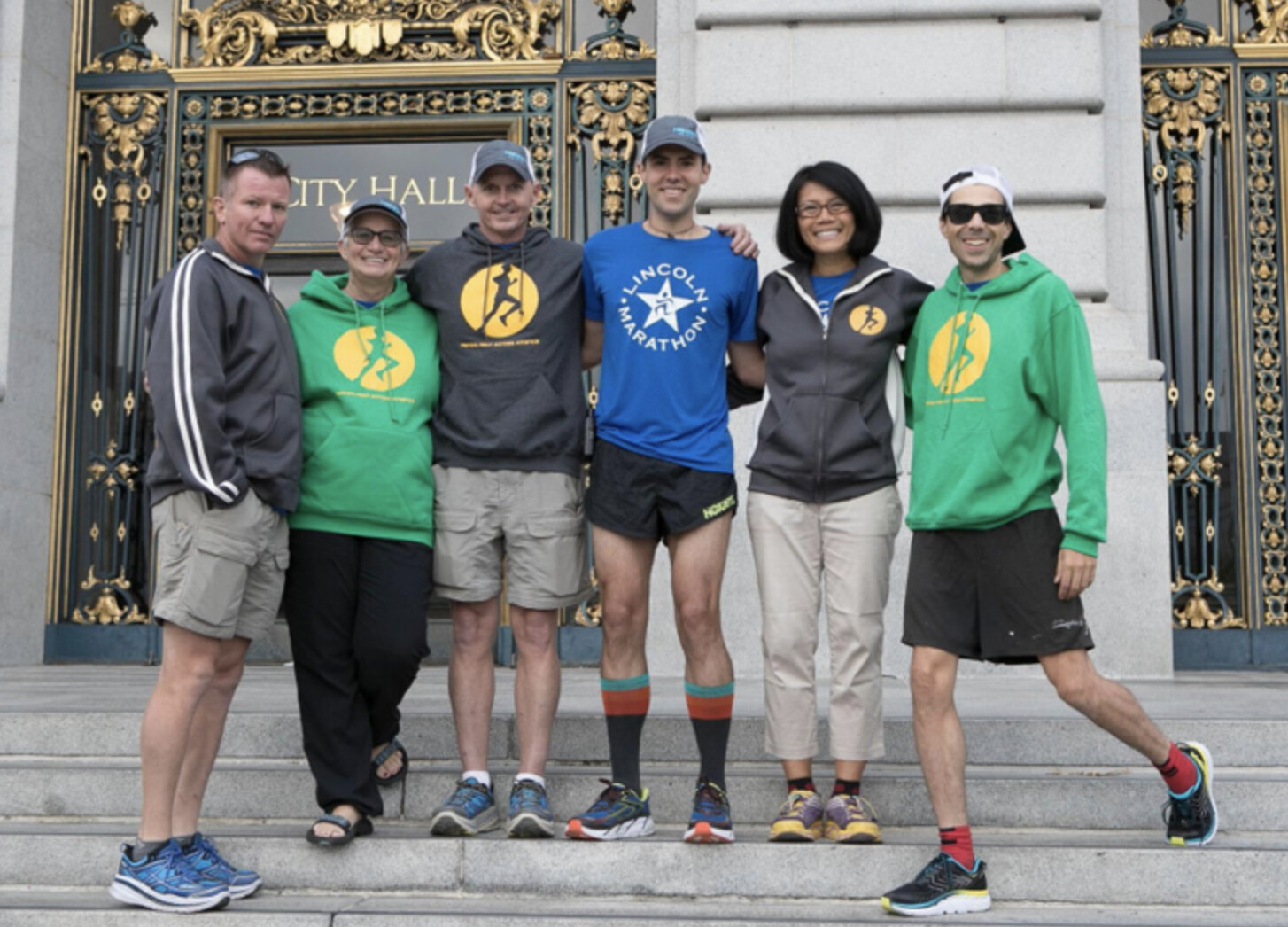
Kostelnick, 35, writes about the Australian adventure: “In running from Perth to Sydney in the bar I’ve set for myself, that will be the most difficult and challenging one I’ll probably ever attempt.” Kostelnick will host a daily podcast throughout his journey, and invites fellow runners to join him throughout his cross-U.S. run, with his expected dates of arrival in various places posted on social media.
Fellow Hoka-sponsored athlete and ultrarunner Mike Wardian of Arlington, Va., has already begun his trek across the U.S., one the athlete says he’s dreamed of for much of his life. Wardian is currently on day 19 of the 5,100 km journey, averaging 80 km per day and supported by his father, Richard Wardian. His daily updates online include what music or book he is listening to (yesterday was Guns and Roses), among other things. Wardian is raising money for World Vision in an attempt to provide greater access to clean drinking water to people across the world, in a project he has dubbed #runninghome.
Canadian Dave Proctor of Okotoks, Alta., is making his second attempt at breaking the cross-Canada record set by Al Howie in 1991. Howie ran from Newfoundland to Victoria in 72 days, 10 hours; following in Howie’s footsteps from east to west, Proctor hopes to complete the trek in 66 days. Proctor’s previous attempt in 2018 ended in injury, and his second attempt has been delayed by the pandemic. Currently on day five, Proctor is averaging 105 km a day and is supported by a varied crew of friends (including Canadian ultrarunners Matt Shepard, Mike Huber and Myron Tetrault, among others) and family, who are flying out separately to various points on his trip and providing aid for six to 16 days each.
Irish ultrarunner Richard Donovan, creator of the World Marathon Challenge (seven marathons on seven continents in seven days), is also running across the U.S., from east to west, in memory of his friend Alvin Matthews. Donovan’s run began the day after the Boston Marathon (which he also ran). He hopes to average about 64 km per day in a scenic and circuitous journey that will take about three months; he made a similar trek in 2015.
All four athletes have demonstrated remarkable prowess at ultra-distance events, and readers and runners alike look forward to both following the athletes online and spotting them on highways on multiple continents over the next few months.
by Running Magazine
Login to leave a comment
Running Home: Michael Wardian Begins His Run Across America
Michael Wardian is running across America to raise money for World Vision.
On Sunday, May 1, from City Hall in San Francisco, California, runner Michael Wardian set off on his latest adventure — a run the whole way across the United States, ending at Rehoboth Beach, Delaware, to raise money for World Vision’s clean water projects around the world. He will be following Route 50, America’s loneliest highway, through some of the remotest parts of the country, and will travel through 13 states, covering over 3,200 miles.Wardian has a host of wild and wonderful running accomplishments to his name, and this latest challenge seems fitting for the runner, who holds the Guinness World Record for the fastest marathon run in Antarctica — 2:54:54, run on January 23, 2017.
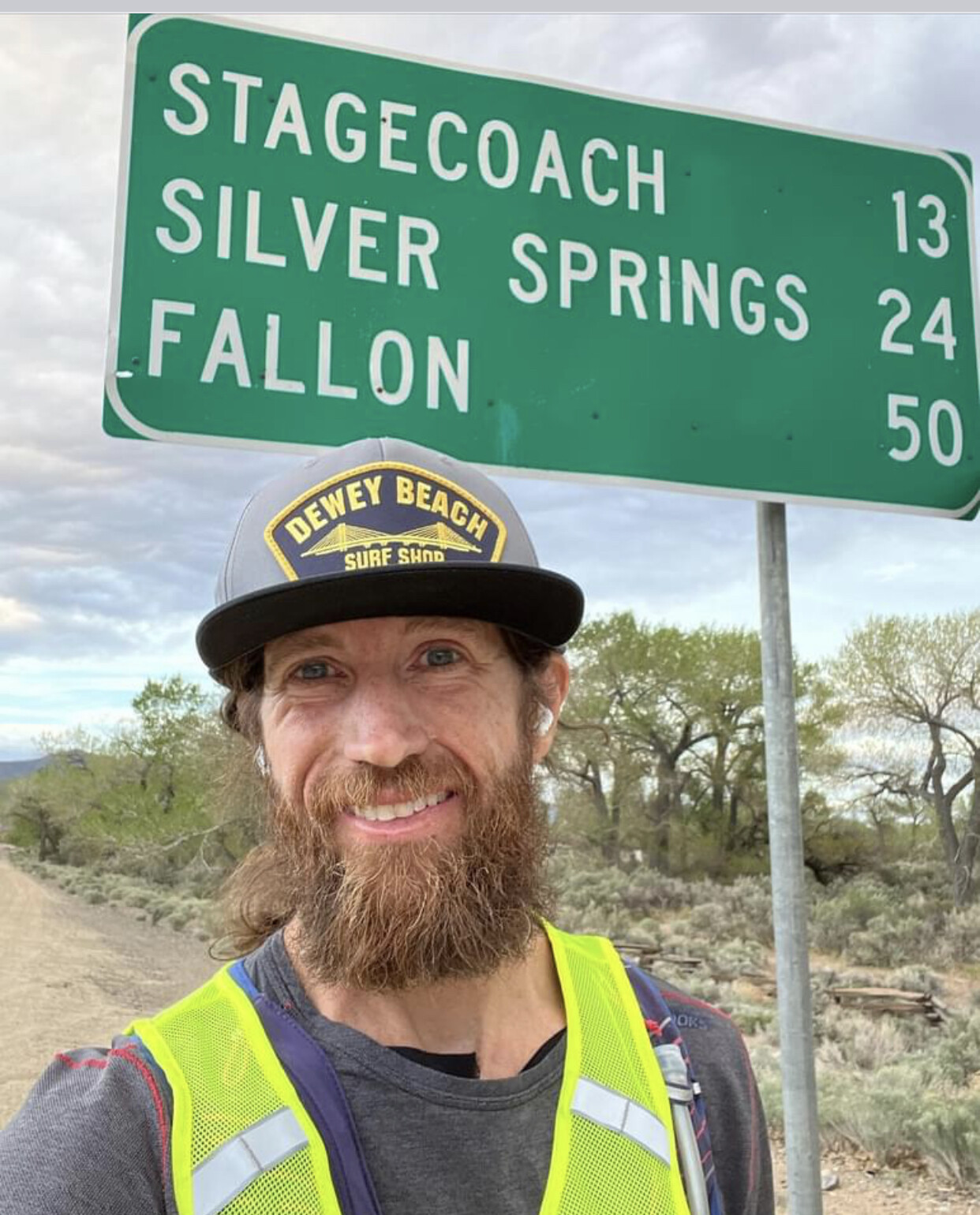
This was the first leg of his World Marathon Challenge, consisting of seven marathons on seven continents in seven days. Wardian holds the fastest cumulative time for the event at 19 hours, 21 minutes, and 36 seconds, averaging 2:45:57 per marathon. His Antarctica run is believed to be the only sub-three-hour marathon run on the ice-covered continent.
Wardian also previously held the record for the fastest marathon pushing a stroller, which he set with the help of his then 10-month-old son Pierce, at the Frederick Marathon in 2007, in a time of 2:42:21.
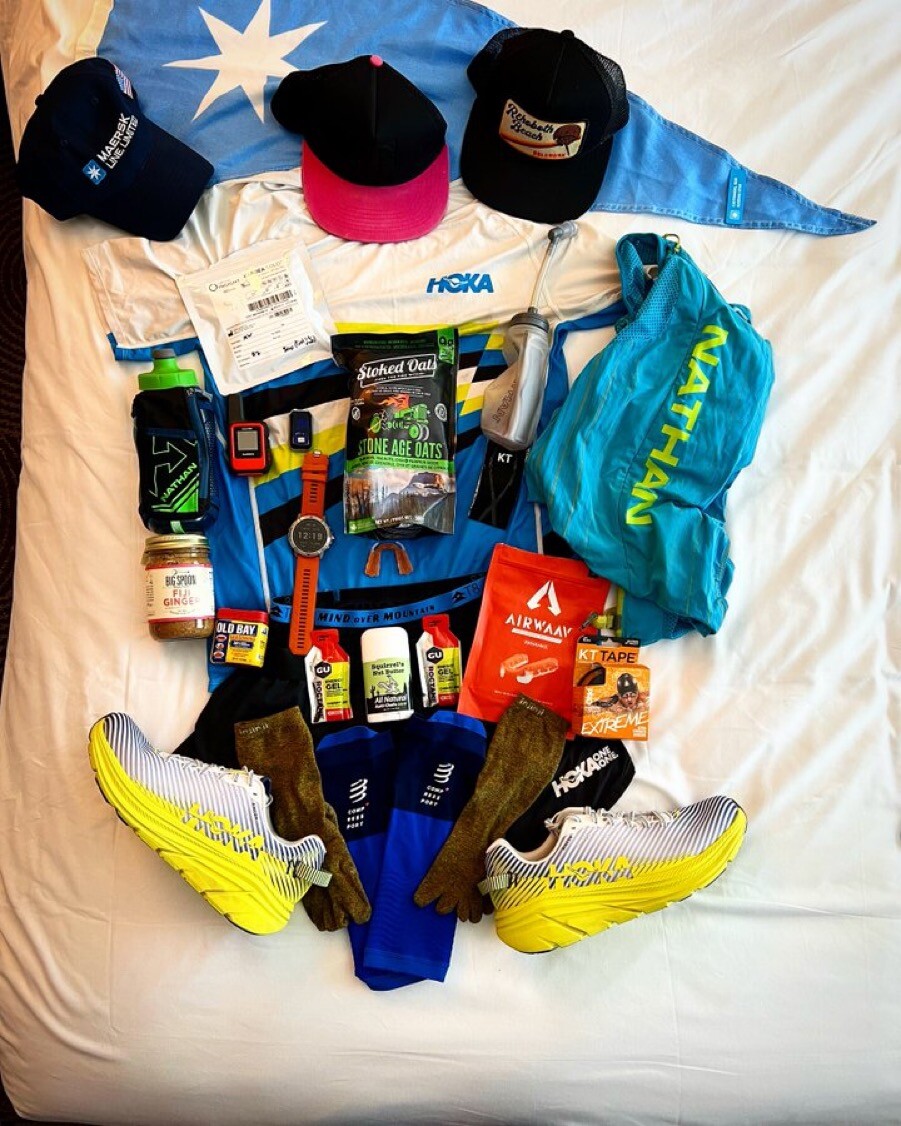
More recently, in 2020, Wardian won the Quarantine Backyard Ultra, completing 262.5 miles, or 63 laps, in a tight circuit around his local neighborhood in Arlington, Virginia, to abide by social distancing requirements during the COVID-19 pandemic.
For the first day of his latest challenge, which is called Running Home because he’s running in the direction of his home, the public was invited to share in Wardian’s send-off and to run a few miles with him.
He told iRunFar he had 20 to 30 people accompany him for the first part of his run from City Hall to Ocean Beach. There he dipped his toes in the Pacific Ocean before heading east on his quest toward the Atlantic, covering 57.97 miles on the first day.
All going well, Wardian’s schedule will see him averaging just over 50 miles per day to finish the traverse, appropriately, on July 4.
When asked about his motivation, he told iRunFar: “I’m trying to raise $100,000 for World Vision for clean water projects. I think right now we’re 14% of the way, so hopefully each day we get a little more and change a lot of lives. I think right now we’ve already impacted [about] 350 lives. It’s so cool, every day I get texts saying that somebody donated five bucks, and imagine if everybody donated just five bucks!”
You can follow Wardian’s run on the live tracker and send him a supportive message, make a donation to his World Vision fund, and help him reach his goal of raising $100,000 for this most worthy cause.
Update: Michael has crossed California and is now in Nevada.
by I Run Far
Login to leave a comment
Thinking About the Boston-Chicago Double? Before You Commit, Here Are a Few Things to Consider
The rare chance to run two major marathons on back-to-back days is tempting...
The 2021 World Marathon Majors schedule isn’t set in stone, but if all goes to the current plan, it is going to look vastly different this fall.

With the announcement that the Boston Marathon will take place on October 11, the six World Marathon Majors will be run within a six-week period between September 26 and November 7. And, don’t forget about the Olympic Marathons, which will take place on August 7 (women’s) and August 8 (men’s).
Berlin Marathon: September 26
London Marathon: October 3
Chicago Marathon: October 10
Boston Marathon: October 11
Tokyo Marathon: October 17
New York City Marathon: November 7
Yes, you’re seeing that correctly—Chicago and Boston are scheduled to be on back-to-back days.
This isn’t the first time we’ve seen back-to-back marathon majors like this. The London Marathon and Boston Marathon have been a day apart 11 times in the history of the races, since both events happen in April. The most recent occurrence of this was in 2011.
While we may see watered-down elite fields at these races as a result of this packed schedule, an intriguing challenge has also emerged: a marathon major double with Chicago and Boston.
In additional to a physical challenge, the logistics of running races in different parts of the country on consecutive days is complex—but it’s not unheard of. We see this in the World Marathon Challenge, where runners like Becca Pizzi run seven marathons in seven days on seven continents. Michael Ortiz, a New York City-based runner, ran back-to-back 100-milers on his quest to complete 100 100-milers in 100 weeks, which he finished in October 2020.
The master of consecutive races is Michael Wardian. He did 10 marathons in 10 days, and he’s even doubled up marathons on the same day when, in 2013, he won the Rock ’n’ Roll San Antonio Marathon in the morning and then took 10th at the Rock ’n’ Roll Las Vegas Marathon that night.
If your interest is piqued by this challenge, here’s a few things you need to consider, with some tips from the master himself.
You need to get entry into each marathon
For starters, the races are tough enough to get into, with Chicago’s drawing and guaranteed-entry systems, and Boston’s qualifying times.
If by chance you do get into both, you’re shelling out $180 for Boston and $205 for Chicago, and that’s if you’re from the U.S. If you’re an international runner, the race entry fee is more like $240 and $230, respectively.
You need to pick up both race bibs
An often-overlooked facet of race weekend is bib pickup. Typically these large marathons don’t have race-day bib pick-up, which poses a problem if you’re running another marathon the day before the race.
Some races, like Boston, are usually pretty good about letting someone else pick up your bib for you, if you follow their requirements. Wardian recommends recruiting a team to help you out with this.
Here’s a possible scenario for the Chicago-Boston weekend:
Fly to Boston on Friday to get that bib
Fly to Chicago on Saturday to pick up that bib
Run the Chicago Marathon on Sunday, then later in the day fly to Boston
Run the Boston Marathon on Monday
But that extra flight and overnight stay in Boston is big cost just to pick up a bib. And speaking of costs...
The cost of traveling from the Midwest to New England on race weekend will be high
Assuming someone can pick up your bib for you in Boston, you’ll need, at minimum, a flight from your hometown to Chicago, a flight from Chicago to Boston, then a flight from Boston back to your hometown. If your hometown is either Chicago or Boston, then lucky you! You can eliminate one of those flights.
Flights are cheap right now because of the pandemic, but they could go up soon if COVID-19 cases start to decline, with the vaccine. In the third quarter of 2019, the average cost of a flight originating at Chicago’s O’Hare airport was $333.50, and the average cost of a flight originating at Boston’s Logan airport was $329.45, according to the Bureau of Transportation Statistics. (However we recently spotted some late-afternoon, one-way flights from O’Hare to Logan for less than $200 on Google Flights!) Based on that information, your flights could run you close to $1,000.
Keep in mind, because you have a limited window for the time of departure for your flight from Chicago and Boston, the best option time-wise might not be the cheapest option available. Remember, your whole morning and early afternoon are likely spent running and getting to the airport. Also you won’t want to arrive too late in Boston, since you have an early wakeup to get out to Hopkinton.
Let’s say you take an Uber to the airport for each flight, and with expected surge costs, that could cost you $50 per Uber ride. Add in two nights of hotel stays, which will likely surge as well because of the big crowds in town. A quick scan of TripAdvisor shows that both Chicago hotel rooms and Boston hotel rooms the night before the respective marathons are running upward of $400.
And this doesn’t even including food! Which means you’re easily looking at $2,500 spent on the weekend—and I think that’s generous estimate.
Consider the training and between-race recovery
If you’re still not deterred by those unique logistics and costs posed by the possibility of a Chicago-Boston double—or even doing all six marathons in six weeks—Wardian has some tips for you. (And no, Wardian has not committed to doing the six-in-six, but he said it piqued his interest.)
Train for this race weekend like you would for an ultra.
Get your body used to running back-to-back hard efforts by doing back-to-back long runs. This way, you’ll be used to feeling heavier legs on day two much earlier than when you’re fresh.
Pack light when traveling.
You can check a bag, but like any race, bring your shoes, apparel, and fuel for the race in your carry-on. I put my gels in a Ziploc bag when going through security, and I don’t usually have a problem. Speaking of gels, you’ll need gels or chews for two races. Don’t forget that.
Eat soon and often.
When you finish the first race, get your drop bag, change into some warm clothes, and start getting calories in. I focus on drinking coconut water and having a smoothie. On the plane, bring your own water bottle and food, so you don’t have to rely on the flight attendants. These collapsible water bottles are great for traveling.
Recovery is key, especially on the airplane.
I wear my CompresSport compression gear during my first race. After that, I try to get my feet elevated for a bit. On the plane, I try to book an aisle or window seat so I can stretch my legs a bit. I also bring a lacrosse ball and use it to roll out muscles when I’m sitting. Also, get up and walk around every 45 minutes during the flight—you likely will have to, with how much water you’ll be drinking. Highly recommend the aisle seat.
by Runner’s World
Login to leave a comment
Ryan Hall completes 69K ultramarathon, calls it ‘the hardest thing I’ve ever done’
Despite running just five times in 2020, the former U.S. Olympian made it through his first ultramarathon
Since retiring from professional running in 2016, American half-marathon record-holder Ryan Hall has not raced too much, and in 2020, he has only gone for a total of five training runs.
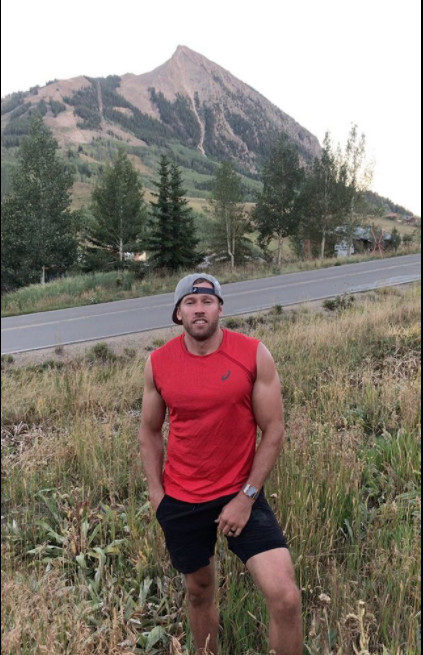
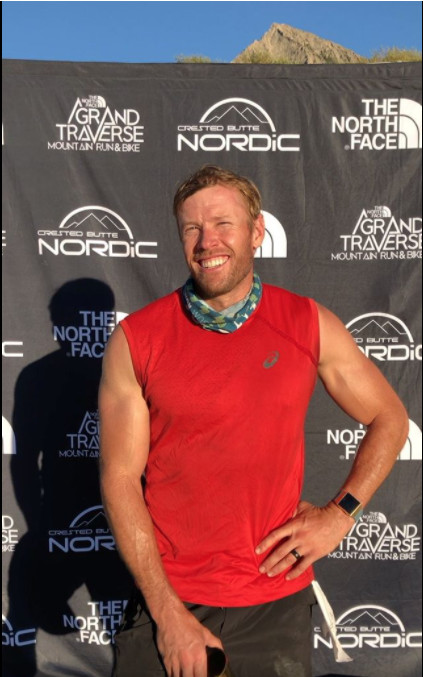
Despite this extremely low mileage for the year, he ran his first ultramarathon, completing the 69K Grand Traverse Mountain Run in Crested Butte, Colo., in 12:47:46.
In an interview after the race, Hall told the Grand Traverse team that he had hoped for “an epic adventure” that was “super hard,” and he said the event “exceeded super hard — it was super, super, super hard.”
The Grand Traverse
Local athlete Cam Smith of Crested Butte won the 69K race in an extremely tight finish, crossing the line just two seconds faster than second-place finisher Nick Coury. Smith won the race in 7:03:04. Hall was almost six hours back of the top finishers, but as he said before the race, he wasn’t running to compete for the win, he was just looking to finish.
“It was not pretty, it was not fast, but I got to the finish line,” he said in an Instagram video after the race. “I got the job done.” In his post-race interview, he said he has “never been more excited to reach a finish line.”
While he of course knew it would be a tough race, especially with no training, he said he still underestimated the challenge.
“It’s a really unique kind of pain,” he said, adding later on in his own video that the race was the hardest thing he has ever done.
No training
Hall works out a lot (he has been heavily invested in powerlifting since retiring from running), but deadlifts and benchpress reps won’t prepare you for any running race, let alone an ultramarathon. This isn’t his first time taking on a running challenge with little training under his belt.
In 2017, he ran the World Marathon Challenge (WMC) — an event in which he ran seven marathons in seven days on all seven continents — on next to no training. He finished in fifth place at that race, but he had no illusions that he could register a top result in Colorado over the weekend. He noted that the no-training approach likely isn’t a good idea for ultramarathons, saying, “I usually don’t recommend these kinds of races off five days of training a year.
Do as I say, not as I do.”
by Running Magazine
Login to leave a comment
Ryan Hall plans to run his first ultramarathon in Colorado
Ryan Hall retired from professional running in 2016, and since then, even though he has participated in a few races, his focus has been on powerlifting. On Saturday, Hall, the U.S. half-marathon record-holder, announced that he is getting back into racing, but instead of his once-preferred distances of 21K or 42K, he will be running a 69K race — his first crack at an ultramarathon.
To add to this already-daunting challenge, he will be racing after running just five times in 2020. The event, the Grand Traverse Mountain Run, is set to be held on September 5 in Crested Butte, Colo.
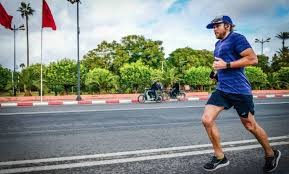
In an Instagram video announcing his race plans, Hall said the Grand Traverse will be an “epic challenge,” adding that he likes to “make it even more epic by not training.” He cited his running of the World Marathon Challenge (WMC) in 2017, an event for which he apparently trained very little. The WMC is a week-long event that sees participants run seven marathons in seven days on all seven continents. Despite his minimal training for that challenge, Hall finished in fifth place.
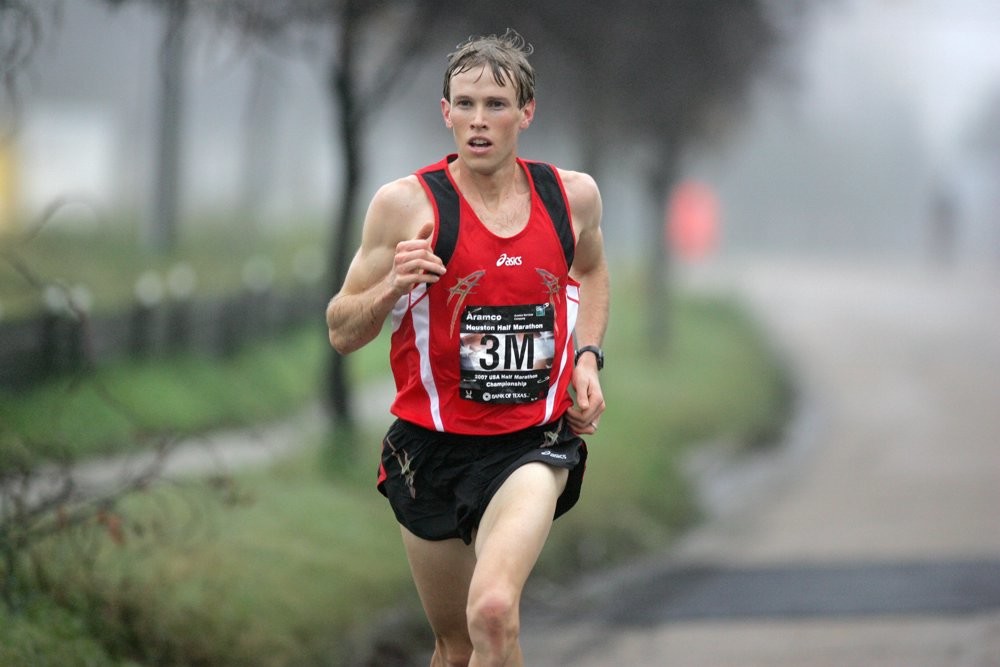
Although he was already heavily invested in weightlifting in 2017, Hall had only been retired from professional running for a year. Now more than four years removed from the lifestyle of an elite runner, Hall may have a tougher time getting through such an arduous challenge.
He noted that he has incorporated other cardio exercises into his training, like boxing, but after averaging less than one run per month all year, he acknowledged that this won’t be an easy undertaking. “I’m going to be in way over my head on this one,” he said, “but that’s where I like to be as an athlete.”
Hall said he is “so stoked for this challenge,” which features more than 2,700m of elevation gain, and he asked any of his ultrarunner followers to leave him tips for the race.
by Ben Snider-McGrath
Login to leave a comment
Chen Huang of China and Denmark's Kristina Madsen both claim fourth wins in race five of World Marathon Challenge
Chen Huang of China and Denmark's Kristina Madsen continued their domination of the World Marathon Challenge in Madrid, Spain on Tuesday (February 11) with their fourth victories out of the five marathons held so far.
"Well, I ran the course last year, I did a 3:12 last year, my personal best last year, so I knew what was coming. Embraced all the hills, I like the uphills and I like the downhills, so it's just a perfect course for me, perfect." Says Madsen.
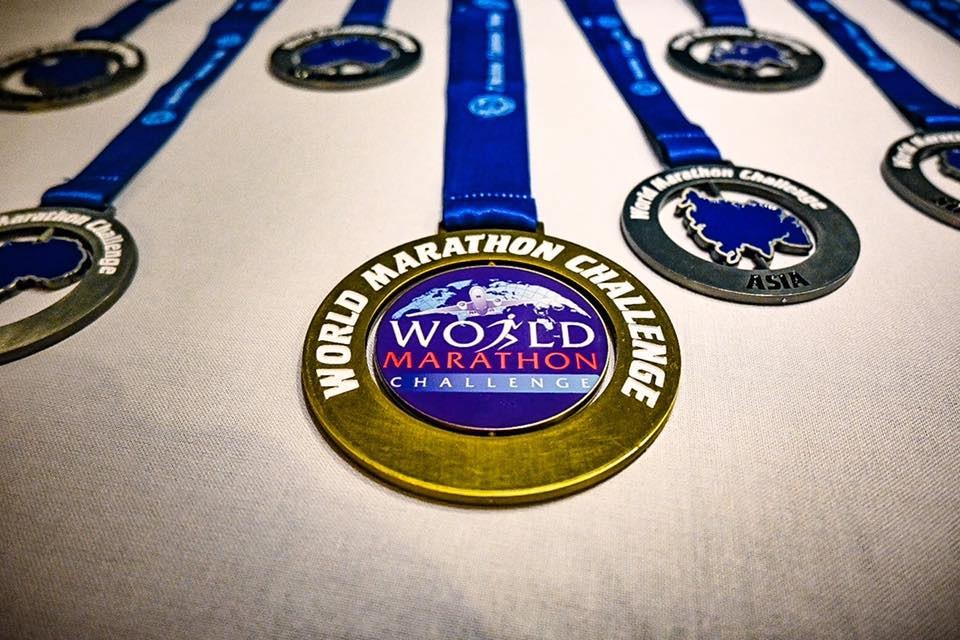
The athletes are attempting to run seven marathons in seven days which began last week in Cape Town (Africa), followed by Novo (Antarctica), Perth (Australia), Dubai (Asia), Madrid (Europe), Fortaleza (South America) and Miami (North America).
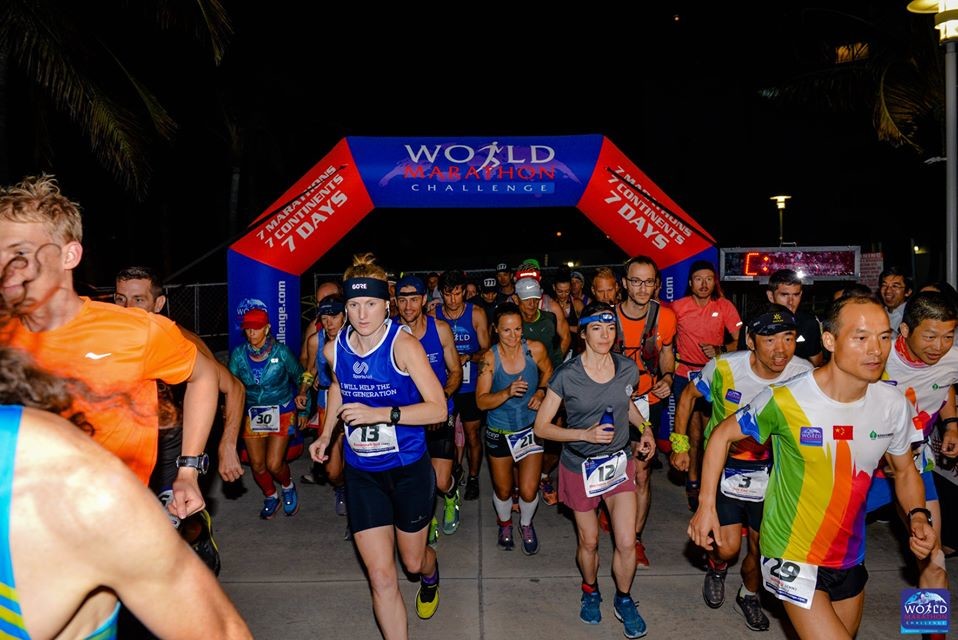
In Madrid, Chen completed the marathon held on the Jarama motor racing track in a time of three hours, 14 minutes, 32 seconds, finishing almost four minutes ahead of Frenchman Olivier Thiriet.
Madsen won the women's race in 3:18:25, crossing the finish line alongside Thiriet and almost five minutes clear of American Jessica Jones in second place.
Chen's only finish off the winner's podium was in Antarctica where he was fourth, while Madsen's only defeat so far was when she took second place behind Jones in Perth.
Immediately after the race, the athletes travelled to Fortaleza in Brazil for race six on Wednesday (February 12) with the concluding race in Miami in the early hours of Thursday (February 13).
Login to leave a comment
World Marathon Challenge
The World Marathon Challenge ® is a logistical and physical challenge to run seven marathons on seven continents in seven days. Competitors must run the standard 42.2 km marathon distance in Antarctica, Africa, Australia, Asia, Europe, South America and North America within 168 hours, or seven days. The clock starts when the first marathon begins in Antarctica. ...
more...Ultrarunner Kristina Madsen of Denmark wins Antarctica Marathon overall at World Marathon Challenge
Race director Richard Donovan had to do some last-minute scrambling to reschedule travel and race times at the 2020 World Marathon Challenge when weather conditions prevented the group from flying to Antarctica on Thursday as scheduled.
Time waits for no man or woman when you have only seven days to run seven marathons on seven continents, so instead, the challenge kicked off in Capetown, South Africa, where elite ultrarunner Kristina Madsen of Denmark was the first female to cross the finish line. On Day 2 of the challenge, in extremely cold, windy conditions, Madsen won the Antarctica marathon outright in 3:54:20.
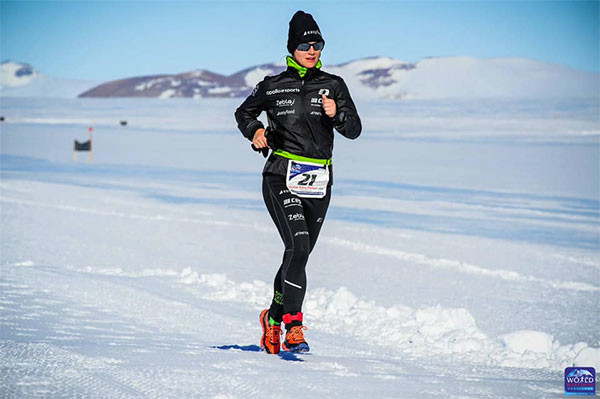
Madsen, 34, is a veteran of both WMC (she was second female last year) and many ultras and Danish national teams.
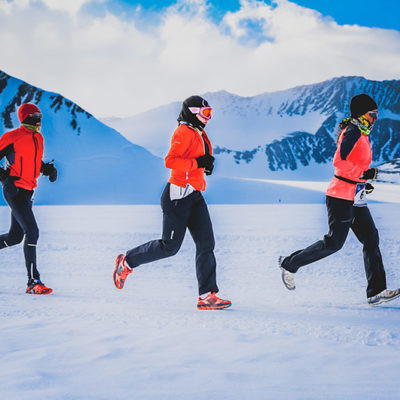
The third marathon is underway in Perth, Australia today, having started at 11:30 p.m. local time.
That wasn’t the only last-minute change to this year’s challenge. There were originally 42 competitors from 15 countries participating (25 men and 15 women), and one Canadian, Elaine Du.
But travel restrictions due to the coronavirus meant seven individuals who were either from China or who had recently traveled there could not participate. Donovan has offered to bring all seven back for the 2021 challenge at no charge.
by Anne Francis
Login to leave a comment
World Marathon Challenge
The World Marathon Challenge ® is a logistical and physical challenge to run seven marathons on seven continents in seven days. Competitors must run the standard 42.2 km marathon distance in Antarctica, Africa, Australia, Asia, Europe, South America and North America within 168 hours, or seven days. The clock starts when the first marathon begins in Antarctica. ...
more...Wounded war hero Luke Wigman is set to run seven marathons, on seven continents for a second time
War hero Luke Wigman will this week run seven marathons, on seven continents in seven days – for a second time.
Elite RAF paratrooper Luke, 33, from Selston, Nottingham, starts the epic race this Thursday in Antarctica as he bids to become the first Brit to ever run the World Marathon Challenge twice.
He scooped a Sun Military Award after completing the epic running challenge in 2017 after suffering horror leg injuries when he stood on a hidden bomb in 2011 in Helmand.

And now he is back to run it again – this time raising funds for the RAF Benevolent Fund – which supported him during his rehabilitation.
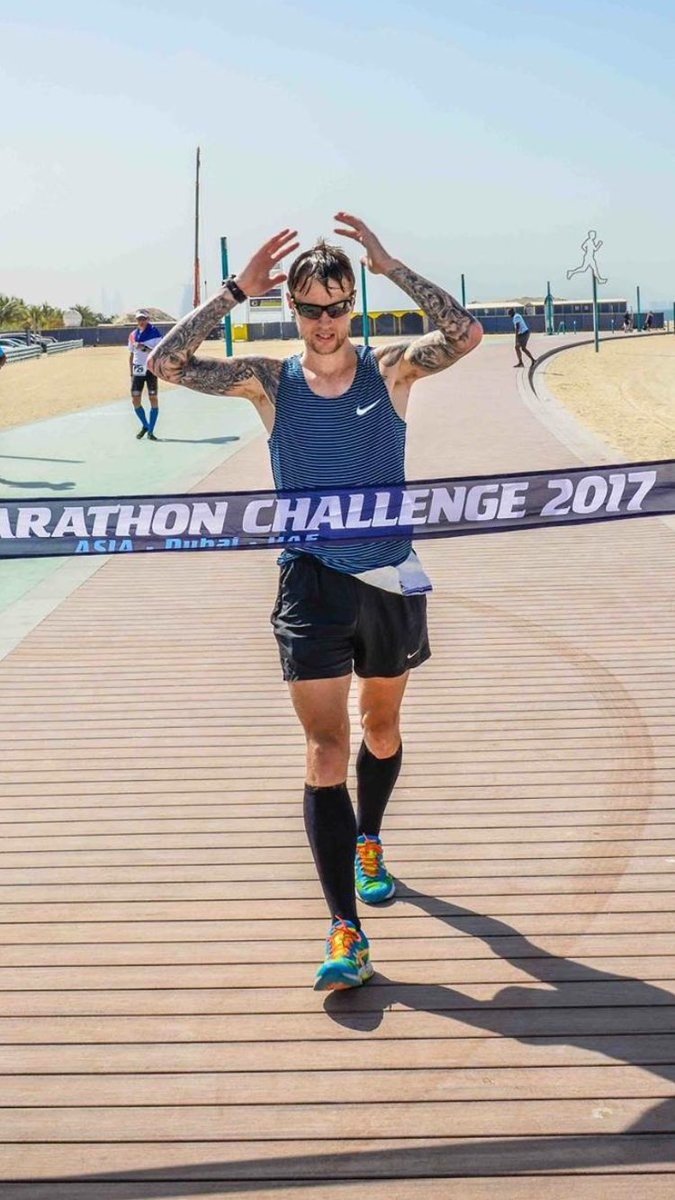
Married Luke, who was a Senior Aircraftsman with the RAF Regiment, revealed he agreed to take on the epic race with just two weeks’ notice.
He said: “My goals are different for this one, I want to survive. I’m not focused on running the best times every single day, I just want to get to the end in one piece.
“When you’re doing this, you don’t know what country you’re in, what time zone, but it’s all irrelevant.
“All you’ve got to remember is you’ve got 168 hours to run 183.4 miles.
“What makes the World Marathon Challenge so hard is the travel, you’re traveling for 60 to 70 hours on a plane, through the week.
“My injury is lower leg, and my blood flow through to the leg is quite bad, so the flying and the traveling is really hard for me.
“I could end up with an elephant leg by the third day just from the flying.
“But if I can get to the end in one piece and shed some light on the RAF Benevolent Fund, then it will be mission accomplished.”
Luke believes the endurance challenge is the toughest of its kind out there, saying: “It’s physically horrendous, it's mentally tiring and it’s a logistical nightmare, but you just need to get to the end.
“I couldn’t let the opportunity pass, the first time was such a success, this time I want to do it for the RAF Benevolent Fund.
“They have had a huge, direct impact, on my life since my injury in 2011.
“If I can replicate what I did three years ago then why not, I’ll do it again.
“This is an opportunity to pay them back, I can only do these incredible challenges because of the rehab I received and the support from the charities along the way.”
In 2017 Luke, who served with the crack Special Forces Support Group, ran consecutive 26.2 mile races in Antarctica, Chile, Miami, Madrid, Marrakech, Dubai and Sydney, in less than a week.
This year the route starts in Antarctica before jetting to Cape Town, South Africa, Perth, Australia, Dubai, Asia, Madrid, Europe, Fortaleza, South America before ending in Miami, North America.
Luke aims to complete the challenge despite his leg being re-built two years ago to repair scar damage caused by the bomb blast.
by David Willetts
Login to leave a comment
World Marathon Challenge
The World Marathon Challenge ® is a logistical and physical challenge to run seven marathons on seven continents in seven days. Competitors must run the standard 42.2 km marathon distance in Antarctica, Africa, Australia, Asia, Europe, South America and North America within 168 hours, or seven days. The clock starts when the first marathon begins in Antarctica. ...
more...Troy University graduate and microbiologist, Jessica Jones will compete in the World Marathon Challenge
Dr. Jessica Jones has run a long way from her hometown of Sulphur Springs, Indiana (population 374), and next week she will be running around the globe.
The 1999 Troy University graduate and microbiologist will compete in the World Marathon Challenge, a challenge in which competitors run seven marathons on seven continents in seven days.
Jones’ journey has taken her to a variety of locations and planned career paths, but running has always come naturally for her.

Coming from such a small town in Indiana, she knows how unlikely her life story has been.
“As a young 17-year-old, I thought I knew exactly what I wanted — a degree in marine biology, to go to a smaller school, somewhere where it was warm and somewhere I could walk onto the cross country team,” Jones said. “It just so happens those factors liked up for me at TROY.”
A phone conversation with then-cross country coach (and Troy University Athletics Hall of Famer) Bob Lambert convinced Jones that TROY was the right destination for her.
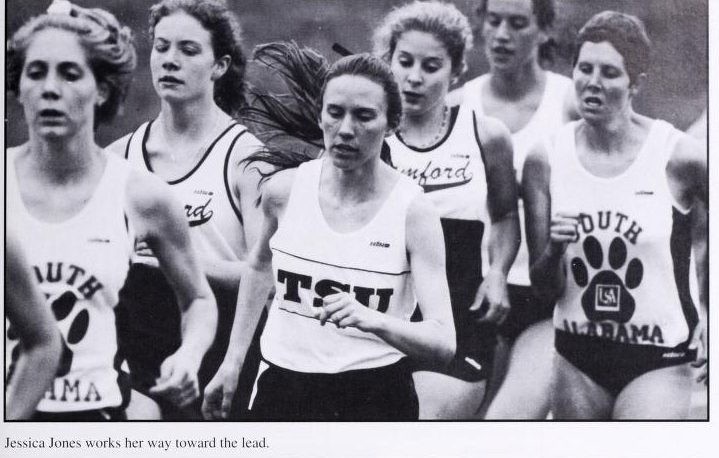
She ran track and competed in cross country for two years at TROY, finding the University to be a home away from home.
“I loved it, I really did,” she said. “It was the perfect fit for me. TROY has grown a lot since I was there, but it was exactly what I was looking for — it wasn’t overwhelming to me, coming from a small town, and I was really happy to be a Trojan athlete.”
Jones stopped running in order to focus on her studies, and she later switched tracks, earning a Ph.D. in microbiology from South Alabama.
While she kept running to stay in shape, a national tragedy inspired her to enter the world of marathons.
“I started marathoning after the Boston Marathon bombing (in 2013),” Jones said. “I was already into running again pretty seriously at that point – 5k, 10k and half marathons. After the bombing, there was a big sense of community, and the runners all pulled together. It reminded me that’s where I felt happy was in the runner community at TROY. That motivated me to go for a marathon.”
Since then, Jones has competed in more than 30 marathons, recently winning the Mississippi Gulf Coast Marathon and the Mobile Marathon.
Now, the person who didn’t want to be overwhelmed in college is preparing to compete in Antarctica, among other exotic locales.
“I’ve been thinking about this for four or five years,” said Jones, who works as a supervisory microbiologist at the Food and Drug Administration Gulf Coast Seafood Laboratory on Dauphin Island. “A friend of mine at work, his niece ran this event either the first or second time it happened. I said, ‘Wow, that’s incredible, I can’t imagine doing that.’ Then I started thinking that maybe I can imagine it. She set the world record, and I said, ‘I’ve got to do that.’”
While Jones has traveled to Europe and South America before, this daunting challenge will be an entirely new experience.
by Greg Phillips
Login to leave a comment
World Marathon Challenge
The World Marathon Challenge ® is a logistical and physical challenge to run seven marathons on seven continents in seven days. Competitors must run the standard 42.2 km marathon distance in Antarctica, Africa, Australia, Asia, Europe, South America and North America within 168 hours, or seven days. The clock starts when the first marathon begins in Antarctica. ...
more...Linda Carrier, 57, is ready for global challenge
Upon crossing the finish line of a marathon, endorphins high and glowing with accomplishment, any devoted runner might start thinking about the next one.
In a few weeks, Linda Carrier will finish six laps of a seven-kilometer ice airstrip in Antarctica and board a plane, not for home in Pinehurst, but to Cape Town, South Africa.
There will be another race to run 12 hours hence.
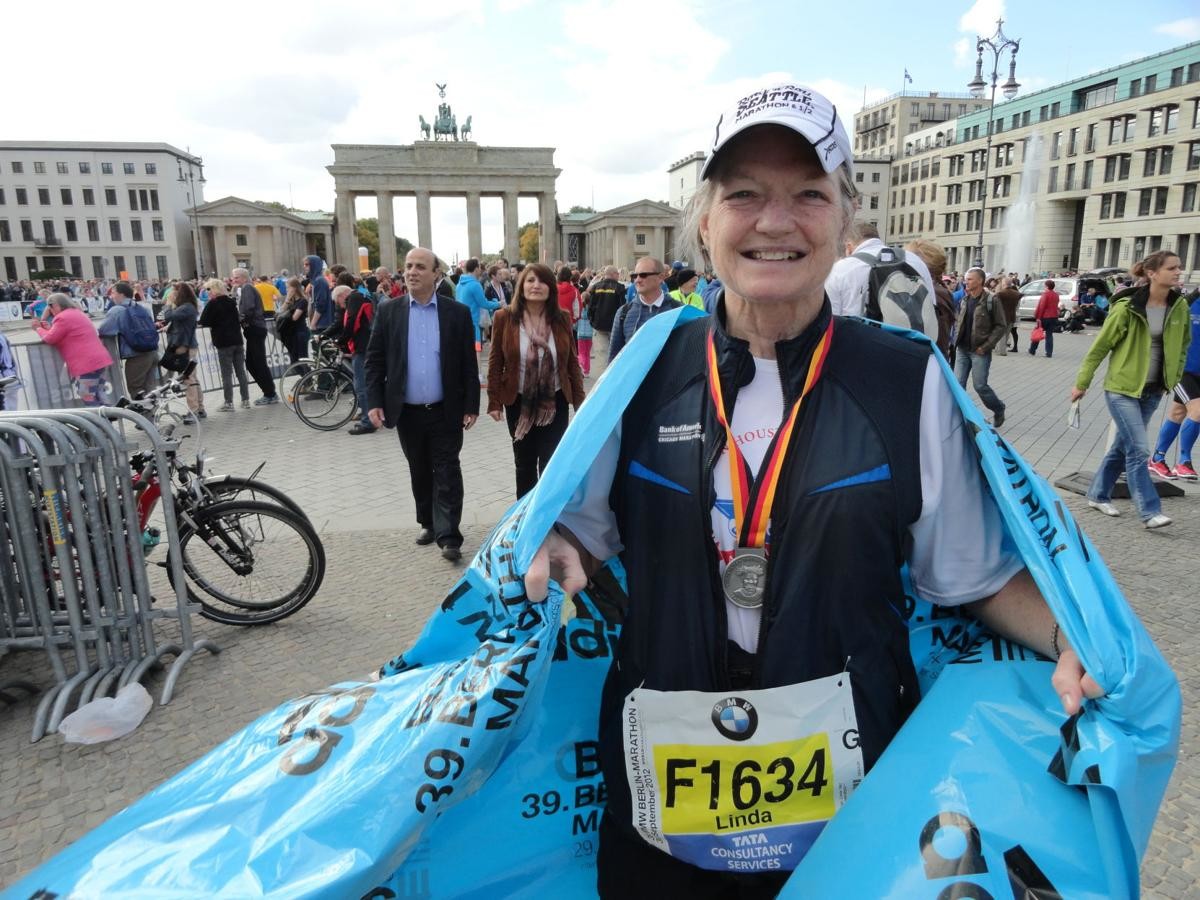
Going from subzero temperatures to a summer day will call for a wardrobe overhaul, but a half day and 2,500 miles after finishing the first marathon, Carrier will set off on another 26-mile course.
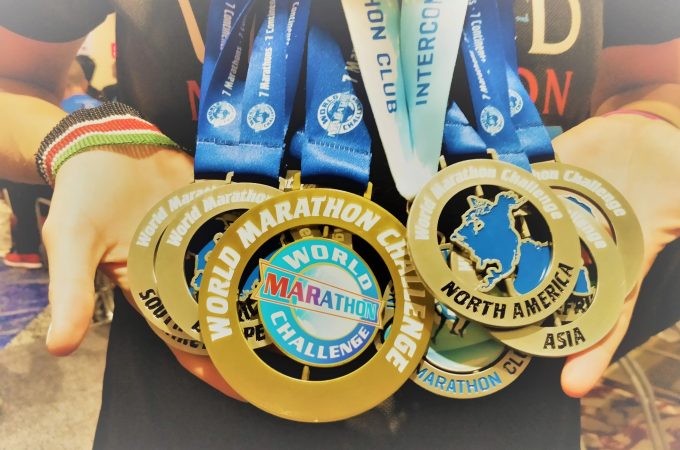
That’s just the first leg of the World Marathon Challenge, which will see Carrier and 40 other runners from around the world run seven marathons on seven continents. They have all of 168 hours to do it.
Extreme athleticism has been in vogue for a while as a way to subvert midlife crisis, but Carrier took up running as a teenager soon after she was diagnosed with Type 1 diabetes. She first ran a half marathon in 1995 at 33, and has been gradually pushing her physical boundaries ever since.
Carrier has run more than 100 marathons and half-marathons. Not just any marathons, either: Berlin, Chicago, New York, London, Tokyo and three times at Boston. She celebrated her 50th birthday by running a 50-mile trail ultramarathon in Washington state.
“I never let diabetes define me". She said. When she was diagnosed with diabetes, there was no question of slipping into inactivity as she learned to give herself insulin and moderate food intake.
“Running added to the complexity of the equation, but my doctors said it was really helping,” she said.
Carrier dove into distance running on a lark. She ran her first marathon in Honolulu with friends and hoped, at best, to come through it alive.
As forms of exercise go, running is easily the most accessible. There’s no equipment needed, aside from a decent pair of shoes, and any trail or stretch of road will suffice for a course. It wasn’t long before Carrier started noticing her fellow runners’ shirts, and the names of groups that transcend national boundaries and unite people who make a hobby of running regular marathons.
She was soon drawn into the fold and found herself ticking off all the boxes: qualifying for Boston, then onto the other major cities. Now 57, Carrier has run marathons in 29 states, which means she only has 21 to go.
“The key to this schedule is you start out and just start to build,” she said. “Her training schedule basically got it where I was learning to run on tired legs. Running seven marathons and flying over 33,000 miles straight, through all of the time zone changes and running in different temperatures, you’re going to be tired.”
“Linda is an inspiration to so many within the diabetes community as she represents our goal of helping individuals with diabetes live longer, healthier lives,” said Mark Grant, vice president of the Americas region for the Diabetes Group at Medtronic. “We are humbled that our MiniMed 670G has supported her journey, and look forward to following her future successes.”
by Mary Kage Murphy
Login to leave a comment
World Marathon Challenge
The World Marathon Challenge ® is a logistical and physical challenge to run seven marathons on seven continents in seven days. Competitors must run the standard 42.2 km marathon distance in Antarctica, Africa, Australia, Asia, Europe, South America and North America within 168 hours, or seven days. The clock starts when the first marathon begins in Antarctica. ...
more...Nontuthuko Mgabhi from Richards Bay aims to be the first woman from Africa to run the World Marathon Challenge
A Richards Bay woman is aiming to become the first woman in Africa to run the World Marathon Challenge - seven marathons on seven continents in seven days - in February.
On Suday, a 15km and 5km fun run and walk was held in Bulwer to raise awareness about her attempt and to help raise funds for it.
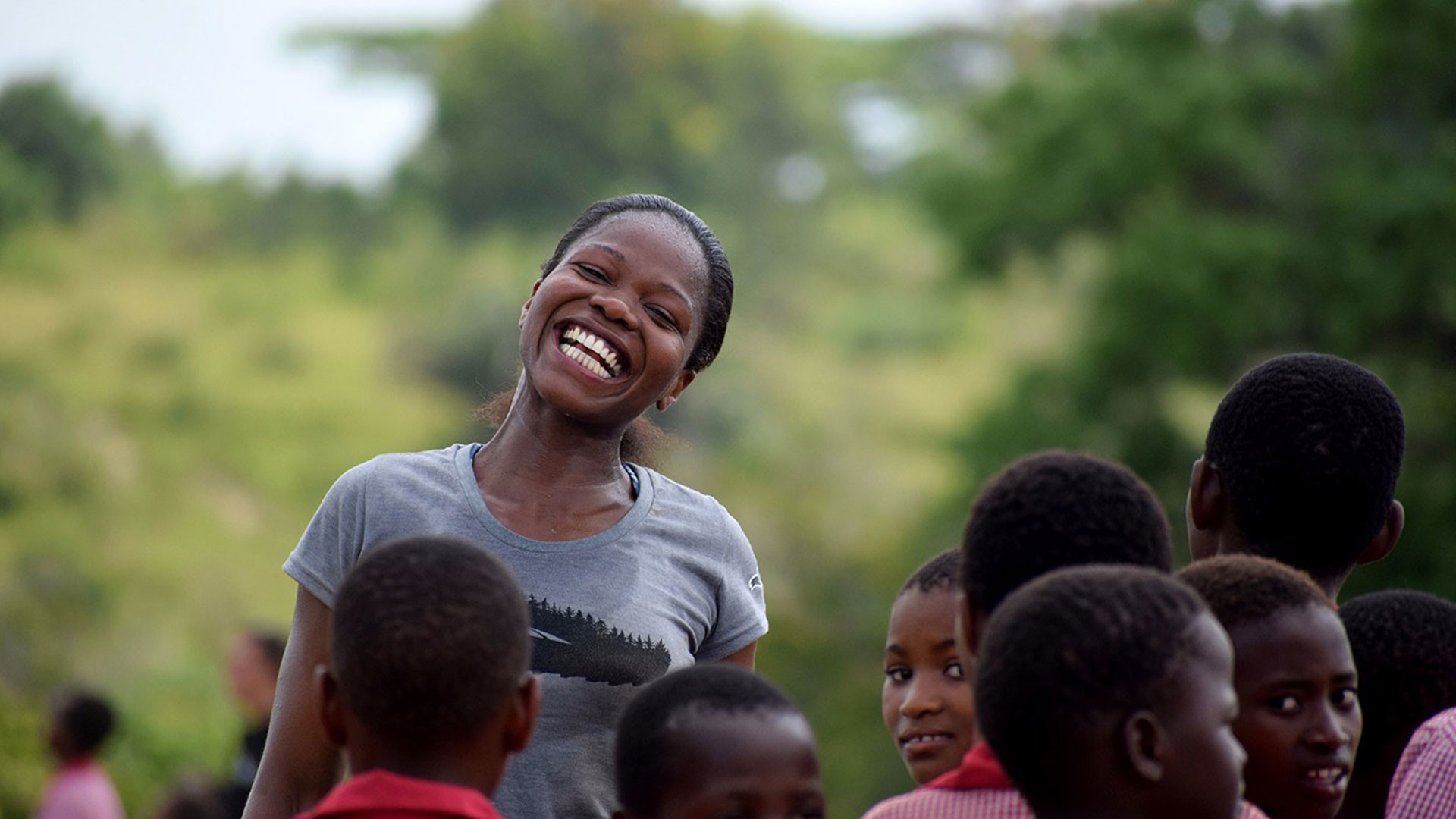
Nontuthuko Mgabhi, 32, will use the challenge to raise R3.5million for Khipinkunzi Primary School in Mtubatuba.
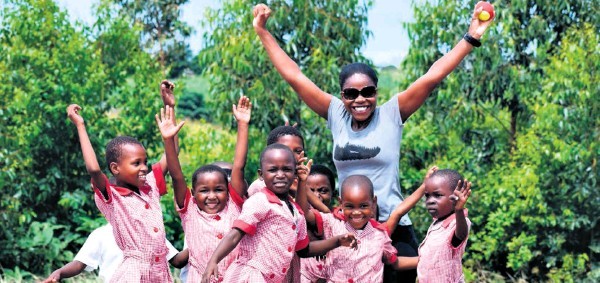
“I wanted to do something special for my birthday and was asked to give a motivational speech at the primary school last year, which has 657 pupils from Grade R to Grade 7. When I arrived at the school, I saw the poor state it was in and wanted to make a difference,” Mgabhi explained.
She is aiming to raise R3.5million to build five classrooms, two administration offices and to revamp the school.
Participating in the World Marathon Challenge means she would have to cover 295km and spend about 68 hours flying. The first marathon is in Antarctica on February 6, the second will be Cape Town on February 7, February 8 is in Perth, February 9 in Dubai, February 10 in Madrid, February 11 in Fortaleza in South America, and finishing in Miami on February 12.
Mgabhi said she started running in 2013, when a friend asked her to participate in the East Coast Radio Big Walk with her.
Ten months later, she participated in the Comrades Marathon and has since completed more than 50 marathons, including four Comrades and 15 ultra marathons.
by Kwazulu-Natal
Login to leave a comment
World Marathon Challenge
The World Marathon Challenge ® is a logistical and physical challenge to run seven marathons on seven continents in seven days. Competitors must run the standard 42.2 km marathon distance in Antarctica, Africa, Australia, Asia, Europe, South America and North America within 168 hours, or seven days. The clock starts when the first marathon begins in Antarctica. ...
more...Ultra--marathon runner Susannah Gill has written a book about her running experiences
The ultra-marathon runner, whose parents live in Much Wenlock and who spent her time training in the south Shropshire hills, has teamed up with her coach and founder of The Running School, Mike Antoniades, to write a book of her experiences.
'Running Around the World: How I ran 7 marathons on 7 continents in 7 days' takes the reader on a truly inspiring journey which sees Susannah go from a non-runner to conquer her ultimate challenge of running 183 miles (295 km) and travelling 55,000 miles, all inside 168 hours. In the process she ran in to the female world record holder.
Readers are taken on a whistle-stop global tour, from the icy snow of Antarctica all the way around the world to the warmth of Miami’s South Beach.
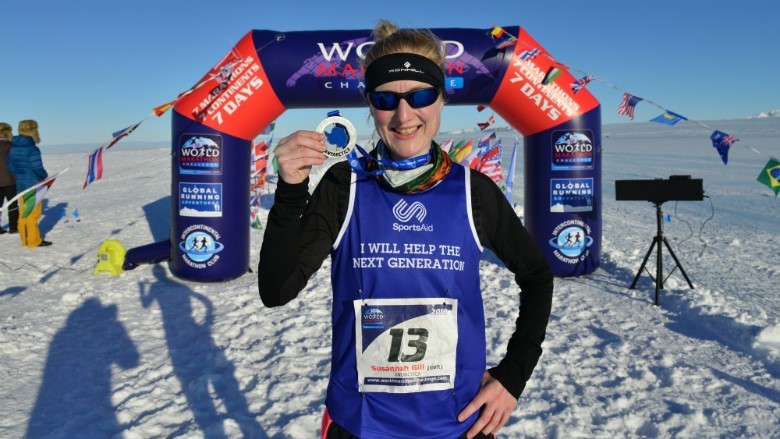
Susannah raised nearly £20,000 for SportsAid, a charity that supports Great Britain’s next generation of athletes.
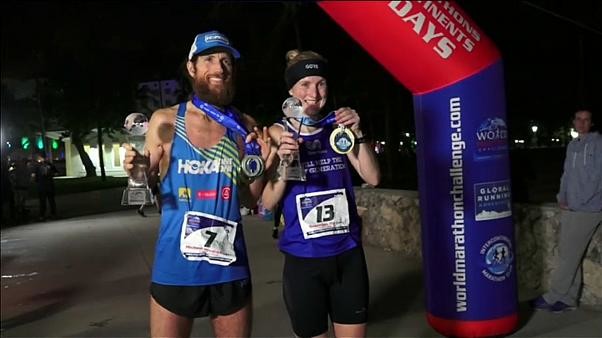
Her best marathon time is 2:56, which she achieved at the Manchester Marathon in April 2019. Aside from the 60+ marathons she has completed over the last decade, she has run numerous ultra-marathons, including 100-kilometre, 100-mile and 24-hour races.
The book is based on the special partnership between runner and coach. Susannah and Mike give unique insights into the physical effort and mental toughness needed to achieve Susannah’s world record which saw her complete each marathon in an average time of 3 hours 28 minutes and 9 seconds.
Susannah said:“In January, I set off with 39 other runners with the aim of completing the 2019 World Marathon Challenge.
"I came home a world record holder, having had the experience of a lifetime. With this book I wanted to share openly and honestly the highs, the lows and the often unexpected joy of pushing myself to new limits.
"I hope my story can inspire other people to realise we can all take on incredible challenges and be amazing.
“I am so pleased to have written this book with Mike. His expertise and support helped my running dreams come true.
"I am indebted to Mike and all at The Running School, as well as those involved in the World Marathon Challenge for allowing me to be part of such an amazing challenge.”
Mike added: “Over the last 40 years I have coached thousands of runners and athletes, many recreational runners and others to win medals and titles.
"What Susannah has achieved is a unique test of mind and body and an example of what can be achieved with focus and determination. In this book we have shared what we have both learnt, which we hope is both entertaining and helpful to all runners.”
Esther Newman, Editor Women’s Running Magazine, said: “Susannah is an incredible ambassador for women’s running."
Susannah will be speaking at The National Running Show on January 25-26.
by Lucy Todman
Login to leave a comment
World Marathon Challenge
The World Marathon Challenge ® is a logistical and physical challenge to run seven marathons on seven continents in seven days. Competitors must run the standard 42.2 km marathon distance in Antarctica, Africa, Australia, Asia, Europe, South America and North America within 168 hours, or seven days. The clock starts when the first marathon begins in Antarctica. ...
more...Jonathan Negretti, principal of a personal injury law firm will run 7 marathons on 7 continents in 7 days for charity
Jonathan Negretti will be one the competitors in the 2020 World Marathon Challenge. The World Marathon Challenge, which involves running seven full marathons on seven continents in seven days, will kick-off on Feb. 6, 2020 in Novo, Antartica.
Negretti will be one of only 50 competitors and will be competing to raise funds and awareness for Heather’s Mission, a nonprofit organization co-founded by Negretti’s wife to help those suffering from Crohn’s and Colitis Disease.
Negretti is personally afflicted with Ulcerative Colitis (UC), a type of inflammatory bowel disease that is a chronic and oftentimes debilitating disorder. It is predicted by the Crohn’s & Colitis Foundation that the two diseases affect more than 1.7 million Americans, but their unpredictability and the stigma attached to them makes them hard to diagnose and treat, so most people suffer in silence.
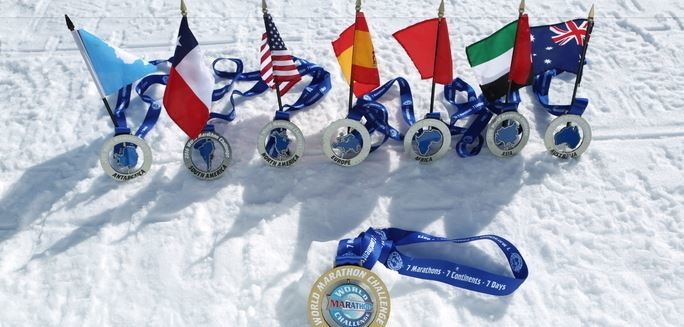
Negretti was diagnosed with UC 20 years ago and eventually had to have surgery to remove most of his large intestine, which now requires him to live full-time with an ostomy bag. Negretti will be the only World Marathon Challenge competitor with a “disability,” even though he doesn’t consider it that.

“Participating in the World Marathon Challenge is not only an epic personal challenge, but an incredible platform for me to raise awareness for Heather’s Mission,” said Negretti. “My hope is to garner enough attention to make a difference in people’s lives and inspire others who are living with an ostomy.”
Heather’s Mission has adopted a stuffed animal bear called “Awesome Ollie the Ostomy Bear,” which it is working to get into the hands of patients who have undergone an ostomy surgery.
Negretti is raising funds for Heather’s Mission with a goal of donating one thousand Awesome Ollie Bears to the nonprofit organization. If he meets this goal, he will take Awesome Ollie around the globe with him on the World Marathon Challenge.
Login to leave a comment
World Marathon Challenge
The World Marathon Challenge ® is a logistical and physical challenge to run seven marathons on seven continents in seven days. Competitors must run the standard 42.2 km marathon distance in Antarctica, Africa, Australia, Asia, Europe, South America and North America within 168 hours, or seven days. The clock starts when the first marathon begins in Antarctica. ...
more...Boston Marathon race director Dave McGillivray will attempt to run his 47th consecutive Boston Marathon just six months after undergoing open-heart, triple-bypass surgery
Renowned race director and endurance athlete Dave McGillivray will attempt to run the 123rd B.A.A. Boston Marathon just six months after undergoing open-heart, triple-bypass surgery on October 12, 2018. This will be McGillivray’s 47th consecutive running of the world-famous marathon, of which he is race director. McGillivray will make his attempt after completing his official race day duties.
“Without question, this will be my most challenging marathon ever,” said McGillivray. “The 30,000 runners in the race are my number one priority. I only start thinking about my own run later in the afternoon when the final finishers are nearing the end of the race.” Depending on how the day unfolds, he expects to start in the late afternoon and finish between 10:00-11:00 pm.
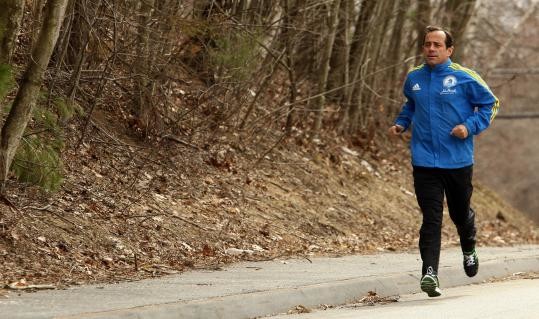
McGillivray added, “This is not the best way to prepare to run a marathon, but I really don’t have many other choices.” This will be McGillivray’s 156th competitive marathon, his 47th Boston Marathon, and the 32nd time running the race at night.
McGillivray’s medical team is supportive but also cautious about his attempt to run the marathon so soon after surgery. “As long as Dave prepares adequately, listens to his body, and is prepared to adjust his expectations as appropriate for being 6 months out of open- heart surgery he should do fine,” said Dr. Aaron Baggish, McGillivray’s cardiologist.
“Dave knows his own body better than anyone and I support his efforts as long as he takes it slow and remains patient throughout his run,” said Dr. David D’Alessandro, McGillivray’s heart surgeon from Massachusetts General Hospital. McGillivray said he asked D’Alessandro before the surgery if he thought he could run the marathon six months later, and his surgeon said, “I would be extremely disappointed if you couldn’t.”
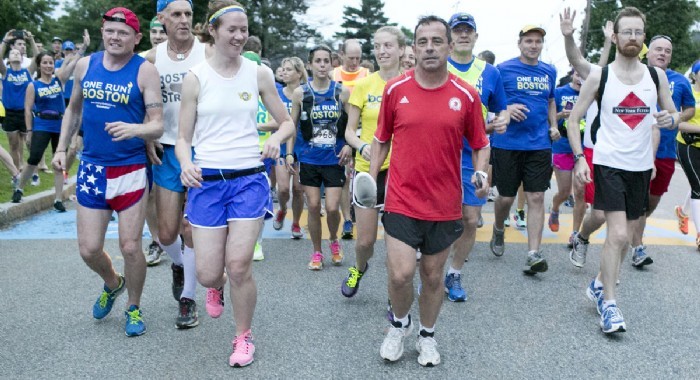
McGillivray was released from Massachusetts General Hospital four-and-a-half days after his surgery. He first started a walking program and eventually progressed to running without walking. He ran a half marathon in early March; his longest run the past seven months has been 18 miles. “I have my good days and I have my not-so-good days,” McGillivray said. “My breathing is still labored but I’m making progress. For me, the only bad day I could ever have anymore is if I didn’t wake up at all. I consider every day now as a gift.”
This year, thirteen other running friends will be joining him, including nine who participated alongside McGillivray in the 2018 World Marathon Challenge, running seven marathons in seven days on seven continents. They will be supported by McGillivray’s brother, Bob, and long- time friend Ron Kramer, who will leap-frog the group down course while providing water and food as needed. A few medical professionals will also join them as a precaution.
Login to leave a comment
Boston Marathon
Among the nation’s oldest athletic clubs, the B.A.A. was established in 1887, and, in 1896, more than half of the U.S. Olympic Team at the first modern games was composed of B.A.A. club members. The Olympic Games provided the inspiration for the first Boston Marathon, which culminated the B.A.A. Games on April 19, 1897. John J. McDermott emerged from a...
more...The NYRR Millrose Games will always have its Irish air
Even if the list of competitors is not chock-a-block with Irish names there will always be an Irish air about the Millrose Games which are set for Saturday, February 9 at the Armory in Washington Heights, Manhattan.
For one thing the Meet Director this year, as he has been for a number of years now, is legendary Irish middle distance runner and Longford native, Ray Flynn.
“This is the 112th Millrose Games and the eighth Millrose meet at the Armory. It’s a big deal,” Flynn says.
A big deal indeed.
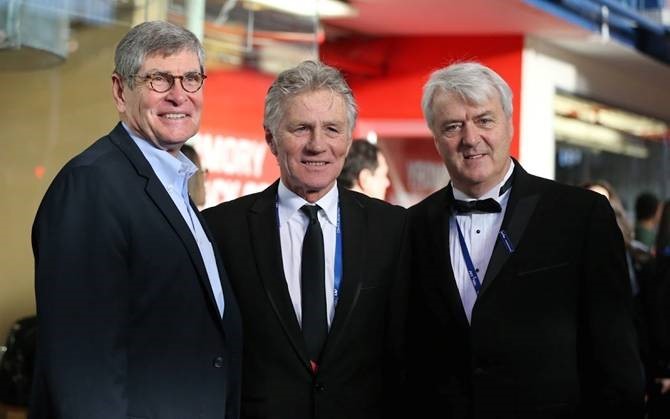
“And if there’s one thing I’ve learned it’s that the Armory is an incredible venue, especially for the kids,” Flynn said.
The New York Road Runners Millrose Games did indeed move, in 2012, from the much larger Madison Square Garden to the cozier confines of the uptown Armory.
The effect, however, was a positive in that the Armory is filled to the rafters with 5,000 cheering track and field fans. 400 extra seats have been squeezed in for Saturday’s meet.
One of those cheering will be, of course, Eamonn Coghlan, the “Chairman of the Boards.”
Coghlan and Flynn are but two Irish middle distance veterans who remind track fans of a golden era in Irish middle distance running, that being the 1980s.
Coghlan is the holder of seven Wanamaker Mile titles and holds, among many other titles and laurels, a World 5000 Meter championship gold medal.
Ray Flynn has 89 sub 4-minute miles under his belt and is both the Irish Mile Record holder (3:49.77) and Irish 1,500m Record holder (3:33.5). Both records were broken in the same race in 1982 in Oslo in the Bislett Games Dream Mile.
Flynn, was an All-American in track and field and cross country at East Tennessee State, where his team in 1975 captured the NCAA Track and Field Championship.
Now 62, Flynn currently works as an agent for track and field athletes and is based in Johnson City, Tennessee.
Millrose is unique in that Olympians, as well as other elite professional, college, high school and youth track and field competitors, line up for the various events.
This year, two lucky Sligo kids will get to rub shoulders with some of the best athletes in the world by racing in the “Fastest Kid on the Block” competition.
Alice Belo and Shane Haran will be representing their county and Ireland.
In Sligo, the Fastest Feet program is being used every year to introduce kids to sport, specifically athletics. The man backing the program is Galway’s Richard Donovan who is also behind the World Marathon Challenge, the North Pole Marathon, the Volcano Marathon and other epic global sporting events.
The Armory being indoors, Alice and Shane need not worry about a return of the Polar Vortex.
No fewer than 32 Olympians are included in this year’s Millrose roster. There are Irish names evident, but they belong to athletes from the U.S., Canada, Australia and indeed Antigua & Barbuda.
Login to leave a comment
NYRR Millrose Games
The Pinnacle of Indoor Track & Field The NYRR Millrose Games, first held in 1908, remains the premier indoor track and field competition in the United States. The 2025 edition will once again bring the world’s top professional, collegiate, and high school athletes to New York City for a day of thrilling competition. Hosted at the New Balance Track &...
more...British runner Susannah Gill has won the women’s title at the World Marathon Challenge after completing seven marathons in seven days, battling diverse conditions across seven continents
Gill finished a grueling 295-kilometer (183 miles) challenge in a world record time of 24 hours, 19 minutes and nine seconds, burning up to 5,000 calories a day.
The 34-year-old, who started the remarkable journey with the first round in Antarctica on Jan. 31, ran the final race in Miami on Wednesday in 3:26:24.
“It was a crazy ambition that I wanted to do. The challenge seemed absolutely irresistible to me,” Gill told BBC.
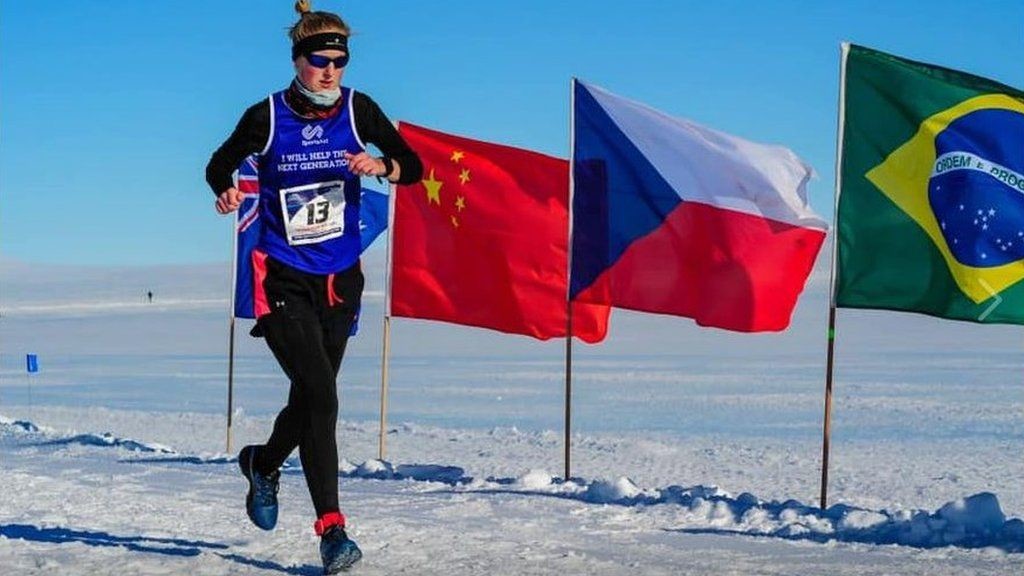
“Ten years ago, I just wanted to get fit and run the London Marathon. Now, marathon running has literally taken me around the world.”
American Mike Wardian claimed the men’s title with a total time of 20:49:30 for seven races.
Competitors gathered for the event in Cape Town on Jan. 29 before traveling to Nova, Antarctica for the first round, where Gill finished second in temperatures as low as -35 degrees Celsius.
Gill won the next race in Cape Town before battling Australian summer temperatures of around 35 degrees Celsius in Perth to extend her winning run.
Four more victories in Dubai, Madrid, Santiago and Miami capped an incredible week for Gill in which she also spent more than 63 hours flying over 88,500km across the globe.
Login to leave a comment
World Marathon Challenge
The World Marathon Challenge ® is a logistical and physical challenge to run seven marathons on seven continents in seven days. Competitors must run the standard 42.2 km marathon distance in Antarctica, Africa, Australia, Asia, Europe, South America and North America within 168 hours, or seven days. The clock starts when the first marathon begins in Antarctica. ...
more...Michael Wardian wins the World Marathon Challenge777 for the second time
Just like that the World Marathon Challenge777 is over. I finished day 7-Miami in 2:53:04-1st overall and an average time under 3 hours for the seven marathons on seven continents over seven days. Today I even ran a negative split.

I can’t even begin to explain how lucky I feel to have had this experience. Thanks to everyone at the WMC, the other athletes, crew, & all the family & friends that cheered us on. It is so incredible to watch everyone grow and discover what they are capable of.
Also huge thanks to the security person in Santiago that found my passport. That would have made things difficult.
(Editors note: Michael Wardian wins again. He didn’t break his world record he set in 2017 but averaging again under three hours is amazing. And he is planning on doing three more marathons in DC over the next three days. He will also be logging in his miles into RTW4 starting March 1.)
by Michael Wardian
Login to leave a comment
World Marathon Challenge
The World Marathon Challenge ® is a logistical and physical challenge to run seven marathons on seven continents in seven days. Competitors must run the standard 42.2 km marathon distance in Antarctica, Africa, Australia, Asia, Europe, South America and North America within 168 hours, or seven days. The clock starts when the first marathon begins in Antarctica. ...
more...Michael Wardian won the Antarctica Marathon the first of seven marathons to be run on seven continents over the next seven days
Michael Wardian, 44, of Arlington, Va. has won the first of seven marathons in the World Marathon Challenge in Antarctica today. Wardian, who won the challenge in 2017 and who holds the record for the fastest average time (2:45:57), finished today in 3:16:43. Running conditions are described as “quite challenging,” though the temperature is only -2 C, considerably warmer than many parts of North America.
Petr Vabrousek of the Czech Republic finished second, in 3:39:02, and Arno Van Triest of the Netherlands was third, in 3:49:55.
Among the women, Kristina Schou Madsen of Denmark finished first, in 3:47:41. Susannah Gill of Great Britain was second, in 3:53:55 and Stephanie Gicquel third, in 4:05:11.
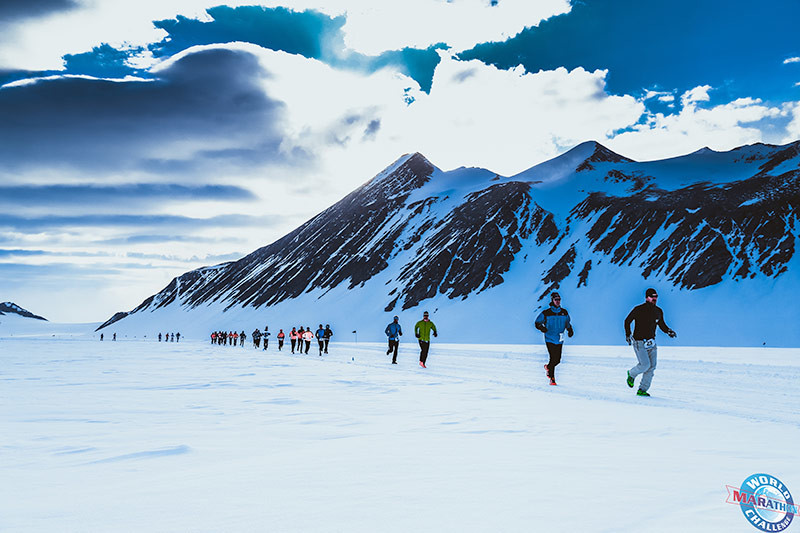
The most recent update mentioned the temperature was becoming cooler, and the remaining participants have been on the course for more than five hours.
The group of 40 participants gathered in Cape Town, South Africa earlier this week to prepare for the challenge. They will return there for their second marathon, which starts tomorrow at 8:00 a.m. local time.
Login to leave a comment
World Marathon Challenge
The World Marathon Challenge ® is a logistical and physical challenge to run seven marathons on seven continents in seven days. Competitors must run the standard 42.2 km marathon distance in Antarctica, Africa, Australia, Asia, Europe, South America and North America within 168 hours, or seven days. The clock starts when the first marathon begins in Antarctica. ...
more...The World Marathon Challenge 7-7-7 starts tomorrow and Michael Wardian is set for the challenge and even beyond
I feel so unbelievably fortunate to have the opportunity to embark on the World Marathon Challenge again tomorrow. The first stage, is Antarctica. The weather is looking pretty good.
I am hoping to push myself beyond anything I have done before so will actually be adding three marathons in DC with Run Pacers at the end for a total of 10 Marathons in 10 days.
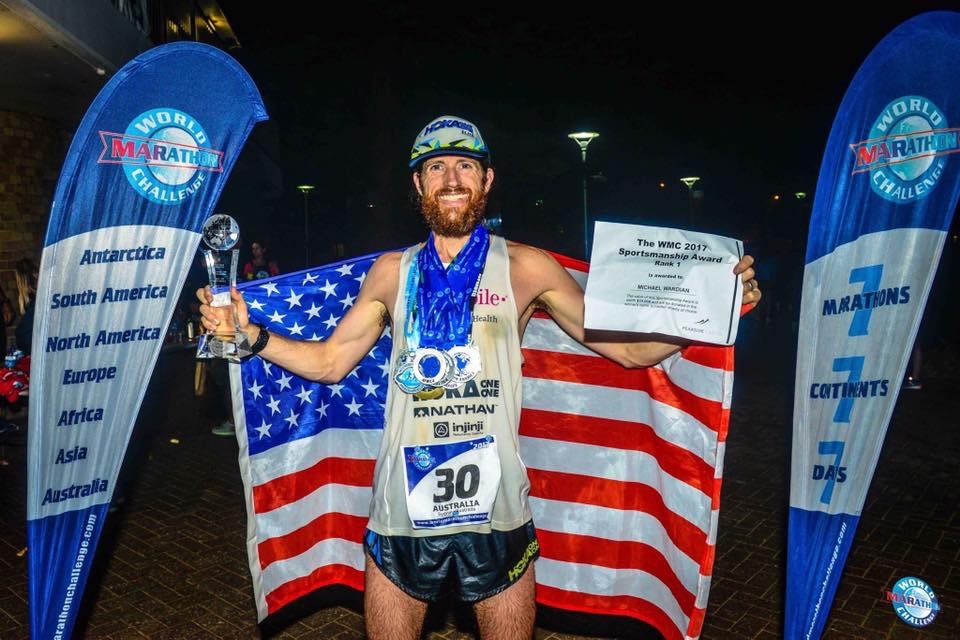
It is always exciting and a bit scary to start something and I can’t thank everyone enough for all the support.
(Two years ago (photo) Michael Wardian set the record for the World Marathon Challenge. He averaged 2:45:57 for each of the seven marathons run on seven continents over seven days. He hopes to better that record.
Like this would be enough for most runners, this year he is going to add three more marathons to the mix after Miami. He is going to do ten Marathons in ten days. We will be following his journey here.)
by Michael Wardian
Login to leave a comment
World Marathon Challenge
The World Marathon Challenge ® is a logistical and physical challenge to run seven marathons on seven continents in seven days. Competitors must run the standard 42.2 km marathon distance in Antarctica, Africa, Australia, Asia, Europe, South America and North America within 168 hours, or seven days. The clock starts when the first marathon begins in Antarctica. ...
more...Shirley Parry is doing the World Marathon Challenge for children who can't run
Shirley Parry from Rancho Palos Verdes, California inspiration and her reason for undertaking this herculean effort is to support the Orthopaedic Institute for Children and, in her words, “to run for children who can’t.”
“My participation in the World Marathon Challenge is designed to raise money and awareness for OIC, which helps children with orthopaedic trauma injuries and musculoskeletal conditions—such as cerebral palsy and scoliosis—regardless of their families’ ability to pay,” she said. “It is an incredible organization; and in the spirit of the 777 marathon, my goal is to raise $77,700 to support this wonderful institution.”
Parry, who recently completed her Ph.D. in education, has been an active member of OIC’s support group, the Charitable Children’s Guild, since 2012. Through volunteer and financial support, the Charitable Children’s Guild and its auxiliaries significantly strengthen the programs at OIC by focusing their attention on ensuring that children get the orthopaedic medical care they need to get the most out of life.

The first leg of the 2019 World Marathon Challenge will take place Jan. 31 in Novo, Antarctica, followed by Cape Town, Perth, Dubai, Madrid and Santiago with the final event in Miami on Feb. 6.
The event is a logistical and physical challenge as participants run 295 kilometers (183 miles) over the 7-day period and spend about 63 hours in the air flying to the next continent. Only 78 men and 28 women have completed the challenge since the event’s inception five years ago.
Parry started preparing for the mind-boggling feat one year ago when she paid the 35,000-euro entry fee (approximately $40,000) and started training to join the select field of 2019 international runners. It will be the ultimate challenge for this 54-year-old who began running in 2011 as a personal commitment to staying healthy. Since that time Parry has finished 16 marathons, including races in Berlin, Paris, Chicago and Los Angeles.
Login to leave a comment
World Marathon Challenge
The World Marathon Challenge ® is a logistical and physical challenge to run seven marathons on seven continents in seven days. Competitors must run the standard 42.2 km marathon distance in Antarctica, Africa, Australia, Asia, Europe, South America and North America within 168 hours, or seven days. The clock starts when the first marathon begins in Antarctica. ...
more...Top two American’s in the Run The World Challenge which just finished are both over 70
The third Run The World Challenge sponsored by My Best Runs (MBR) has finished. The team of 105 active runners, who ran and logged miles in 23 different countries, finished last night (January 5) in 68 days 17 hours and 18 minutes.
The event created by MBR Founder Bob Anderson is all about running and then logging in those miles, posting photos and comments in our runner’s feed to help motivate the team and inspire others. The team has to run/walk and then log in 24,901 miles (40,074k) to complete the challenge.
“This is the distance around the world,” says 71-year-old Bob Anderson who himself ran and logged 297 miles.
“Our team from around the world and ranging in ages from six to 74 did an amazing job,” says Bob. The team logged an average of 362 miles per day and the team had to stay focused for over two months. “With our busy lives that is not easy,” says Lisa Wall a team member.
34-year-old Eliud Lokol Esinyen from Kenya and running most of his miles in Eldoret logged the most miles with 1,298.59. He averaged 18.9 miles daily, many days he worked out three times. Finishing in second was 27-year-old Boaz Kipyego also from Kenya. However he spent about five weeks in Minnesota USA running and racing. He ran and logged in 1,129.41 miles.
First American was 74-year-old Frank Bozanich from Reno Nevada. The previous five time national champion at 50 miles and 100k ran and logged in 1,036.19, good enough for third place. “This is his third time around the world with us,” says Bob. “Many people say that age is only a number and certainly age is not stopping Frank. He told me he is running a lot slower these days because he has put a lot of miles on his body, however. Well done Frank, on an age-graded basis this has to be the best performance,” says Bob.
There were five male runners 70 plus in the top 31 places. In fact 72-year-old Paul Shimon placed sixth overall running most of his 893.06 miles in Winfield Kansas. Like many of the team he had to deal with a lot of issues including the cold, snow and darkness.
Super star Michael Wardian (photo top left) placed 8th overall and ran some of the best times including clocking 2:34:54 at the New York City Marathon. He also ran a tough 50-miler in Israel. He posted 651 miles for his third trip around the world with us. In a few weeks he is going after his world record he set in 2017 at the World Marathon Challenge. That’s running seven marathons in seven days on seven continents.
On the women side, ultra super star 48-year-old Gloria Nasr ran and logged 422.54 miles to place first female. Gloria lives in Paris, France. Some of her miles were also ran in Peru when she travelled there to run an Ultra (photo upper right). She has also run the six stage race through the desert of Morocco in the past.
In second place was Kenya’s Rosaline Nyawira who currently is living, training and racing in South Africa. She ran and logged 394.01 miles.
Third and first America woman was 71-year-old Karen Galati who logged in 223.88 miles. She ran most of her miles in Rancho Palos Verdes, California. As she wrote on her profile “Better late than never to this addicting sport.”

Miles run and logged in the top five countries were USA, Kenya, Palau, South Africa and India. The small country of Palau was in second place the first few weeks. The Run The World Challenge group there lead by Aaron Salvador have so much spirit. Most weekends they get together and run ten to fifteen miles. “You can always count on us to post photos and comments too,” says Aaron.
Our group from South Africa lead by Lize Dumon has just as much spirit. During the challenge Lize completed her first marathon and just got over 200 for the team. The Fourie family in South Africa has to get the top spirit award. The two kids (Michelle age 6 and Jonathan age 7), the mom (Erika) and grandma (Johanna) posted nearly every day and collectively logged in 455 miles. Even the dad joined in many days.
“This was not our best RTW performance but this one has to be our toughest with many challenges,” says Bob. “Many of our team had to deal with early cold and snow in the United States and Canada. Our runners in Palau had to deal with heavy rain and wind. In South Africa it was over 100 degrees many days. In California our runners had to deal with unhealthy air quality for two weeks because of the smoke from the wild fires. A majority of our team had to deal with shorter days and run in the dark. And on top of everything there were three major holidays during Challenge3.
”I am very proud of our whole team. It is hard to stay focused on something like this for over two months but we did it. We made it around the world. For many of us for the third time. There are so many more stories I want to share’” says Bob. “Well done team. Let’s do it again.”
Details for the next Run The World Challenge will be announced soon.
by Bob Anderson Team Caption
Login to leave a comment
Michael Wardian will be running the World Marathon Challenge once again, he holds the world record averaging 2:45:57 for the 7 marathons
The World Marathon Challenge is the only annual event that offers the opportunity to run 7 marathons on 7 continents in 7 days.
The first marathon occurs within the Antarctic Circle on mainland Antarctica and the final marathon takes place in Miami, North America.
Michael Wardian holds the world record set in 2017. His cumulative marathon time of 19:21:36 hrs (or average marathon time of 2:45:57 hrs) is outstanding. He did not compete last year. This year's Challenge starts January 31st.
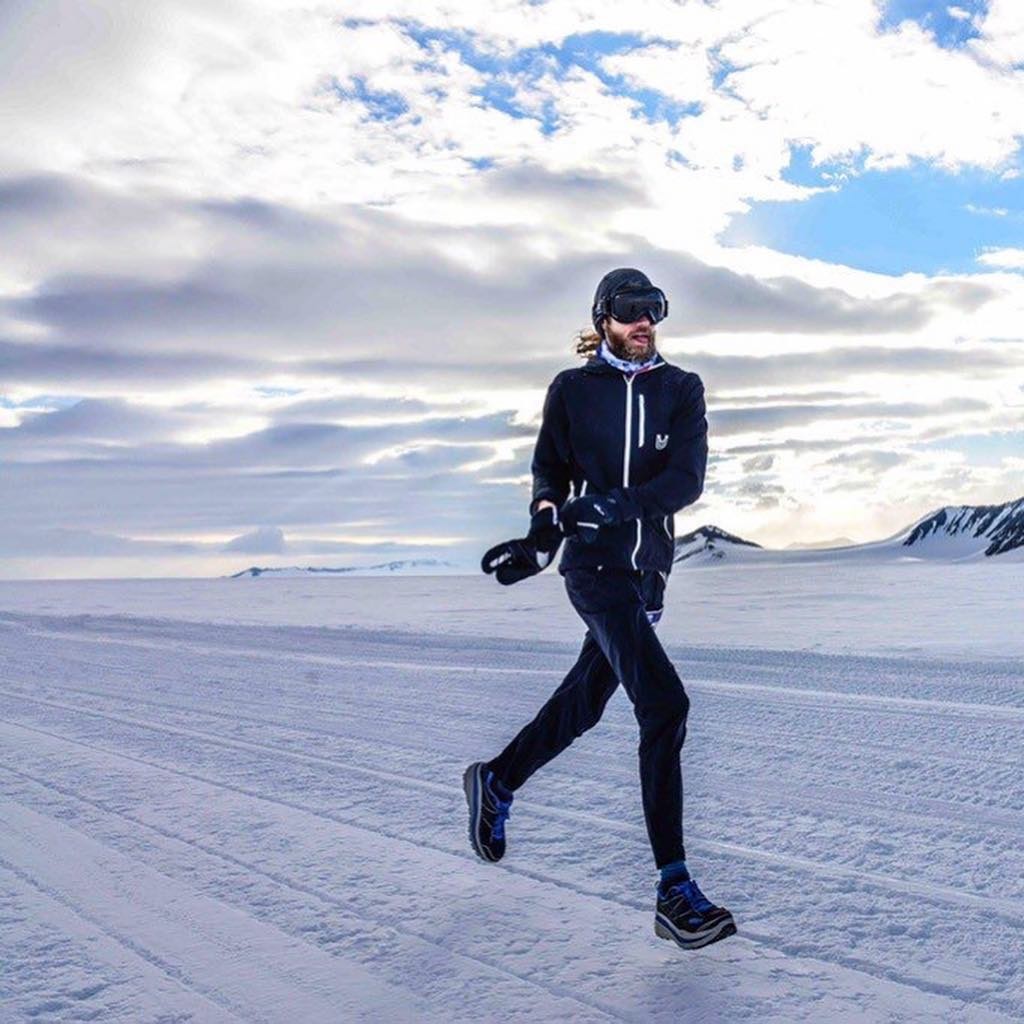
Just today Michael posted on his FB page. "I am beyond excited to announce I have gotten a spot for 2019. Running 7 marathons in 7 days on 7 continents is without a doubt one of the most incredible things I have gotten to do and I cannot wait to see what is possible in 2019.
Thanks Richard Donovan (director of event) and team for allowing me the opportunity and to everyone that supports me. I can’t do these things without you," Michael wrote.
The entry fee for this event is 36,000 Euros ($40,087US).
by
Login to leave a comment
Sarah Reinertsen has been the only amputee to have completed the World Marathon Challenge
For a long time, people with disabilities were defined by what they couldn't do -- Sarah Reinertsen is choosing to be defined by what she can do as an amputee.
She's not just breaking down barriers, she's blazing a trail for all who come after her.
"Growing up, I knew I was different, right, and I was OK with being different but I was not OK with being told I couldn't do something," Reinertsen said.
"I was born with a tissue disease that meant that my thigh bone stopped growing, so although I had two legs, my left leg was extremely shorter than my right leg."
Reinertsen and her family decided to amputate her leg when she was just seven years old. "That was a really hard time for me," she said.
From age 7 to 11, Reinertsen struggled to make peace with her new reality. "I was the only kid in my entire school that had a physical disability that you could see," she said.
"I had coaches that wouldn't let me play with the other kids on the main field. They would make me go kick a soccer ball on the side of the wall by myself and so for many years of my childhood I used to believe that narrative. I used to believe that I wasn't good enough."
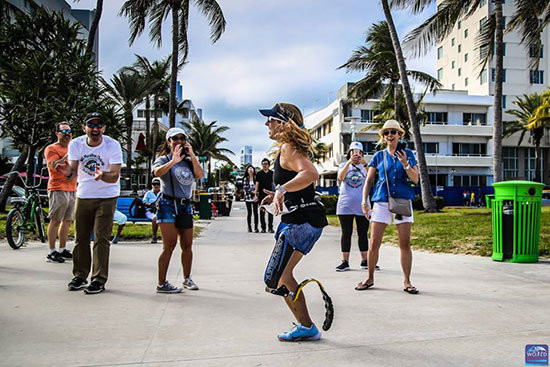
That all changed when she went to one of her dad's 10k races -- like she did most weekends. But this race changed her life.
"There was a woman in the race who was an amputee and she was doing the 10k and I just thought, I had never seen another amputee on one of these road races with my dad and so I just thought 'wow, if she can run in this six mile race, maybe I could run and do a six mile race,'" Reinertsen said.
She's been running ever since. She learned the ins and outs of prosthetics and backed by Nike and Ossur Prosthetics, Reinertsen ran one race after another. But that was just the beginning.
"I knew this guy named Jim McClaren who had done an Iron Man on a prosthetic leg and I was like 'Jim that's so cool that you did an Ironman, I want to do an Iron Man just like you' and he said 'well I don't know of a girl on a prosthetic that can do it' and I was just like 'are you kidding, you do know a girl because you're looking at her, I'm going to do the Iron Man,'" Reinertsen said.
She not only did the Iron Man, she qualified for the world championship in Kona, Hawaii. She was one of only 10 in the physically challenged division and the only woman.
"I just believed that I could do it," she said. That belief has knocked down barriers all over the world.
She's also the only amputee to have completed the World Marathon Challenge. That is running seven marathons on seven continents in seven days.
"It's sort of like a long race with sort of like naps in between," she said.
When she's not taking the athletic world by storm herself, Reinertsen is working with Nike's Innovation Kitchen, designing sportswear that gives independence to anyone who wants it, regardless of the physical challenges they may face.
Login to leave a comment
Keri Mandell, is planning to run seven marathons on all seven continents in seven days
She’s really gearing up to run 183.4 miles in a week, including in Australia, Africa and Antarctica. Something only 103 people have ever done.
For comparison, 536 people have been to outer space. And yet the only thing that scares her about any of this is the airplane. “I don’t really like to fly,” she said. But while that might be true, this 36-year-old yogi, CrossFit coach, marathoner, Ironman triathlete and businesswoman is not really the type to not do what she sets her mind to.
To that end, Mandell is in the process of raising funds so she can participate in the 2020 World Marathon Challenge—a grueling contest. When the specifics aren’t yet known for the 2020 event, locations for the 2019 challenge are: Novo, Antarctica; Cape Town, South Africa; Perth, Australia; Dubai in the UAE; Madrid, Spain; Santiago, Chile; and ending in Miami.
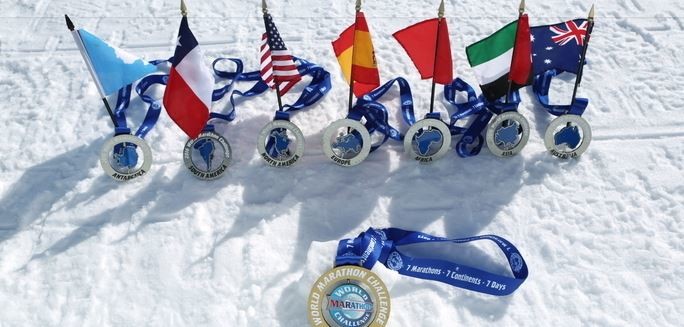
Self described as “wicked competitive” when she wants something and “so Type-A” all the other times, Mandell is no stranger to pushing past limits she used to have.
Login to leave a comment
Boston Marathon Race Director Dave McGillivray is going in for triple bypass surgery on Friday Oct 12
This is a follow up on a story we published September 6. On Friday October 12 Boston Marathon race director Dave McGillivray is going back into Mass General Hospital for open heart triple bypass surgery.
Dave posted this an hour ago on Facebook. "Five years ago yesterday (October 9, 2013) I was diagnosed with “severe coronary artery disease”. The two words that hit me were “disease” and “severe”. How did I get this “disease” and how severe is “severe”? On a dime, I changed everything – what I ate, how I ate, when I ate, sleep habits, stress in my life, started taking dietary supplements and the list goes on and on. In less than a year, I had “reversed” this disease by over 40%.
"I thought I beat it. Some of it was due to heredity, some was self-inflicted. I fixed what I could fix. I did the Ironman Triathlon again, many marathons, my birthday runs and even the World Marathon Challenge (7 marathons in 7 days on 7 continents).
"Once again, I thought I was over the hump. But, recently I learned that genetics trumps everything. I am having triple bypass surgery this Friday Oct 12. As you can imagine, a lot of thoughts (good and not so good) are swirling around my head. However, I’ve come to terms with all this now and realize how fortunate I am that this was caught, that I get a second chance and that I have the best medical care in the country.
I know there was some confusion that I already had this surgery but I only had the angiogram which showed that I needed the surgery. I expect to be in the hospital for 5-7 days and hope to be “shuffling” around the block within 3-4 weeks. I haven’t missed 3-4 days in a row of running in over 50 years.
"I can’t drive for 4-5 weeks – guess I’ll have to ride my bike everywhere...ha. This will be a new experience. I asked my heart surgeon this one question – do you think I will be able to recover enough to jog through my 47th Boston Marathon next April, that is, without pushing it between now and then (I will be a good patient – I hope)? He responded, “I would be extremely disappointed if you couldn’t do it.”
"That is all I needed...let’s get ‘er done. I have a lot more work to get done, miles to run and goals to accomplished. See you all on the other side." (Photo taken when Dave finished his 46th straight Boston Marathon)
by Dave McGillivray
Login to leave a comment
World Record Endurance Marathoner Becca Pizzi will run the Falmouth Road Race
Login to leave a comment
Global Run Challenge Profile: Becca Pizzi has run 7 marathons in 7 days on 7 continents twice and never gets injured
by Bob Anderson
Login to leave a comment
When we arrived in Miami It was like we were coming home from a war
Epic Running Adventures
Login to leave a comment
Dave McGillivray Triumphant in World Marathon Challenge
Race Directors
Login to leave a comment
America's Becca Pizzi is the Women's World Marathon Challenge Champion
Epic Running Adventures
Login to leave a comment
Ireland's Gary Thornton is not new to Extreme Racing
Epic Running Adventures
Login to leave a comment
Becca Pizzi got lost during the sixth marathon in Colombia but still finished second
Login to leave a comment
Five marathons completed in Five Days...Two to go!
Epic Running Adventures
Login to leave a comment
Gary Thornton has won three marathons with four to go by Monday
Epic Running Adventures
Login to leave a comment
70 Degrees Warmer for Second Marathon In Challenge today
Login to leave a comment
American’s Becca Pizzi wins the First Marathon - Six to Go by Feb 5
Epic Running Adventures
Login to leave a comment
Michael Wardian World Marathon Challenge Record Might Be Unbeatable
Epic Running Adventures
Login to leave a comment
World Marathon Challenge 7 Marathons in 7 Days On all 7 Continents starts in a few hours
Login to leave a comment
Robert Owens, 66-year-old plans to run 7 marathons in 7 days on 7 continents
Login to leave a comment
Boston Marathon Race Director Is Running 7 marathons in 7 Days On 7 Continents
Race Directors
Login to leave a comment
4th Annual World Marathon Challenge Starts January 30
Epic Running Adventures
Login to leave a comment
Seven Marathons, 7 days, 7 Continents - Again!
Login to leave a comment





